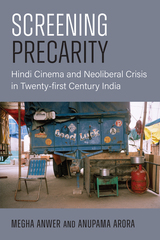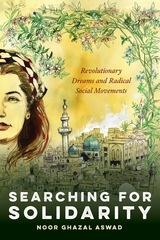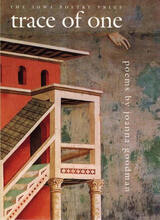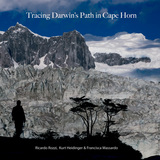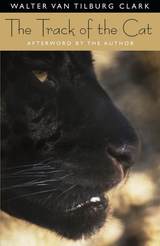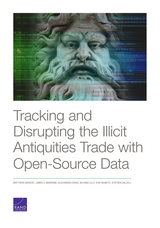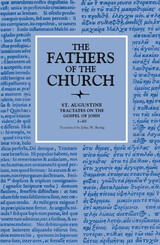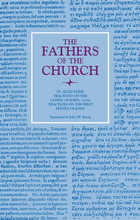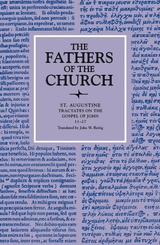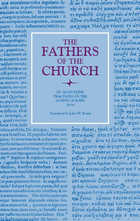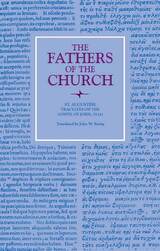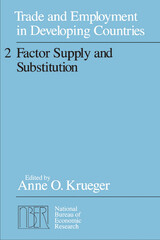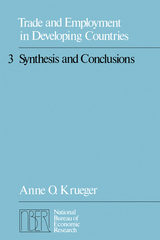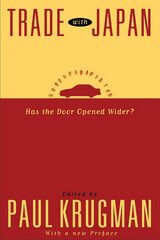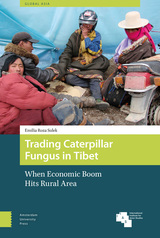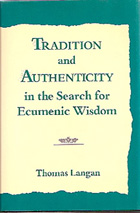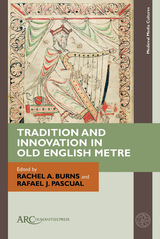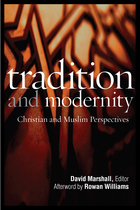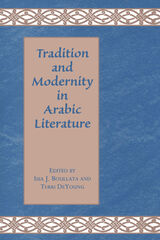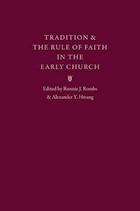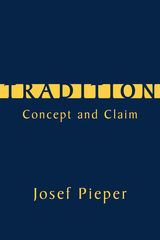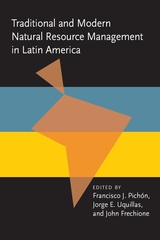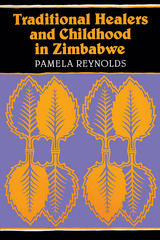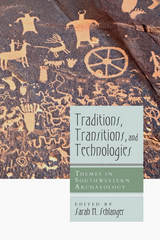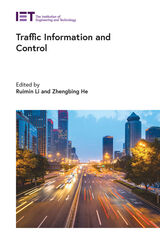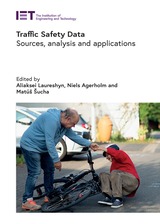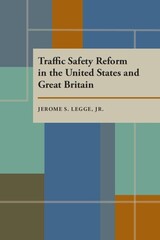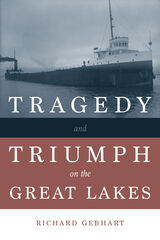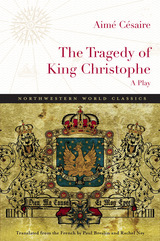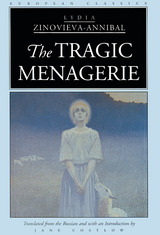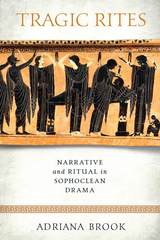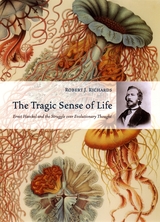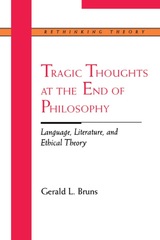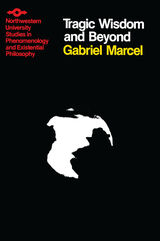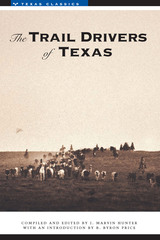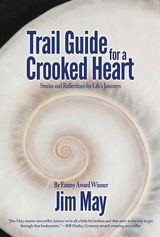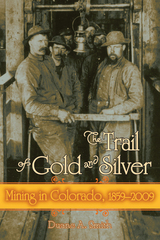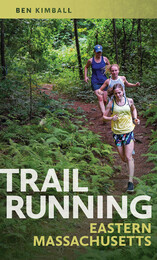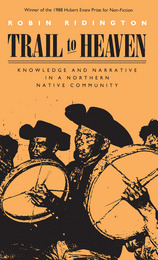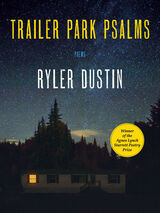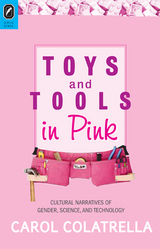 Toys and Tools in Pink: Cultural Narratives of Gender, Science, and Technology
Carol Colatrella
Ohio State University Press, 2011 Science, Technology, Engineering, and Mathematics (STEM) programs work collaboratively to connect education and research at the institutional, national, and global levels. But what role do women play in STEM? In this very timely book, Carol Colatrella responds to the under-representation of women in STEM by considering how gender inflects literary and media representations. In her analysis of fictional and cinematic texts that reference STEM, she investigates cultural tensions concerning sex roles—tensions that continue to be influential in today’s world. Toys and Tools in Pinkanalyzes female character types that recur in fictional narratives in print, on television, and in the cinema: female criminals and detectives, mothers who practice medicine, and “babe scientists,” among others. It also investigates how narrative settings and plots both subsume and influence cultural stereotypes of gender in prescribing salient professional and personal codes of conduct in the STEM fields. Literary and historical case studies in Toys and Tools in Pinkexamine issues of women’s abilities in, access to, and management of science and technology. These issues appear in debates among university faculty, politicians, and public policy analysts concerned about women’s participation in STEM fields. Current analyses of diverse fictions and films demonstrate a continuing interest in women’s place in science and technology and also create new, evolving understandings of femininity and masculinity that revise earlier stereotypes.
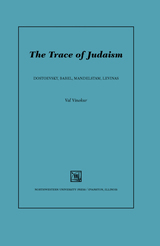 The Trace of Judaism: Dostoevsky, Babel, Mandelstam, Levinas
Val Vinokur
Northwestern University Press, 2009 Recipient, 2008 Guggenheim Fellowship
The defining quality of Russian literature, for most critics, is its ethical seriousness expressed through formal originality. The Trace of Judaism addresses this characteristic through the thought of the Lithuanian-born Franco-Jewish philosopher Emmanuel Levinas. Steeped in the Russian classics from an early age, Levinas drew significantly from Dostoevsky in his ethical thought. One can profitably read Russian literature through Levinas, and vice versa. Vinokur links new readings of Fyodor Dostoevsky, Isaac Babel, and Osip Mandelstam to the work of Levinas, to ask: How does Judaism haunt Russian literature? In what ways is Levinas' ethics as "Russian" as it is arguably "Jewish"? And more broadly, how do ethics and aesthetics inflect each other? Vinokur considers how the encounter with the other invokes responsibilities ethical and aesthetic, and shows how the volatile relationship between ethics and aesthetics--much like the connection between the Russian and Jewish traditions--may be inextricably symbiotic. In an ambitious work that illuminates the writings of all of these authors, Vinokur pursues the implications of this reading for our understanding of the function of literature--its unique status as a sphere in which an ethical vision such as that of Levinas becomes comprehensible.
Trace of One
Joanna Goodman
University of Iowa Press, 2002 In Trace of One,real geographies merge with spiritual ones, just as details of the speaker’s physical and emotional worlds intertwine with the transcendent realms of science, religion, and myth. Joanna Goodman’s poems share a sense of spatial and temporal displacement—they are love poems to a place, whether it be a field, a room, or a paradise—they celebrate their subjects, but they are also poems of grief and solitude. The poems resonate with ethereal echoes paradoxically emitted by an increasingly demystified world in which mechanical explanations for the workings of the human mind and body bump up against the mystery and obliqueness of the soul.
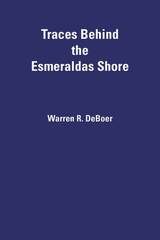 Traces Behind the Esmeraldas Shore
Warren DeBoer
University of Alabama Press, 1996 Although long famous for its antiquities—notably intricate goldwork, elaborate pottery, and earthen mounds—the Santiago-Cayapas region of coastal Ecuador has been relatively neglected from the standpoint of scientific archaeology. Until recently, no sound chronology was available, and even the approximate age of the region's most impressive monument, the large and much-looted site of La Tolita, remained in doubt. Building on evidence obtained during the last decade, this book documents an eventful prehistory for Santiago-Cayapas that spans three millennia. A highlight of this prehistory was the reign of La Tolita as a regional center from 200 B.C. to A.D. 350. Archaeological data from
La Tolita's hinterland indicate a complex and changing social landscape in which La Tolita's hegemony was never absolute nor uncontested. Abundantly illustrated and written in a crisp, witty, and occasionally irreverent style, Traces Behind the Esmeraldas Shore will stimulate debate and rankle interpretive conventions about those social formations that archaeologists gloss as 'chiefdoms.'
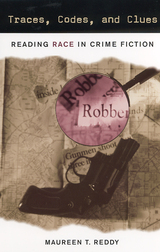 Traces, Codes, and Clues: Reading Race in Crime Fiction
Reddy, Maureen T
Rutgers University Press, 2002 Detective fiction featuring white women and people of color such as Barbara Neelys Blanche White and Walter Mosleys Easy Rawlinshas become tremendously popular. Although they are considered "light reading," mysteries also hold important cultural and social "clues." Much recent scholarly work has demonstrated that race is both a cultural fiction not a biological reality and a central organizing principle of experience. Popular writers are likely to reflect the conventions of their own historical situations. In Traces, Codes, and Clues: Reading Race in Crime Fiction, Maureen T. Reddy explores the ways in which crime fiction manipulates cultural constructions such as race and gender to inscribe dominant cultural discourses. She notes that even those writers who appear to set out to revise outdated conventions repeatedly reproduce the genres most conservative elements. The greatest obstacle to transforming crime fiction, Reddy states, is the fact that the genre itself is deeply embedded in the discourse of white (and male) superiority. There is, therefore, an absolute necessity to break away from that discourse through reversal or other strategies in order to produce work that defies, and thus helps readers to defy, the dominant ideology of race.
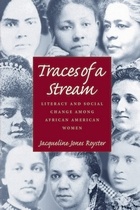 Traces Of A Stream: Literacy and Social Change Among African American Women
Jacqueline Jones Royster
University of Pittsburgh Press, 2000
Traces of a Stream offers a unique scholarly perspective that merges interests in rhetorical and literacy studies, United States social and political theory, and African American women writers. Focusing on elite nineteenth-century African American women who formed a new class of women well positioned to use language with consequence, Royster uses interdisciplinary perspectives (literature, history, feminist studies, African American studies, psychology, art, sociology, economics) to present a well-textured rhetorical analysis of the literate practices of these women. With a shift in educational opportunity after the Civil War, African American women gained access to higher education and received formal training in rhetoric and writing. By the end of the nineteenth-century, significant numbers of African American women operated actively in many public arenas.
In her study, Royster acknowledges the persistence of disempowering forces in the lives of African American women and their equal perseverance against these forces. Amid these conditions, Royster views the acquisition of literacy as a dynamic moment for African American women, not only in terms of their use of written language to satisfy their general needs for agency and authority, but also to fulfill socio-political purposes as well.
Traces of a Stream is a showcase for nineteenth-century African American women, and particularly elite women, as a group of writers who are currently underrepresented in rhetorical scholarship. Royster has formulated both an analytical theory and an ideological perspective that are useful in gaining a more generative understanding of literate practices as a whole and the practices of African American women in particular. Royster tells a tale of rhetorical prowess, calling for alternative ways of seeing, reading, and rendering scholarship as she seeks to establish a more suitable place for the contributions and achievements of African American women writers.
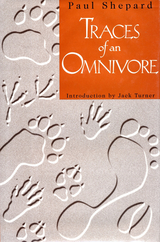 Traces of an Omnivore
Paul Shepard
Island Press, 1996 Paul Shepard is one of the most profound and original thinkers of our time. He has helped define the field of human ecology, and has played a vital role in the development of what have come to be known as environmental philosophy, ecophilosophy, and deep ecology -- new ways of thinking about human-environment interactions that ultimately hold great promise for healing the bonds between humans and the natural world. Traces of an Omnivore presents a readable and accessible introduction to this seminal thinker and writer. Throughout his long and distinguished career, Paul Shepard has addressed the most fundamental question of life: Who are we? An oft-repeated theme of his writing is what he sees as the central fact of our existence: that our genetic heritage, formed by three million years of hunting and gathering remains essentially unchanged. Shepard argues that this, "our wild Pleistocene genome," influences everything from human neurology and ontogeny to our pathologies, social structure, myths, and cosmology. While Shepard's writings travel widely across the intellectual landscape, exploring topics as diverse as aesthetics, the bear, hunting, perception, agriculture, human ontogeny, history, animal rights, domestication, post-modern deconstruction, tourism, vegetarianism, the iconography of animals, the Hudson River school of painters, human ecology, theoretical psychology, and metaphysics, the fundamental importance of our genetic makeup is the predominant theme of this collection. As Jack Turner states in an eloquent and enlightening introduction, the essays gathered here "address controversy with an intellectual courage uncommon in an age that exults the relativist, the skeptic, and the cynic. Perused with care they will reward the reader with a deepened appreciation of what we so casually denigrate as primitive life -- the only life we have in the only world we will ever know."
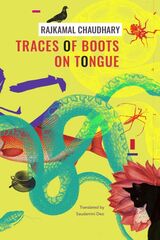 Traces of Boots on Tongue: and Other Stories
Rajkamal Chaudhary
Seagull Books, 2023 A literary glimpse into the early decades of independent India.
Drawing influences from Indian folktales, French existentialism, and the Bengali Hungryalist movement, Rajkamal Chaudhary’s œuvre is like a secret back alley in an old city—not completely forgotten but existing only for the few. Even though Chaudhary also wrote in Maithili and Bengali, it was his writings in Hindi that established him as the bold new experimentalist of Indian literature. His India of the 1950 and 60s is populated with hopeless literature professors, scattered alcohol bottles, prostitutes, hysteria patients, and sell-out painters. His unconventional life and writing place him outside the mainstream, and so he remains as uncategorizable as the characters and lives he wrote about. Bringing together twelve of his most representative short stories, translated for the first time in English, Traces of Boots on Tongue and Other Stories allows a glimpse into the early decades of independent India and its weariness, which many readers will find in today’s India as well.
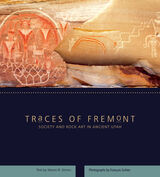 Traces of Fremont: Society and Rock Art in Ancient Utah
Steven R Simms
University of Utah Press, 2010 Fremont is a culture (ca. 300–1300 A.D.) first defined by archaeologist Noel Morss in 1928 based on characteristics unique to the area. Initially thought to be a simple socio-political system, recent reassessments of the Fremont assume a more complex society. This volume places Fremont rock art studies in this contemporary context. Author Steven Simms offers an innovative model of Fremont society, politics, and worldview using the principles of analogy and current archaeological evidence. Simms takes readers on a trip back in time by describing what a typical Fremont hamlet or residential area might have looked like a thousand years ago, including the inhabitants' daily activities. François Gohier's captivating photographs of Fremont art and artifacts offer an engaging complement to Simms's text, aiding us in our understanding of the lives of these ancient people.
Winner of the Utah Book Award in Nonfiction.
Winner of the Society for American Archaeology Book Award for Public Audience.
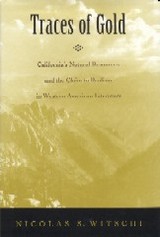 Traces of Gold: California's Natural Resources and the Claim to Realism in Western American Literature
Nicolas Witschi
University of Alabama Press, 2001 Artfully demonstrates the linkage of American literary realism to the texts, myths, and resources of the American West
From Gold Rush romances to cowboy Westerns, from hard-boiled detective thrillers to nature writing, the American West has long been known mainly through hackneyed representations in popular genres. But a close look at the literary history of the West reveals a number of writers who claim that their works represent the “real” West. As Nicolas Witschi shows, writers as varied as Bret Harte, John Muir, Frank Norris, Mary Austin, and Raymond Chandler have used claims of textual realism to engage, replicate, or challenge commonly held assumptions about the West, while historically acknowledged realists like William Dean Howells and Mark Twain have often relied on genre-derived impressions about the region. The familiar association of the West with nature and the “great outdoors” implies that life in the West affords an unambiguous relationship with an unalloyed, non-human, real nature. But through a combination of textual scholarship, genre criticism, and materialist cultural studies, Witschi complicates this notion of wide-open spaces and unfettered opportunity. The West has been the primary source of raw materials for American industrial and economic expansion, especially between the California Gold Rush and World War II, and Witschi argues that the writers he examines exist within the intersections of cultural and material modes of production. Realistic depictions of Western nature, he concludes, must rely on the representation of the extraction of material resources like minerals, water, and oil. With its forays into ecocriticism and cultural studies, Traces of Gold will appeal to students and scholars of American literature, American studies, and western history.
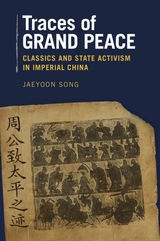 Traces of Grand Peace: Classics and State Activism in Imperial China
Jaeyoon Song
Harvard University Press, 2015 Since the second century BC the Confucian Classics, endorsed by the successive ruling houses of imperial China, had stood in tension with the statist ideals of “big government.” In Northern Song China (960–1127), a group of reform-minded statesmen and thinkers sought to remove the tension between the two by revisiting the highly controversial classic, the Rituals of Zhou: the administrative blueprint of an archaic bureaucratic state with the six ministries of some 370 offices staffed by close to 94,000 men. With their revisionist approaches, they reinvented it as the constitution of state activism. Most importantly, the reform-councilor Wang Anshi’s (1021–1086) new commentary on the Rituals of Zhou rose to preeminence during the New Policies period (ca. 1068–1125), only to be swept into the dustbin of history afterward. By reconstructing his revisionist exegesis from its partial remains, this book illuminates the interplay between classics, thinkers, and government in statist reform, and explains why the uneasy marriage between classics and state activism had to fail in imperial China.
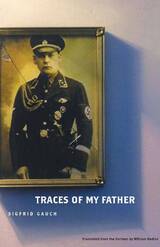 Traces of My Father
William Radice
Northwestern University Press, 2002 I recall the long solo journeys when I would think about my father: the Oberfeldarzt (Retired), the Reichsamtsleiter in the SS, the adjutant to Heinrich Himmler, the author of New Foundations for Racial Research, the man described by the chief prosecutor in the Eichmann trial as a 'desk murderer,' the man I knew: my father.
In 1979 Sigfrid Gauch published the groundbreaking Vaterspuren, (Traces of My Father), the first of the so-called father books about the relationships of postwar Germans with their parents. It inspired a new genre in German literature. Ever since, such writings have contributed greatly to Germany's ongoing struggle to overcome its own past.
This autobiographical novel is Gauch's attempt to come to terms with his father, Hermann Gauch, a physician who had joined the National Socialists in the 1920s, wrote six books of "race research" as a member of the SS, and to his dying day remained an unrepentant Nazi. The story alternates between the images of the elder Gauch's death and burial and the author's memories of childhood and adolescence.
Unlike many of the father books, however, Traces of My Father is less a political attack than a personal journey. Gauch, though honest about his father's monstrous actions and ideas, does not shirk their shared emotional bond. The result is a poignant attempt by a son to relive his father's notorious life and in doing so free himself from the man's influence.
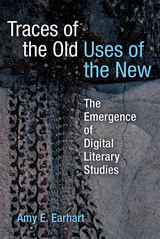 Traces of the Old, Uses of the New: The Emergence of Digital Literary Studies
Amy E. Earhart
University of Michigan Press, 2015 Digital Humanities remains a contested, umbrella term covering many types of work in numerous disciplines, including literature, history, linguistics, classics, theater, performance studies, film, media studies, computer science, and information science. In Traces of the Old, Uses of the New: The Emergence of Digital Literary Studies, Amy Earhart stakes a claim for discipline-specific history of digital study as a necessary prelude to true progress in defining Digital Humanities as a shared set of interdisciplinary practices and interests. Traces of the Old, Uses of the New focuses on twenty-five years of developments, including digital editions, digital archives, e-texts, text mining, and visualization, to situate emergent products and processes in relation to historical trends of disciplinary interest in literary study. By reexamining the roil of theoretical debates and applied practices from the last generation of work in juxtaposition with applied digital work of the same period, Earhart also seeks to expose limitations in need of alternative methods—methods that might begin to deliver on the early (but thus far unfulfilled) promise that digitizing texts allows literature scholars to ask and answer questions in new and compelling ways. In mapping the history of digital literary scholarship, Earhart also seeks to chart viable paths to its future, and in doing this work in one discipline, this book aims to inspire similar work in others.
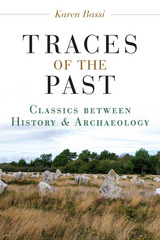 Traces of the Past: Classics between History and Archaeology
Karen Bassi
University of Michigan Press, 2016 What are we doing when we walk into an archaeological museum or onto an archaeological site? What do the objects and features we encounter in these unique places mean and, more specifically, how do they convey to us something about the beliefs and activities of formerly living humans? In short, how do visible remains and ruins in the present give meaning to the human past? Karen Bassi addresses these questions through detailed close readings of canonical works spanning the archaic to the classical periods of ancient Greek culture, showing how the past is constituted in descriptions of what narrators and characters see in their present context. She introduces the term protoarchaeological to refer to narratives that navigate the gap between linguistic representation and empirical observation—between words and things—in accessing and giving meaning to the past. Such narratives invite readers to view the past as a receding visual field and, in the process, to cross the disciplinary boundaries that divide literature, history, and archaeology. Aimed at classicists, literary scholars, ancient historians, cultural historians, and archaeological theorists, the book combines three areas of research: time as a feature of narrative structure in literary theory; the concept of “the past itself” in the philosophy of history; and the ontological status of material objects in archaeological theory. Each of five central chapters explores how specific protoarchaeological narratives—from the fate of Zeus’ stone in Hesiod’s Theogony to the contest between words and objects in Aristophanes’ Frogs—both expose and attempt to bridge this gap. Throughout, the book serves as a response to Herodotus’ task in writing the Histories, namely, to ensure that “the past deeds of men do not fade with time.”
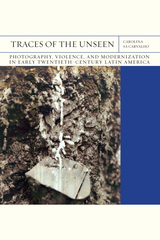 Traces of the Unseen: Photography, Violence, and Modernization in Early Twentieth-Century Latin America
Carolina Sá Carvalho
Northwestern University Press, 2023 Winner of the 2024 Roberto Reis Book Award
Winner of the LASA Environment Section Best Book of 2023
Winner of the LASA Amazonian Studies Section Best Book of 2024
Co-Winner of the LASA Book Award for the Visual Culture Studies 2024
A richly illustrated examination of photography as a technology for documenting, creating, and understanding the processes of modernization in turn-of-the-century Brazil and the Amazon
Photography at the turn of the twentieth century was not only a product of modernity but also an increasingly available medium to chronicle the processes of modernization. Traces of the Unseen: Photography, Violence, and Modernization in Early Twentieth-Century Latin America situates photography’s role in documenting the destruction wrought by infrastructure development and extractive capitalist expansion in the Amazon and outside the Brazilian metropole. Combining formal analysis of individual photographs with their inclusion in larger multimedia assemblages, Carolina Sá Carvalho explores how this visual evidence of violence was framed, captioned, cropped, and circulated. As she explains, this photographic creation and circulation generated a pedagogy of the gaze with which increasingly connected urban audiences were taught what and how to see: viewers learned to interpret the traces of violence captured in these images within the larger context of modernization.
Traces of the Unseen draws on works by Flavio de Barros, Euclides da Cunha, Roger Casement, Claude Lévi-Strauss, and Mario de Andrade to situate an unruly photographic body at the center of modernity, in all its disputed meanings. Moreover, Sá Carvalho locates historically specific practices of seeing within the geopolitical peripheries of capitalism. What emerges is a consideration of photography as a technology through which modern aspirations, moral inclinations, imagined futures, and lost pasts were represented, critiqued, and mourned.
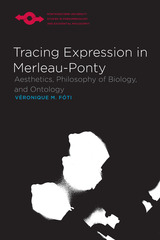 Tracing Expression in Merleau-Ponty: Aesthetics, Philosophy of Biology, and Ontology
Véronique M. Fóti
Northwestern University Press, 2012 The French philosopher Renaud Barbaras remarked that late in Maurice Merleau-Ponty’s career, “The phenomenology of perception fulfills itself as a philosophy of expression.” In Tracing Expression in Merleau-Ponty: Aesthetics, Philosophy of Biology, and Ontology, Véronique M. Fótiaddresses the guiding yet neglected theme of expression in Merleau-Ponty’s thought. She traces Merleau-Ponty’s ideas about how individuals express creative or artistic impulses through his three essays on aesthetics, his engagement with animality and the “new biology” in the second of his lecture courses on nature of 1957–58, and in his late ontology, articulated in 1964 in the fragmentary text of Le visible et l’invisible (The Visible and the Invisible). With the exception of a discussion of Merleau-Ponty’s 1945 essay “Cezanne’s Doubt,” Fóti engages with Merleau-Ponty’s late and final thought, with close attention to both his scientific and philosophical interlocutors, especially the continental rationalists. Expression shows itself, in Merleau-Ponty’s thought, to be primordial, and this innate and fundamental nature of expression has implications for his understanding of artistic creation, science, and philosophy.
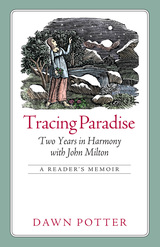 Tracing Paradise: Two Years in Harmony with John Milton
Dawn Potter
University of Massachusetts Press, 2009 One winter morning, poet Dawn Potter sat down at her desk in Harmony, Maine, and began copying out the opening lines of John Milton's Paradise Lost. Her intent was to spend half an hour with a poem she had never liked, her goal to transcribe a page or two. Maybe she would begin to appreciate the poet's art, though she had no real expectations that the exercise would change her mind about the poem. Yet what began as a whim turned rapidly into an obsession, and soon Potter was immersed in a strange and unexpected project: she found herself copying out every single word of Milton's immense, convoluted epic.
Tracing Paradise: Two Years in Harmony with John Milton is her memoir of that long task. Over the course of twelve chapters, Potter explores her very personal response to Milton and Paradise Lost, tracing the surprising intersections between a seventeenth-century biblical epic and the routine joys and tragedies of domestic life in contemporary rural Maine. Curious, opinionated, and eager, she engages with the canon on mutable, individual terms. Though she writes perceptively about the details and techniques of Milton's art, always her reactions are linked to her present-tense experiences as a poet, small-time farmer, family member, and citizen of a poor and beleaguered north-country town.
A skilled and entertaining writer, Potter is also a wide-ranging and sophisticated reader. Yet her memoir is not a scholarly treatise: her enthusiasms and misgivings about both Milton and Paradise Lost ebb and flow with the days. Tracing Paradise reminds us that close engagement with another artist's task may itself be a form of creation. Above all, Potter's memoir celebrates one reader's difficult yet transformative love affair with Milton's glorious, irritating, inscrutable masterpiece.
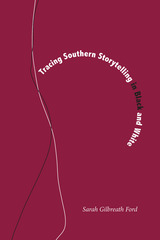 Tracing Southern Storytelling in Black and White
Sarah Gilbreath Ford
University of Alabama Press, 2014 Explores how both black and white southern writers such as Joel Chandler Harris, Charles Chesnutt, Zora Neale Hurston, William Faulkner, Eudora Welty, Ralph Ellison, Ellen Douglas, and Ernest Gaines have employed oral storytelling in literature
Tracing Southern Storytelling in Black and White is a study of the historical use of oral storytelling by southern writers in written works. In each chapter, Sarah Gilbreath Ford pairs a white and an African American writer to highlight points of confluence in black and white southern oral traditions. She argues that the connections between white and African American southern writers run deeper than critics have yet explored, and she uses textual comparisons to examine the racial mixing of oral culture.
On porches, in kitchens, and on the pages of their work, black and white southerners exchanged not just stories but strategies for telling stories. As a boy, Joel Chandler Harris listened to the stories of African American slaves, and he devised a framework to turn the oral stories into written ones. Harris’s use of the frame structure influenced how Charles Chesnutt recorded oral stories, but it led Alice Walker to complain that her heritage had been stolen. Mark Twain listened to African American storytellers as a child. His use of oral dialects then impacts how Ralph Ellison and William Faulkner employ oral storytelling and how Toni Morrison later writes in response to Faulkner. The interactions are not linear, not a chain of influence, but a network of interactions, borrowings, and revisions.
Ford’s pairings lead to new readings that reveal how the writers employ similar strategies in their narratives, due in part to shared historical context. While Zora Neale Hurston and William Faulkner, for example, use oral storytelling in the 1930s to examine the fear of racial mixing, Ellen Douglas and Ernest Gaines use it in the 1970s to build bridges between the races. Exploring the cultural crossing that occurs in the use of oral storytelling, Ford offers a different view of this common strategy in southern narrative and a new perspective on how culture is shared.
 Tracing the Impact of First-Year Writing: Identity, Process, and Transfer at a Public University
Laura Wilder
Utah State University Press, 2024 Tracing the Impact of First-Year Writing presents the results of a large-scale longitudinal study of college writers that explores the impact of a required first-year writing course with a comparative approach not previously available. Over five years Laura Wilder conducted 143 interviews with, and collected 774 pages of writing from, 58 students, half of whom had taken a new first-year writing course and half who had not. Wilder found that while in many ways the experiences of both groups are comparable—demonstrating how students receive valuable educations in rhetoric and writing from a variety of sources beyond a first-year writing course—students who took the first-year writing course were much more likely to identify as writers. This identification supported students’ use of writing in powerfully generative and knowledge-building ways that they carried with them long after the course into other appropriate contexts.
In contrast to previous longitudinal studies of college writers undertaken at institutions with high prestige and resources, Tracing the Impact of First-Year Writing explores the role of writing at a regional public university and documents how students’ experiences with writing can be highly divergent across the curriculum and unequal across campuses. Additionally, this book includes the voices of students who do not identify as capable writers and have strongly negative emotional reactions to writing and writing instruction and adds empirical support to innovative calls in the field to transform the first-year writing course into one that inspires students to reflectively consider writing itself.
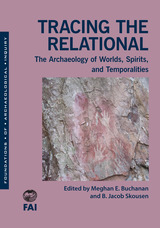 Tracing the Relational: The Archaeology of Worlds, Spirits, and Temporalities
Meghan E. Buchanan and B. Jacob Skousen
University of Utah Press, 2015 Tracing the Relational examines the recent emergence of relational ontologies in archaeological interpretation and how this perspective can help archaeologists better understand the past. Traditional representational approaches reflect modern or Western perspectives, which focus on the individual and see the world in terms of dichotomies that separate culture and nature, human and object, sacred and secular. In contrast, ancient societies saw themselves as connected to and entangled with other human and nonhuman entities. In order to gain deeper insight into how people in the ancient world lived, experienced, and negotiated their lives, contributors argue, archaeologists must explore the myriad relationships and entanglements between humans and other beings, places, and things. As contributors unravel these relationships, they demonstrate that movement is an inherent feature of these relational webs and is the driving force behind a continually shifting reality. Chapters focus on various regions and time periods throughout the Americas, tracing how movements between other-worldly dimensions, spirits and deities, and temporalities were integral to everyday life.
 Track Changes: A Literary History of Word Processing
Matthew G. Kirschenbaum
Harvard University Press, 2016 The story of writing in the digital age is every bit as messy as the ink-stained rags that littered the floor of Gutenberg’s print shop or the hot molten lead of the Linotype machine. During the period of the pivotal growth and widespread adoption of word processing as a writing technology, some authors embraced it as a marvel while others decried it as the death of literature. The product of years of archival research and numerous interviews conducted by the author, Track Changes is the first literary history of word processing.
Matthew Kirschenbaum examines how the interests and ideals of creative authorship came to coexist with the computer revolution. Who were the first adopters? What kind of anxieties did they share? Was word processing perceived as just a better typewriter or something more? How did it change our understanding of writing?
Track Changes balances the stories of individual writers with a consideration of how the seemingly ineffable act of writing is always grounded in particular instruments and media, from quills to keyboards. Along the way, we discover the candidates for the first novel written on a word processor, explore the surprisingly varied reasons why writers of both popular and serious literature adopted the technology, trace the spread of new metaphors and ideas from word processing in fiction and poetry, and consider the fate of literary scholarship and memory in an era when the final remnants of authorship may consist of folders on a hard drive or documents in the cloud.
The Track Of The Cat
Walter Van Tilburg Clark
University of Nevada Press, 1993 Clark's classic novel is a compelling tale of four men who fear a marauding mountain lion but swear to conquer it. It is also a story of violent human emotions--love and hate, hope and despair--and of the perpetual conflict between good and evil.
Tracking and Disrupting the Illicit Antiquities Trade with Open Source Data
Matthew Sargent
RAND Corporation, 2020 The illicit antiquities market is fueled by a well-documented rise in looting at archaeological sites and a fear that the proceeds of such looting may be financing terrorism or rogue states. In this report, the authors compile evidence from numerous open sources to outline the major policy-relevant characteristics of that market and to propose the way forward for developing policies intended to disrupt illicit networks.
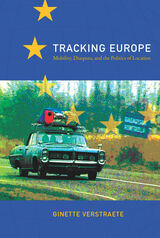 Tracking Europe: Mobility, Diaspora, and the Politics of Location
Ginette Verstraete
Duke University Press, 2009 Tracking Europe is a bold interdisciplinary critique of claims regarding the free movement of goods, people, services, and capital throughout Europe. Ginette Verstraete interrogates European discourses on unlimited movement for everyone and a utopian unity-in-diversity in light of contemporary social practices, cultural theories, historical texts, media representations, and critical art projects. Arguing against the persistent myth of borderless travel, Verstraete shows the discourses on Europe to be caught in an irresolvable contradiction on a conceptual level and in deeply unsettling asymmetries on a performative level. She asks why the age-old notion of Europe as a borderless space of mobility goes hand-in-hand with the at times violent containment and displacement of people. In demystifying the old and new Europe across a multiplicity of texts, images, media, and cultural practices in various times and locations, Verstraete lays bare a territorial persistence in the European imaginary, one which has been differently tied up with the politics of inclusion and exclusion. Tracking Europe moves from policy papers, cultural tourism, and migration to philosophies of cosmopolitanism, nineteenth-century travel guides, electronic surveillance at the border, virtual pilgrimages to Spain, and artistic interventions in the Balkan region. It is a sustained attempt to situate current developments in Europe within a complex matrix of tourism, migration, and border control, as well as history, poststructuralist theory, and critical media and art projects.
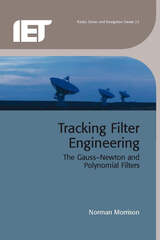 Tracking Filter Engineering: The Gauss-Newton and polynomial filters
Norman Morrison
The Institution of Engineering and Technology, 2013 This book provides a complete discussion of the Gauss-Newton filters, including all necessary theoretical background. This book also covers the expanding and fading memory polynomial filters based on the Legendre and Laguerre orthogonal polynomials, and how these can serve as pre-filters for Gauss-Newton. Of particular interest is a new approach to the tracking of manoeuvring targets that the Gauss-Newton filters make possible. Fourteen carefully constructed computer programs demonstrate the use and power of Gauss-Newton and the polynomial filters. Two of these also include Kalman and Swerling filters in addition to Gauss-Newton, all three of which process identical data that have been pre-filtered by polynomial filters. These two programs demonstrate Kalman and Swerling instability, to which Gauss-Newton is immune, and also the fact that if an attempt is made to forestall Kalman/Swerling instability by the use of a Q matrix, then they cease to be Cramér-Rao consistent and become less accurate than the always Cramér-Rao consistent Gauss-Newton filters.
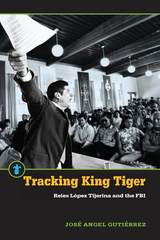 Tracking King Tiger: Reies López Tijerina and the FBI
José Angel Gutiérrez
Michigan State University Press, 2019 Reies López Tijerina, one of the Four Horsemen of the Chicano Movement, led the land grant struggle by Hispanos in the 1960s to recover the lands granted to their ancestors by Spain and Mexico and then guaranteed by the Treaty of Guadalupe Hidalgo. In his struggle, Tijerina became the target of local and state law enforcement officials in New Mexico and the FBI nationwide. José Angel Gutiérrez meticulously examines thousands of pages of FBI documents, interview transcripts, newspaper reports, and other written accounts on Tijerina and the Alianza Federal de Pueblos Libres, the organization of land grant claimants led by Tijerina in New Mexico. The primary source materials that document the U.S. government’s attempts to destroy Tijerina, his family, and his followers complement the secondary literature on Tijerina and his efforts as the premier leader of the land grant recovery movement. Threaded through the volume are glimpses into the special personal relationship between Tijerina and the author.
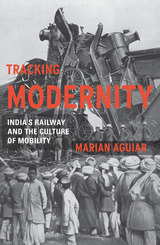 Tracking Modernity: India’s Railway and the Culture of Mobility
Marian Aguiar
University of Minnesota Press, 2010 From Mohandas Gandhi’s nineteenth-century tour in a third-class compartment to the recent cinematic shenanigans of Wes Anderson’s The Darjeeling Limited, the railway has been one of India’s most potent emblems of modern life. In the first in-depth analysis of representations of the Indian railway, Marian Aguiar interprets modernity through the legacy of this transformative technology.
Since the colonial period in India, the railway has been idealized as a rational utopia—a moving box in which racial and class differences might be amalgamated under a civic, secular, and public order. Aguiar charts this powerful image into the postcolonial period, showing how the culture of mobility exposes this symbol of reason as surprisingly dynamic and productive. Looking in turn at the partition of India, labor relations, rituals of travel, works of literature and film, visual culture, and the Mumbai train bombings of 2006, Aguiar finds incongruities she terms “counternarratives of modernity” to signify how they work both with and against the dominant rhetoric. Revealing railways as a microcosm of tensions within Indian culture, Aguiar demonstrates how their representations have challenged prevailing ideas of modernity.
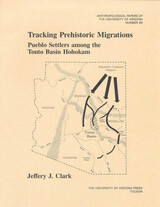 Tracking Prehistoric Migrations: Pueblo Settlers among the Tonto Basin Hohokam
Jeffery J. Clark
University of Arizona Press, 2001 This monograph takes a fresh look at migration in light of the recent resurgence of interest in this topic within archaeology. The author develops a reliable approach for detecting and assessing the impact of migration based on conceptions of style in anthropology. From numerous ethnoarchaeological and ethnohistoric case studies, material culture attributes are isolated that tend to be associated only with the groups that produce them. Clark uses this approach to evaluate Puebloan migration into the Tonto Basin of east-central Arizona during the early Classic period (A.D. 1200-1325), focusing on a community that had been developing with substantial Hohokam influence prior to this interval. He identifies Puebloan enclaves in the indigenous settlements based on culturally specific differences in the organization of domestic space and in technological styles reflected in wall construction and utilitarian ceramic manufacture.
Puebloan migration was initially limited in scale, resulting in the co-residence of migrants and local groups within a single community. Once this co-residence settlement pattern is reconstructed, relations between the two groups are examined and the short-term and long-term impacts of migration are assessed. The early Classic period is associated with the appearance of the Salado horizon in the Tonto Basin. The results of this research suggest that migration and co-residence was common throughout the basins and valleys in the region defined by the Salado horizon, although each local sequence relates a unique story. The methodological and theoretical implications of Clark's work extend well beyond the Salado and the Southwest and apply to any situation in which the scale and impact of prehistoric migration are contested.
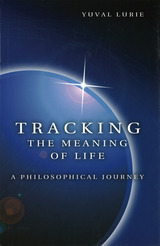 Tracking the Meaning of Life: A Philosophical Journey
Yuval Lurie
University of Missouri Press, 2006
What intelligent person has never pondered the meaning of life? For Yuval Lurie, this is more than a puzzling philosophical question; it is a journey, and in this book he takes readers on a search that ranges from ancient quests for the purpose of life to the ruminations of postmodern thinkers on meaning. He shows that the question about the meaning of life expresses philosophical puzzlement regarding life in general as well as personal concern about one’s own life in particular.
Lurie traces the emergence of this question as a modern philosophical quandary, riddled with shifts and turns that have arisen over the years in response to it. Tracking the Meaning of Life is written as a critical philosophical investigation stretching over several traditions, such as analytic philosophy, phenomenology, and existentialism. It maps out a journey that explores pivotal responses to this question, drawing especially on the thought of Tolstoy, Wittgenstein, Sartre, and Camus and exploring in depth the insights these thinkers offer regarding their own difficulties concerning the meaning of life.
In the book’s four sections, Lurie discusses Tolstoy’s challenge to experience the religious and transcendental meaning of life by choosing a simple, hardworking existence; Wittgenstein’s focus on ethics and discovering the sense of the world, his conclusion that the question of the meaning of life makes no sense, and his turning to experience the mystical aspect of the world; Sartre’s positing of freedom as the basis of human life, stipulating a personal answer to the question of the meaning of life; and Camus’ view of the absurdity of life, unalleviated by any personal meaning. Guided by these views, Lurie imparts new insight to ideas that underlie our concern with life’s meaning, such as the difference between attitudes toward life and beliefs and opinions about life, the meaning of words versus the meaning of events, shared meanings versus personal meanings, and the link between ethics and personal identity.
Tracking the Meaning of Life is no mere dry philosophical study but a journey that dramatically illustrates the poignancy of the quest for meaning, showing that along the way it gradually becomes more obvious how personal meaning may be found in the pulsations of everyday life. The book offers stimulating reading not only for scholars in philosophy but also for general readers who wish to see how their personal concerns are echoed in modern philosophical thought. More than a description of a journey, it is a map to anxieties and puzzlements we all face, pointing to ideas that can guide readers on their own search for meaning.
 Tracking the Texas Rangers: The Twentieth Century
Bruce A. Glasrud
University of North Texas Press, 2013 Tracking the Texas Rangers: The Twentieth Century is an anthology of fifteen previously published articles and chapter excerpts covering key topics of the Texas Rangers during the twentieth century. The task of determining the role of the Rangers as the state evolved and what they actually accomplished for the benefit of the state is a difficult challenge. The actions of the Rangers fit no easy description. There is a dark side to the story of the Rangers; during the Mexican Revolution, for example, some murdered with impunity. Others sought to restore order in the border communities as well as in the remainder of Texas. It is not lack of interest that complicates the unveiling of the mythical force. With the possible exception of the Alamo, probably more has been written about the Texas Rangers than any other aspect of Texas history.
Tracking the Texas Rangers covers leaders such as Captains Bill McDonald, "Lone Wolf" Gonzaullas, and Barry Caver, accomplished Rangers like Joaquin Jackson and Arthur Hill, and the use of Rangers in the Mexican Revolution. Chapters discuss their role in the oil fields, in riots, and in capturing outlaws. Most important, the Rangers of the twentieth century experienced changes in investigative techniques, strategy, and intelligence gathering. Tracking looks at the use of Rangers in labor disputes, in race issues, and in the Tejano civil rights movement. The selections cover critical aspects of those experiences--organization, leadership, cultural implications, rural and urban life, and violence.
In their introduction, editors Bruce A. Glasrud and Harold J. Weiss, Jr., discuss various themes and controversies surrounding the twentieth-century Rangers and their treatment by historians over the years. They also have added annotations to the essays to explain where new research has shed additional light on an event to update or correct the original article text.
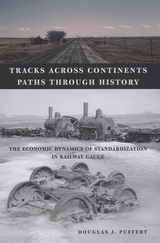 Tracks across Continents, Paths through History: The Economic Dynamics of Standardization in Railway Gauge
Douglas J. Puffert
University of Chicago Press, 2009 A standard track gauge—the distance between the two rails—enables connecting railway lines to exchange traffic. But despite the benefits of standardization, early North American railways used six different gauges extensively, and even today breaks of gauge at national borders and within such countries as India and Australia are expensive burdens on commerce. In Tracks across Continents, Paths through History, Douglas J. Puffert offers a global history of railway track gauge, examining early choices and the dynamic process of diversity and standardization that resulted. Drawing on the economic theory of path dependence, and grounded in economic, technical, and institutional realities, this innovative volume traces how early historical events, and even idiosyncratic personalities, have affected choices of gauge ever since, despite changing technology and understandings of what gauge is optimal. Puffert also uses this history to develop new insights in the theory of path dependence. Tracks across Continents, Paths through History will be essential reading for anyone interested in how history and economics inform each other.
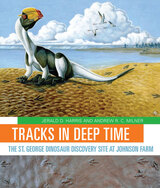 Tracks in Deep Time: The St. George Dinosaur Discovery Site at Johnson Farm
Jerald D. Harris and Andrew R. Milner
University of Utah Press, 2015 In February 2000, while excavating his property in St. George, Utah, Sheldon Johnson turned over a piece of ground and discovered a fully preserved dinosaur footprint. That track was the first of many fossils to be uncovered. Five years later, the St. George Dinosaur Discovery Site at Johnson Farm was established to preserve one of the richest and oldest dinosaur-age fossil sites in Utah.
Tracks in Deep Time presents, for the first time, an engaging, thoroughly readable account of the history, geology, and paleontology of this important site. Two hundred million years ago, Lake Dixie covered the site. Within its waters and along its shores, a diverse ecosystem of dinosaurs, early crocodylians, fishes, plants, and other organisms thrived, leaving behind thousands of footprints and other fossils preserved in layers of rock. Unusual fossils found here include the world’s largest collection of tracks left by swimming dinosaurs and one of only six traces known to have been made by a sitting, meat-eating dinosaur. With approachable text and lavish, full-color photographs and illustrations, Jerald Harris and Andrew Milner describe how geologists and paleontologists have painstakingly reconstructed a vivid “snapshot” of life from the Early Jurassic epoch.
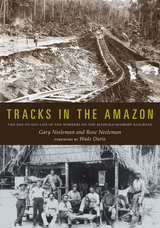 Tracks in the Amazon: The Day-to-Day Life of the Workers on the Madeira-Mamoré Railroad
Gary Neeleman
University of Utah Press, 2014 When construction of the Madeira-Mamoré Railroad began in 1867, Bolivia had lost its war with Chile, causing it to become landlocked and unable to ship its minerals and other products from the Pacific Coast. Since Bolivia needed to find a way to move products from the Atlantic Coast, the government decided a railroad should be built around the Madeira River—which originates in Bolivia and travels almost 2,000 miles through Brazil to the Amazon—facilitating shipment to foreign markets via the Amazonian waterway. Completion of the railroad was initially stalled by lack of funding, but the project was resurrected in the early twentieth century and completed in 1912. Intended as an integral piece of the rubber export industry, the railroad became unnecessary once the world supply of rubber moved from Brazil to Asia.
Although there have been many brief chronicles and writings about the Madeira-Mamoré Railroad over the years, most barely scratch the surface of this incredible story. Of particular import in Tracks in the Amazon are the photographs—which until now have rarely been seen—taken by Dana Merrill, a New York photographer hired to document the construction of the railroad. It also includes reproductions of the Porto Velho Marconigram, an English-language newspaper written for and by the American expatriates who lived in the construction headquarters at Porto Velho. Because this unique railroad traversed the densest tropical jungle on earth, more than 10,000 workers lost their lives laying the first five miles of track. The images and descriptions of the life of the workers on the railroad illustrate the challenges of working in the jungles—the unforgiving climate, malaria and yellow feverbearing mosquitoes, and the threat of wild animals—which made conditions for the workers next to impossible.
Finalist for the International Latino Book Awards: Best Book in Nonfiction in Portuguese.
 Tracks on the Ocean: A History of Trailblazing, Maps, and Maritime Travel
Sara Caputo
University of Chicago Press, 2024 An engaging look at ocean routes’ complicated beginnings and elusive impact.
Sara Caputo’s Tracks on the Ocean is a sweeping history of how we have understood routes of travel over the ocean and how we came to represent that movement as a cartographical line. Focusing on the representation of sea journeys in the Western world from the early sixteenth century to the present, Caputo deftly argues that the depiction of these lines is inextricable from European imperialism, the rise of modernity, and attempts at mastery over nature. Caputo recounts the history of ocean tracks through an array of lively stories and characters, from the expeditions of Captain James Cook in the eighteenth century to tracks depicted in Moby Dick and popular culture of the nineteenth century to the use of navigational techniques by the British navy. She discusses how tracks evolved from tools of surveying into tools of surveillance and, eventually, into paths of environmental calamity. The impulse to record tracks on the ocean is, Caputo argues, reflective of an ongoing desire for order, schematization, and personal visibility, as well as occupation and permanent ownership—in this case over something that is unoccupiable and impossible to truly possess. Both beautifully written and deeply researched, Tracks on the Ocean shares how the lines drawn on maps tell the audacious and often tragic and violent stories of ocean voyages.
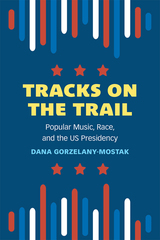 Tracks on the Trail: Popular Music, Race, and the US Presidency
Dana Gorzelany-Mostak
University of Michigan Press, 2023 From Bill Clinton playing his saxophone on The Arsenio Hall Show to Barack Obama referencing Jay-Z’s song “Dirt Off Your Shoulder,” politicians have used music not only to construct their personal presidential identities but to create the broader identity of the American presidency. Through music, candidates can appear relatable, show cultural competency, communicate values and ideas, or connect with a specific constituency. On a less explicit level, episodes such as Clinton’s sax-playing and Obama’s shoulder brush operate as aural and visual articulations of race and racial identity. But why do candidates choose to engage with race in this manner? And why do supporters and detractors on YouTube and the Twittersphere similarly engage with race when they create music videos or remixes in homage to their favorite candidates?
With Barack Obama, Ben Carson, Kamala Harris, and Donald Trump as case studies, Tracks on the Trail: Popular Music, Race, and the US Presidency sheds light on the factors that motivate candidates and constituents alike to articulate race through music on the campaign trail and shows how the racialization of sound intersects with other markers of difference and ultimately shapes the public discourse surrounding candidates, popular music, and the meanings attached to race in the 21st century. Gorzelany-Mostak explores musical engagement broadly, including official music in the form of candidate playlists and launch event setlists, as well as unofficial music in the form of newly composed campaign songs, mashups, parodies, and remixes.
Tractates on the Gospel of John 112–24; Tractates on the First Epistle of John
Saint Augustine
Catholic University of America Press, 1988 In this volume, which concludes John W. Rettig's translation of St. Augustine's Tractates on the Gospel of John, Augustine applies his keen insight and powers of rhetoric to the sacred text, drawing the audience into an intimate contemplation of Jesus through the course of his Passion, Death, and Resurrection.
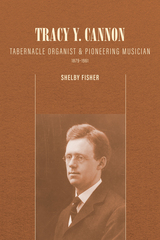 Tracy Y. Cannon: Tabernacle Organist and Pioneering Musician, 1879-1961
Fisher, Shelby
Signature Books, 2026 Tracy Y. Cannon guided the musical voice of Mormonism from its provincial roots at the turn of the twentieth century into a state of maturity by the end of his career in 1960. Cannon served as Salt Lake Tabernacle organist from 1905 until 1930, accompanying some of the first radio broadcasts of Music and the Spoken Word. Under his leadership, the McCune School of Music and Art became a cultural hub, offering accredited music degrees as well as community enrichment activities, influencing Utah’s next generation of music educators, composers, leaders, and policymakers. But perhaps his most lasting legacy was his work with the General Music Committee of the Church of Jesus Christ of Latter-day Saints, through which he oversaw the creation of two hymnals, many anthem books, organ anthologies, method books, and an expansive organist and chorister education program. Cannon’s musical tastes—dignified, refined, reverent, and heavily influenced by Northern European tradition—became the norm for Latter-day Saint congregations for generations. Through his multifaceted career, this brief biography explores the evolution of Latter-day Saint hymnody, “art music,” cultural taste, and music education during the first half of the twentieth century.
Trade and Economic Structure: Models and Methods
Richard E. Caves
Harvard University Press This comprehensive discussion of international trade theories focuses on logically distinct models of international trade rather than on chronology or “schools of thought.” The author gives primary attention to the differences in the empirical implications derivable from the “Heckscher-Ohlin model” and from the simple classical comparative models of international trade. He also emphasizes the recurrence of controversy over matters of aggregation, due to the lack of a common criterion, and the rich variety of model types that result from dynamic theorizing, discrediting the search for an ultimate dynamic international trade model. This book is intended especially for teachers and graduate students who require a broad understanding of basic theories in the field.
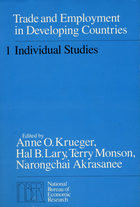 Trade and Employment in Developing Countries, Volume 1: Individual Studies
Edited by Anne O. Krueger, Hal B. Lary, Terry Monson, and Narongchai Akrasanee
University of Chicago Press, 1980 This first book of a three-volume study examines the way trade policies in developing countries affect the level and composition of employment. There is special emphasis on the effects of import substitution policies that attempt to make a country self-sufficient by producing local substitutes for imports, as compared with policies that further the expansion of imports.
Ten countries are studied: Brazil, Chile, Colombia, Indonesia, the Ivory Coast, Pakistan, South Korea, Thailand, Tunisia, and Uruguay. The contributors to the volume analyze the link between trade strategies and employment within a common framework, and the analyses of trade policy include the level and structure of protection, the relation of trade policy to labor demand, the labor intensiveness of trade, and the extent of distortions in factor markets and their effects on trade.
Trade and Employment in Developing Countries, Volume 2: Factor Supply and Substitution
Edited by Anne O. Krueger
University of Chicago Press, 1982 Factor Supply and Substitution, the second in a three-volume study entitled Trade and Employment in Developing Countries, extends the analysis of trade regimes and employment both in depth for single countries and through cross-country analyses. It provides important new evidence of the effects of different trade policies and of the effects of the various factors that make up these policies—exchange rates, wages, social insurance and other taxes, credit, prices, and so on. All six studies reflect a carefully coordinated research strategy that has been carried out by a first-rate team. The researchers combine technical expertise with specialized knowledge of the individual countries.
Trade and Employment in Developing Countries, Volume 3: Synthesis and Conclusions
Anne O. Krueger
University of Chicago Press, 1988 The NBER project on alternative trade strategies and employment analyzed the extent to which employment and income distribution are affected by the choice of trade strategies and by the interaction of trade policies with domestic policies and market distortions. This book, the third and final volume to come from that project, brings together the theory underlying the trade strategies-employment relation and the empirical evidence emanating from the project.
 Trade and Investment Relations among the United States, Canada, and Japan
Edited by Robert M. Stern
University of Chicago Press, 1989 The economic futures of the United States, Canada, and Japan are tightly linked by the extremely powerful trade network these nations share. Yet because of trade and domestic policies aimed at preserving economic and, some argue, cultural integrity, there has at times been considerable friction among the three nations. Much of the recent trade animus of the U.S. has been aimed Japan, the country with the largest trade surplus with the United States. Canada, the largest trade partner of the U.S., maintains fiscal policies which resemble those of Japan, but has not been the focus of similar concern. Since the actions of each nation reverberate throughout the network, a full and accurate understanding of these complex relations will be essential if ongoing trade negotiations, policymaking, and international relations are to be constructive.
The papers in this volume were developed from a conference that addressed the need to discover which structural determinants and policies shape the close economic ties among these nations. Leading experts on trade and macroeconomics from all three countries examine disproportionate saving rates, exchange rate volatility, varying industrial policies and levels of financial innovation, the effects of present tax policies and proposed reforms, and the dynamism of major Pacific nations and the leadership role Japan may play in U.S. relations with that region. Several important conclusions are reached by the contributors. They assert that Japan's trade barriers are relatively low overall and are comparable to those maintained by the United States and Canada, and that divergent fiscal policies have been the major source of macroeconomic imbalances between the United States and other major countries in the 1980s. They also conclude that current trade imbalances may persist for some time. The analyses offered here are likely to prove influential in future policymaking and will be of interest to a wide audience, including academic economists, government officials, and students of theoretical and policy issues of international trade, investment, and finance.
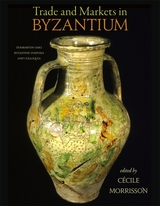 Trade and Markets in Byzantium
Cécile Morrisson
Harvard University Press, 2012 How are markets in antiquity to be characterized? As comparable to modern free markets, with differences in scale not quality? As controlled and dominated by the State? Or as a third way, in completely different terms, as free but regulated? In Trade and Markets in Byzantium seventeen scholars address these and related issues by reexamining and reinterpreting the material and textual record from Byzantium and its hinterland for local, regional, and interregional trade. Special emphasis is placed on local trade, which has been understudied. To comprehend the recovery of long-distance trade from its eighth-century nadir to the economic prosperity enjoyed in the eleventh and twelfth centuries, the authors analyze the variety and complexity of the exchange networks, the role of money as a measure of exchange, and the character of local markets. This collection of groundbreaking research will prove to be indispensable for anyone interested in economic history in antiquity and the medieval period.
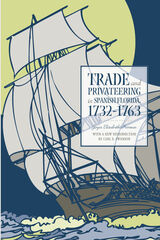 Trade and Privateering in Spanish Florida, 1732–1763
Joyce Elizabeth Harman, With a New Introduction by Carl E. Swanson
University of Alabama Press, 2004 Trade and Privateering examines the illegal yet highly profitable and mutually beneficial trade between Spanish Florida and the English colonies on the eastern seaboard in the mid-18th century. In St. Augustine, the arrival of subsidies from Spain was erratic, causing shortages of food and supplies, so authorities ignored the restrictions on trade with foreign colonies and welcomed British goods. Likewise, the British colonists sought Spanish products from Florida, especially oranges.
But when England and Spain became declared enemies in the War of Jenkins’ Ear and the French and Indian Wars, this tacit trade arrangement was threatened, and the result was a rise of privateering in the region. Rather than do without Spanish goods, the English began to attack and capture Spanish vessels with their cargoes at sea. Likewise, the Spaniards resorted to privateering as a means of steadily supplying the Florida colony. Harman concludes that, both willingly and unwillingly, the English colonies helped their Spanish neighbor to sustain its position in the Southeast.
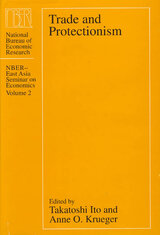 Trade and Protectionism
Edited by Takatoshi Ito and Anne O. Krueger
University of Chicago Press, 1993 During the first three decades following the Second World War, an increasingly open international trading system led to unprecedented economic growth throughout the world. But in recent years, that openness has been threatened by increased protectionism, regional trading arrangements—Europe 1992 and the U.S.-Canada Free Trade Agreement—and setbacks in negotiations on the General Agreement on Tariffs and Trade. In Trade and Protectionism, American and East Asian scholars consider the dangers of this trend for the world economy and especially for East Asian countries.
The authors look at the current global trading system and at the potential threats to East Asian economies from possible regional arrangements, such as separate trading blocks in the Western Hemisphere and Europe. They cover trade between the United States and Japan, Korea and Japan, and Japanese-East Asian trade policies; trade in agriculture and semiconductors and the frictions that have jeopardized this trade; and direct foreign investment. The contributors round out the work with discussions of the political economy of protection in Korea and Taiwan and political economy considerations as they affect trade policy in general.
This is the second volume of the National Bureau of Economic Research-East Asia Seminar on Economics. The first volume, The Political Economy of Tax Reform, also edited by Takatoshi Ito and Anne O. Krueger, addresses tax reform in the global economy.
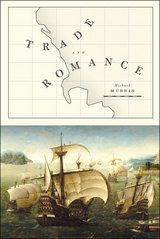 Trade and Romance
Michael Murrin
University of Chicago Press, 2013 In Trade and Romance, Michael Murrin examines the complex relations between the expansion of trade in Asia and the production of heroic romance in Europe from the second half of the thirteenth century through the late seventeenth century. He shows how these tales of romance, ostensibly meant for the aristocracy, were important to the growing mercantile class as a way to gauge their own experiences in traveling to and trading in these exotic locales. Murrin also looks at the role that growing knowledge of geography played in the writing of the creative literature of the period, tracking how accurate, or inaccurate, these writers were in depicting far-flung destinations, from Iran and the Caspian Sea all the way to the Pacific. With reference to an impressive range of major works in several languages—including the works of Marco Polo, Geoffrey Chaucer, Matteo Maria Boiardo, Luís de Camões, Fernão Mendes Pinto, Edmund Spenser, John Milton, and more—Murrin tracks numerous accounts by traders and merchants through the literature, first on the Silk Road, beginning in the mid-thirteenth century; then on the water route to India, Japan, and China via the Cape of Good Hope; and, finally, the overland route through Siberia to Beijing. All of these routes, originally used to exchange commodities, quickly became paths to knowledge as well, enabling information to pass, if sometimes vaguely and intermittently, between Europe and the Far East. These new tales of distant shores fired the imagination of Europe and made their way, with surprising accuracy, as Murrin shows, into the poetry of the period.
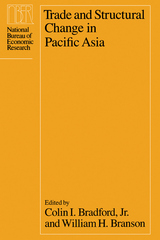 Trade and Structural Change in Pacific Asia
Edited by Colin I. Bradford Jr. and William H. Branson
University of Chicago Press, 1987 The rapid development of Pacific Asia over the past twenty years offers an excellent opportunity to analyze the dynamics of economic growth. Trade and Structural Change in Pacific Asia explores the nature and causes of changes that have occurred in the economic structure of Pacific Asia, the relationship between these changes and economic growth, and the implications of these changes for trading relationships.
Themes in the research reported here includes the sectoral composition of output and trade; rates of structural change in production and exports and their relation to economic growth; the effect of abundant resource endowments on industrialization and manufactured exports; the nature of the mix between active government policies and market forces; and the balance between demand-determined and supply-determined industrialization and exports. Many of the issues explored have important implications for United States foreign economic policy, and the volume includes a look at the basic economic and political forces influencing shifts in United States trade policy in the postwar period.
A timely and informative analysis, the volume probes the causes and consequences of economic growth in Pacific Asia, focusing on the interaction of exports of manufactured goods and the developmental process. The results reported contribute to ongoing research in structural change and economic policy and will be important to economists working on empirical patters in international trade and the process of economic development.
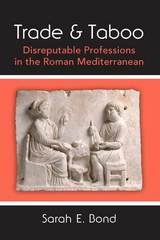 Trade and Taboo: Disreputable Professions in the Roman Mediterranean
Sarah E. Bond
University of Michigan Press, 2016 Trade and Taboo addresses the legal, literary, social, and institutional creation of disrepute in ancient Roman society. Tracking the shifting application of stigmas of disrepute between the Republic and Late Antiquity, it follows particular groups of professionals—funeral workers, criers, tanners, mint workers, and even bakers—asking how they coped with stigmatization.
In this book, Sarah E. Bond reveals the construction and motivations for these attitudes, and to show how they created inequalities, informed institutions, and changed over time. Additionally, she shows how political and cultural shifts mutated these taboos, reshaping economic markets and altering the status of professionals at work within these markets.
Bond investigates legal stigmas in the form of infamia and other marks of legal disrepute. She expands on anthropological theories of pollution, closely studying individuals who regularly came into contact with corpses and other polluting materials, and considering communication and network formation through the disrepute attached to town criers, or praecones. Ideas of disgust and the language of invective are brought forward looking at tanners. The book closes with an exploration of caste-like systems created in the later Roman Empire. Collectively, these professionals are eloquent about economies and changes experienced within Roman society between 45 BCE and 565 CE.
Trade and Taboo will interest those studying Roman society, issues of historiographical method, and the topic of taboo in preindustrial cultures.
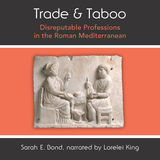 Trade and Taboo: Disreputable Professions in the Roman Mediterranean
Sarah E. Bond, narrated by Lorelei King
University of Michigan Press, 2016 Trade and Taboo addresses the creation of disrepute in ancient Roman society. What made someone disreputable in the eyes of Romans and how did this effect their everyday life? The book tracks the shifting application of stigmas of disrepute between the Republican period and the later Roman empire (45 BCE - 565 CE) by following various Roman professionals. Through the lives of funeral workers, town criers, tanners, mint workers, and even bakers, Bond asks how certain tradesmen coped with stigmatization. Along the way, Trade and Taboo explores the ins and out of artisan life in antiquity, from how to hire a gravedigger to collecting urine to tan the hides that would be made into leather. Above all, the book indicates how perceptions of disreputable tradesman could change over time. Through reflecting on the language and laws that Romans used to marginalize others, the author helps us reflect on practices in today's society.
Trade and the Environment: Law, Economics, and Policy
Edited by Durwood Zaelke, Robert F. Housman, and Paul Orbuch
Island Press, 1993 Trade and the Environment is an important primer for anyone concerned with the impact of trade agreements on the global environment. After examining some of the broader aspects of the debate, the book turns to specific concerns: When is it appropriate for one country to use trade measures to influence industrial behavior in another country? How are international environmental standards set? When are low environmental standards in one country a subsidy to that country's industries? With chapters representing the views of industrial leaders, trade advocates, environmentalists, international organizations, and policymakers from both the developed and developing world, Trade and the Environment provides insight into the full spectrum of issues, concerns, and parties involved in this critical debate.
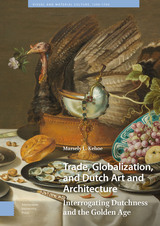 Trade, Globalization, and Dutch Art and Architecture: Interrogating Dutchness and the Golden Age
Marsely Kehoe
Amsterdam University Press, 2023 We all look to our past to define our present, but we don’t always realize that our view of the past is shaped by subsequent events. It’s easy to forget that the Dutch dominated the world’s oceans and trade in the seventeenth century when our cultural imagination conjures up tulips and wooden shoes instead of spices and slavery. This book examines the Dutch so-called “Golden Age” though its artistic and architectural legacy, recapturing the global dimensions of this period by looking beyond familiar artworks to consider exotic collectibles and trade goods, and the ways in which far-flung colonial cities were made to look and feel like home. Using the tools of art history to approach questions about memory, history, and how cultures define themselves, this book demonstrates the centrality of material and visual culture to understanding history and cultural identity.
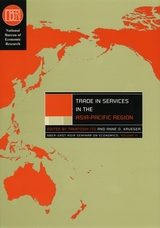 Trade in Services in the Asia-Pacific Region
Edited by Takatoshi Ito and Anne O. Krueger
University of Chicago Press, 2002 In recent years the tremendous growth of the service sector—including international trade in services—has outstripped that of manufacturing in many industrialized nations. As the importance of services has grown, economists have begun to focus on policy issues raised by them and have tried to understand what, if any, differences there are between production and delivery of goods and services.
This volume is the first book-length attempt to analyze trade in services in the Asia-Pacific region. Contributors provide overviews of basic issues involved in studying the service sector; investigate the impact of increasing trade in services on the economies of Taiwan, Korea, and Hong Kong; present detailed analyses of specific service sectors (telecommunications, financial services, international tourism, and accounting); and extend our understanding of trade in services beyond the usual concept (measured in balance of payment statistics) to include indirect services and services undertaken abroad by subsidiaries and affiliates.
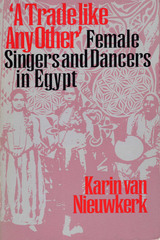 A Trade like Any Other: Female Singers and Dancers in Egypt
By Karin van Nieuwkerk
University of Texas Press, 1995 In Egypt, singing and dancing are considered essential on happy occasions. Professional entertainers often perform at weddings and other celebrations, and a host family's prestige rises with the number, expense, and fame of the entertainers they hire. Paradoxically, however, the entertainers themselves are often viewed as disreputable people and are accorded little prestige in Egyptian society. This paradox forms the starting point of Karin van Nieuwkerk's look at the Egyptian entertainment trade. She explores the lives of female performers and the reasons why work they regard as "a trade like any other" is considered disreputable in Egyptian society. In particular, she demonstrates that while male entertainers are often viewed as simply "making a living," female performers are almost always considered bad, seductive women engaged in dishonorable conduct. She traces this perception to the social definition of the female body as always and only sexual and enticing—a perception that stigmatizes women entertainers even as it simultaneously offers them a means of livelihood. Drawn from extensive fieldwork and enriched with the life stories of entertainers and nightclub performers, this is the first ethnography of female singers and dancers in present-day Egypt. It will be of interest to a wide audience in anthropology, women's studies, and Middle Eastern culture, as well as anyone who enjoys belly dancing.
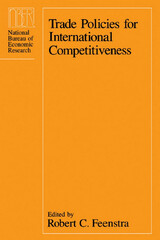 Trade Policies for International Competitiveness
Edited by Robert C. Feenstra
University of Chicago Press, 1989 Once unquestionably the world's leading economic and industrial power, the United States now views with growing dismay the impressive industrial efficiency, vigorous work ethics, and large American holdings of various other nations. Is the United States truly lagging in its ability to compete effectively in world markets? Concern over this question has been voiced in both the business and government sectors, as well as by academic economists. A recent conference, sponsored by the National Bureau of Economic Research, explored the effects of trade policies on a nation's ability to compete in international markets.
In Trade Policies for International Competitiveness, Robert C. Feenstra collects seven papers from the conference, each accompanied by discussants' comments, and adds a helpful introduction. Some of the issues considered by contributors are effects of macroeconomic and strategic foreign policies on competitiveness; the recent influx of foreign direct investment in the United States, primarily from Japan; the extent to which Japanese trade patterns are a reflection of underlying factor and endowments rather than trade barriers; and the market structure of Canadian industries, including applications for ongoing U.S.-Canadian free trade negotiations. Topical and provocative, these papers will be of value to economists, policymakers, and those in the business world.
Trade Policy in a Changing World Economy
Robert E. Baldwin
University of Chicago Press, 1989 Trade policy issues are no longer solely the concern of a few government specialists and academics. Manufacturers, businesspeople, educators, and government officials must keep abreast of laws and regulations relating to trade, the economic consequences of various trade measures, and current trends in policy, but there have been few coherent sources for such information.
Trade Policy in a Changing World Economy provides a clear introduction to complex trade issues, covering theoretical issues of trade policy, the changing nature of American trade policy, the changing nature of American trade policy since World War II, multilateral trade negotiations, and trade strategies. The volume is particularly timely as the world's nations enter a new round of GATT negotiations for the reduction of trade barriers.
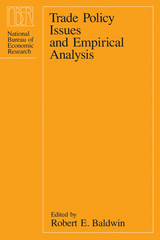 Trade Policy Issues and Empirical Analysis
Edited by Robert E. Baldwin
University of Chicago Press, 1988 Interest in U.S. trade policy has been stimulated in recent years by the massive American trade deficit, by the belief that intervention by foreign governments in international markets has given other countries a competitive edge over the United States, and by concern about the increase in protectionism among industrial countries. In turn, major analytical developments in international economics have revolutionized trade theory, broadening its scope both by introducing in a more formal manner such concepts as imperfect competition, increasing returns, product differentiation, and learning effects and by including the study of political and economic factors that shape trade policy decisions. This collection of papers—the result of a conference held by the NBER—applies these "new" trade theories to existing world cases and also presents complementary empirical studies that are grounded in more traditional trade theories.
The volume is divided into four parts. The papers in part 1 consider the problem of imperfect competition, empirically assessing the economic effect of various trade policies introduced in industries in which the "new" trade theory seems to apply. Those in part 2 isolate the effects of protection from the influences of the many economic changes that accompany actual periods of protection and also examine how the effects from exogenous changes in economic conditions vary with the form of protection. Part 3 provides new empirical evidence on the effect of foreign production by a country's firms on the home country's exports. Finally, in part 4, two key bilateral issues are analyzed: recent U.S.-Japanese trade tensions and the incident involving the threat of the imposition of countervailing duties by the United States on Canadian softwood lumber.
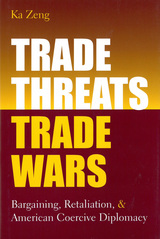 Trade Threats, Trade Wars: Bargaining, Retaliation, and American Coercive Diplomacy
Ka Zeng
University of Michigan Press, 2004 This study of American trade policy addresses two puzzles associated with the use of aggressive bargaining tactics to open foreign markets. First, as the country with greater power and resources, why has the United States achieved more success in extracting concessions from some of its trading partners than others? Second, why is it that trade disputes between democratic and authoritarian states do not more frequently spark retaliatory actions than those between democratic pairs?
Ka Zeng finds answers to both of these questions in the domestic repercussions of the structure of trade between the United States and its trading partners, whether the United States has a competitive trade relationship with its trading partner, or whether trade is complementary.
This book offers practical policy prescriptions that promise to be of interest to trade policymakers and students of international trade policy.
Ka Zeng is Assistant Professor of Political Science at the University of Arkansas, Fayetteville.
 Trade Union Officers: A Study of the Full-Time Officers, Branch Secretaries, and Shop Stewards in British Trade Unions
H. A. Clegg, A. J. Killick, and Rex Adams
Harvard University Press The problems of trade union officers have attracted considerable attention in recent years. It is often suggested that changes in our educational system have cut off the supply of able candidates for full-time posts, whilst attractive offers from nationalized and private industries have drained away existing talent. Trade Union officers are said to be badly paid and overworked. Meanwhile much of the power of the unions is alleged to have passed to the shop stewards, about whose duties and characteristics relatively little is known.
This study is based upon an investigation into the records of eighteen major unions, upon local surveys, and upon the answers to questionnaires distributed nationally.
The findings of these inquiries establish firm evidence in a number of areas where previously only guesswork was available, and upset a number of popular prejudices about British trade unions. Having set them out, the authors are able to throw new light upon the structure of union bureaucracies, and upon the supply and selection of union officers, their pay and conditions of work, and their education and training.
Trade with Japan: Has the Door Opened Wider?
Edited by Paul Krugman
University of Chicago Press, 1991 The realities of Japanese-U.S. trade and investment relations are clouded by mistrust, misinformation, and myth. In what way is the Japanese economic system different, and is it to be emulated or challenged? The contributors, from both the United States and Japan, explore Japanese trade patterns, market structure and trade, financial markets, and industrial and trade policy. Offering analysis of the issues, Trade with Japan is a valuable resource for economists, policymakers, and the business community.
 The Trade-Off Myth: Fact And Fiction About Jobs And The Environment
Eban Goodstein
Island Press, 2000 Many Americans believe three things about jobs and the environment: that the implementation of environmental protection measures has created ongoing, widespread unemployment; that it has caused large numbers of plant shutdowns and layoffs in manufacturing; and that it has led many U.S. firms to flee to developing countries with lax environmental regulations. Virtually all economists who have studied the issue agree that each of these propositions is false.In The Trade-Off Myth, economist Eban Goodstein provides an in-depth examination of the deep-seated, but ultimately mistaken, American belief in a widespread jobs-environment trade-off. Remarkably, his is the first book to state unambiguously the truth about jobs and the environment. Goodstein offers a readable and accessible analysis of the labor impacts of environmental regulation, as he: considers the roots and staying power of misperceptions regarding job security and environmental regulation analyzes various models used to predict employment impacts, and explains how changes in assumptions can drastically change predicted outcomes lists and debunks, myth-by-myth, widely held perceptions about the impacts of environmental regulation on jobs examines localized hardships caused by environmental protection measures within specific industries and regions, and considers what can be done to mitigate those impacts explores the revisionist view that environmental protection measures can actually create jobs looks at jobs-environment issues that are likely to emerge as we attack the problem of global warming.The Trade-Off Myth presents in clear, accessible language the consensus of economists who have examined the jobs-environment issue, and offers the first comprehensive look at the truth behind the myths that pervade discourse on environmental regulation. It will be essential reading for environmentalists, concerned citizens, policymakers, public officials, and anyone involved with debates over strengthening environmental regulations.
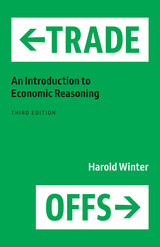 Trade-Offs: An Introduction to Economic Reasoning
Harold Winter
University of Chicago Press, 2023 The highly engaging introduction to thinking like an economist, updated for a new generation of readers. When economists wrestle with any social issue—be it unemployment, inflation, healthcare, or crime and punishment—they do so impersonally. The big question for them is: what are the costs and benefits, or trade-offs, of the solutions to such matters? These trade-offs constitute the core of how economists see the world—and make the policies that govern it. Trade-Offs is an introduction to the economic approach of analyzing controversial policy issues. A useful introduction to the various factors that inform public opinion and policymaking, Trade-Offs is composed of case studies on topics drawn from across contemporary law and society. Intellectually stimulating yet accessible and entertaining, Trade-Offs will be appreciated by students of economics, public policy, health administration, political science, and law, as well as by anyone following current social policy debates.
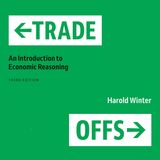 Trade-Offs: An Introduction to Economic Reasoning
Harold Winter
University of Chicago Press, 2023 This is an auto-narrated audiobook edition of this book. The highly engaging introduction to thinking like an economist, updated for a new generation of readers. When economists wrestle with any social issue—be it unemployment, inflation, healthcare, or crime and punishment—they do so impersonally. The big question for them is: what are the costs and benefits, or trade-offs, of the solutions to such matters? These trade-offs constitute the core of how economists see the world—and make the policies that govern it. Trade-Offs is an introduction to the economic approach of analyzing controversial policy issues. A useful introduction to the various factors that inform public opinion and policymaking, Trade-Offs is composed of case studies on topics drawn from across contemporary law and society. Intellectually stimulating yet accessible and entertaining, Trade-Offs will be appreciated by students of economics, public policy, health administration, political science, and law, as well as by anyone following current social policy debates.
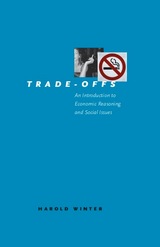 Trade-Offs: An Introduction to Economic Reasoning and Social Issues
Harold Winter
University of Chicago Press, 2005 When economists wrestle with issues such as unemployment, inflation, or budget deficits, they do so by incorporating an impersonal, detached mode of reasoning. But economists also analyze issues that, to others, do not typically fall within the realm of economic reasoning, such as organ transplants, cigarette addiction, smoking in public, and product safety. Trade-Offs is an introduction to the economic approach to analyzing these controversial public policy issues.
Harold Winter provides readers with the analytical tools needed to identify and understand the trade-offs associated with these topics. By considering both the costs and benefits of potential policy solutions, Winter stresses that real-world policy decision making is best served by an explicit recognition of as many trade-offs as possible.
Intellectually stimulating yet accessible and entertaining, Trade-Offs will be appreciated by students of economics, public policy, health administration, political science, and law, as well as by anyone who follows current social policy debates.
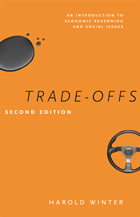 Trade-Offs: An Introduction to Economic Reasoning and Social Issues, Second Edition
Harold Winter
University of Chicago Press, 2013 When economists wrestle with issues such as unemployment, inflation, or budget deficits, they do so by incorporating an impersonal, detached mode of reasoning. But economists also analyze issues that, to others, typically do not fall within the realm of economic reasoning, such as organ transplants, cigarette addiction, overeating, and product safety. Trade-Offs is an introduction to the economic approach to analyzing these controversial public policy issues. Harold Winter provides readers with the analytical tools needed to identify and understand the trade-offs associated with these topics. By considering both the costs and benefits of potential policy solutions, Winter stresses that real-world decision making is best served by an explicit recognition of as many trade-offs as possible. This new edition incorporates recent developments in policy debates, including the rise of “new paternalism,” or policies designed to protect people from themselves; alternative ways to increase the supply of organs available for transplant; and economic approaches to controlling infectious disease. Intellectually stimulating yet accessible and entertaining, Trade-Offs will be appreciated by students of economics, public policy, health administration, political science, and law, as well as by anyone who follows current social policy debates.
 Traders in a Brave New World: The Uruguay Round and the Future of the International Trading System
Ernest H. Preeg
University of Chicago Press, 1995 The recently concluded Uruguay Round of the General Agreement on Tariffs and Trade (GATT) will undoubtedly lead to a fundamental transformation of the world trading system as an instrument of a global economy. In Traders in a Brave New World, Ernest H. Preeg, a distinguished former U.S. diplomat and trade negotiator, presents a blow-by-blow account of the Uruguay Round, an examination of the historical context in which it took place, and an insider's assessment of the agreement's future impact on the international trading system.
Preeg places the Uruguay Round in the broader context of global politics and economics, showing how changes in the world order—from the collapse of communism to dramatic economic reforms in developing countries—influenced both the topics of negotiations and their outcome. He then assesses the final GATT agreement as a case study in international negotiations and evaluates its probable effects on income and trade.
Finally, Preeg looks to the short- and long-term issues confronting future trade-policy negotiators. He shows that the international trade agenda will consist of three evolving types of agreement—further multilateral commitments, regional free-trade agreements, and selective bilateral accords. Going to the heart of current debates on the "new world order," an important final chapter evaluates the political and economic relationships that will result from the international trading system.
 Traders, Speculators, and Captains of Industry: How Capitalist Legitimacy Shaped Foreign Investment Policy in India
Jason Jackson
Harvard University Press, 2025 An incisive account of the moral beliefs that have guided foreign investment policy in India since the late colonial period, with an eye toward their implications for the twenty-first-century global economy.
Is foreign capital an agent of economic growth in developing countries or a vehicle of extraction? Examining how Indian elites wrestled with this question in the late colonial and postcolonial periods, Jason Jackson argues that it reflects a false binary. Instead of simply choosing between domestic and foreign capital, Indian policymakers have long considered the business ethics of individual firms. Indian economic nationalism, in other words, has never been characterized by a straightforward preference for domestic over foreign capital.
Jackson demonstrates that Indian policymakers have sought to favor firms that they believe are most likely to advance industrial development and societal progress at home. In particular, official policy and discourse have sought to confer a kind of moral legitimacy on businesses that invest their profits in local professional development and technological innovation—practices deemed synonymous with economic modernization. Meanwhile, firms seen as simply trading rather than producing, or as engaging in financial speculation and other allegedly regressive activities, have been viewed unfavorably. Jackson argues that these moral categories of capitalist legitimacy have shaped policymaking from the demise of the East India Company and rise of a new class of Indian industrialists in the late nineteenth century; to clashes between companies including Coca-Cola, Thums Up, Hero, and Honda in the twentieth; to more recent efforts to centralize political power through controversial market-governance projects.
An incisive look at the contested terms of capitalist self-interest and business ethics, Traders, Speculators, and Captains of Industry sheds new light on debates over investment policy and state-market relations in a global economy.
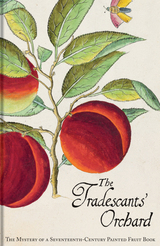 The Tradescants' Orchard: The Mystery of a Seventeenth-Century Painted Fruit Book
Barrie Juniper and Hanneke Grootenboer
Bodleian Library Publishing, 2013 In the early seventeenth century, England’s leisured classes took an eager interest in fruits from the Mediterranean and beyond, introducing species from abroad into the kitchen gardens and orchards of grand homes. A charming collection of sixty-six early watercolors showing fecund trees with fruits hanging heavily from their branches, The Tradescants’ Orchard is a testament to these broadening horticultural horizons.
The Tradescants’ Orchard reproduces for the first time the entire manuscript, traditionally associated with the renowned father-and-son nurserymen the John Tradescants. The paintings pose many questions: Who painted them and why? What is the significance of the wildlife—birds, butterflies, frogs, and snails—that appear throughout? Why is there only one depiction of an apple tree despite its popularity? Were there others that have since gone missing?
A visual feast that will appeal to botany and gardening enthusiasts, the book also includes an introduction that maps out the mystery of how and why these enigmatic watercolors were made.
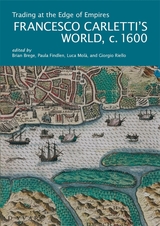 Trading at the Edge of Empires: Francesco Carletti's World, ca. 1600
Brian Brege, Paula Findlen, Luca Molà, and Giorgio Riello
Harvard University Press In narrating his circumnavigation of the world at the turn of the seventeenth century, the Florentine Francesco Carletti became the first European merchant to leave an account of travel on existing commercial routes. A repentant ex-slave trader and smuggler turned dealer in Chinese goods, Carletti travelled “at the edge of empires,” providing a unique perspective on the promise and peril of a connected globe. With his long stays in Lima, Mexico City, Manila, Nagasaki, Macao, and Goa, as well as travels across the Americas, the Pacific, and Asia, Carletti documents a changing world in which European powers and traders interacted and often clashed with other empires and polities. Trading at the Edge of Empires brings together 24 scholars to situate and unpack how Carletti’s travels illuminate our understanding of trade, slavery, empire, religion, language, ethnography, cartography, cosmography, and material culture in the early modern world.
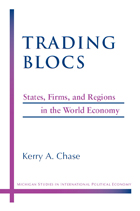 Trading Blocs: States, Firms, and Regions in the World Economy
Kerry A. Chase
University of Michigan Press, 2005 Global commerce is rapidly organizing around regional trading blocs in North America, Western Europe, Pacific Asia, and elsewhere--with potentially dangerous consequences for the world trading system. Professor Kerry Chase examines how domestic politics has driven the emergence of these trading blocs, arguing that businesses today are more favorably inclined to global trade liberalization than in the past because recent regional trading arrangements have created opportunities to restructure manufacturing more efficiently.
Trading Blocs is the first book to systematically demonstrate the theoretical significance of economies of scale in domestic pressure for trading blocs, and thereby build on a growing research agenda in areas of political economy and domestic politics.
"Chase has written a superb book that provides us with an innovative and compelling explanation for the development of trading blocs."
--Vinod Aggarwal, Director, Berkeley APEC Study Center, University of California, Berkeley
Kerry A. Chase is Assistant Professor of Political Science at Tufts University.
Trading Caterpillar Fungus in Tibet: When Economic Boom Hits Rural Area
Emilia Roza Sulek
Amsterdam University Press, 2019 When the demand for, and prices of caterpillar fungus (Ophiocordyceps sinensis, ‘the Himalayan Viagra’, long a part of traditional Chinese medicine) soared, the pastoralists of Golok on the Tibetan plateau where the fungus is endemic dug up, dried and sold the fungus to traders. In the process, these yak and sheep farmers, used to living on the edge of subsistence, became wealthy beyond their imagination. Trading Caterpillar Fungus in Tibet: When Economic Boom Hits Rural Area tells the story of what they do with the money they earned from gathering and trading caterpillar fungus, and what this money does to them, revealing a sophistication few outsiders would credit them for.
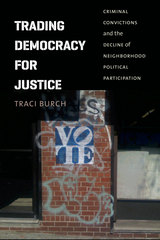 Trading Democracy for Justice: Criminal Convictions and the Decline of Neighborhood Political Participation
Traci Burch
University of Chicago Press, 2013 The United States imprisons far more people, total and per capita, and at a higher rate than any other country in the world. Among the more than 1.5 million Americans currently incarcerated, minorities and the poor are disproportionately represented. What’s more, they tend to come from just a few of the most disadvantaged neighborhoods in the country. While the political costs of this phenomenon remain poorly understood, it’s become increasingly clear that the effects of this mass incarceration are much more pervasive than previously thought, extending beyond those imprisoned to the neighbors, family, and friends left behind.
For Trading Democracy for Justice, Traci Burch has drawn on data from neighborhoods with imprisonment rates up to fourteen times the national average to chart demographic features that include information about imprisonment, probation, and parole, as well as voter turnout and volunteerism. She presents powerful evidence that living in a high-imprisonment neighborhood significantly decreases political participation. Similarly, people living in these neighborhoods are less likely to engage with their communities through volunteer work. What results is the demobilization of entire neighborhoods and the creation of vast inequalities—even among those not directly affected by the criminal justice system.
The first book to demonstrate the ways in which the institutional effects of imprisonment undermine already disadvantaged communities, Trading Democracy for Justice speaks to issues at the heart of democracy.
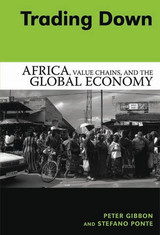 Trading Down: Africa, Value Chains, And The Global Economy
Peter Gibbon and Stefano Ponte
Temple University Press, 2005 Africa's role in the global economy is evolving as a result of new corporate strategies, changing trade regulations, and innovative ways of overseeing the globalized production and distribution of goods both within Africa and internationally. African participants in the global economy, now faced with demands for higher levels of performance and quality, have generated occasional successes but also many failures. Peter Gibbon and Stefano Ponte describe the central processes that are integrating some African firms into the global economy while at the same time marginalizing others. They show the effects of these processes on African countries, and the farms and firms within them. The authors use an innovative combination of global value chain analysis—which links production, trade, and consumption—and convention theory, an approach to understanding the conduct of business. In doing so, Gibbon and Ponte present a timely overview of the economic challenges that lay ahead in Africa, and point to ways to best address them.
 Trading Freedom: How Trade with China Defined Early America
Dael A. Norwood
University of Chicago Press, 2022 Explores the surprisingly rich early history of US-China trade and its unexpected impact on the developing republic.
The economic and geographic development of the early United States is usually thought of in trans-Atlantic terms, defined by entanglements with Europe and Africa. In Trading Freedom, Dael A. Norwood recasts these common conceptions by looking to Asia, making clear that from its earliest days, the United States has been closely intertwined with China—monetarily, politically, and psychologically.
Norwood details US trade with China from the late eighteenth through the late nineteenth centuries—a critical period in America’s self-definition as a capitalist nation—and shows how global commerce was central to the articulation of that national identity. Trading Freedom illuminates how debates over political economy and trade policy, the building of the transcontinental railroad, and the looming sectional struggle over slavery were all influenced by Sino-American relations. Deftly weaving together interdisciplinary threads from the worlds of commerce, foreign policy, and immigration, Trading Freedom thoroughly dismantles the idea that American engagement with China is anything new.
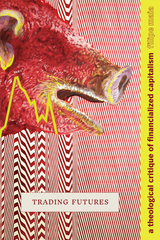 Trading Futures: A Theological Critique of Financialized Capitalism
Filipe Maia
Duke University Press, 2022 The discourse of financialized capitalism tries to create a future predictable enough to manage risk for the wealthy, to shape the future into a profit-making site that constrains and privatizes the sense of what’s possible. Here, people’s hopes and meaning-making energies are policed through the burden of debt. In Trading Futures Filipe Maia offers a theological reflection on hope and the future, calling for escape routes from the debt economy. Drawing on Marxism, continental philosophy, and Latin American liberation theology, Maia provides a critical portrayal of financialization as a death-dealing mechanism that colonizes the future in its own image. Maia elaborates a Christian eschatology of liberation that offers a subversive mode of imagining future possibilities. He shows how the Christian vocabulary of hope can offer a way to critique the hegemony of financialized capitalism, propelling us in the direction of a just future that financial discourse cannot manage or control.
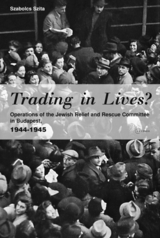 Trading in Lives?: Operations of the Jewish Relief and Rescue Committee in Budapest, 1944-1945
Szabolcs Szita
Central European University Press, 2005 Set in the tumultuous moments of 1944–45 Budapest, this work discusses the operations of the Budapest Relief and Rescue Committee. Drawing out the contradictions and complexities of the mass deportations of Hungarian Jews during the final phase of World War II, Szita suggests that in the Hungarian context, a commerce in lives ensued, where prominent Zionists like Dr. Rezso Kasztner negotiated with the higher echelons of the SS, trying to garner the freedom of Hungarian Jews. Szita's portrait of the controversial Kasztner is a more sympathetic rendition of a powerful Zionist leader who was later assassinated in Israel for his dealings with Nazi leaders. Szita reveals a story of interweaving personalities and conflicts during arguably the most tragic moment in European history. The author's extensive research is a tremendous contribution to a field of study that has been much ignored by scholarship-the Hungarian holocaust and the trade in human lives.
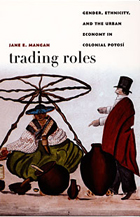 Trading Roles: Gender, Ethnicity, and the Urban Economy in Colonial Potosí
Jane E. Mangan
Duke University Press, 2005 Located in the heart of the Andes, Potosí was arguably the most important urban center in the Western Hemisphere during the colonial era. It was internationally famous for its abundant silver mines and regionally infamous for its labor draft. Set in this context of opulence and oppression associated with the silver trade, Trading Roles emphasizes daily life in the city’s streets, markets, and taverns. As Jane E. Mangan shows, food and drink transactions emerged as the most common site of interaction for Potosinos of different ethnic and class backgrounds. Within two decades of Potosí’s founding in the 1540s, the majority of the city’s inhabitants no longer produced food or alcohol for themselves; they purchased these items. Mangan presents a vibrant social history of colonial Potosí through an investigation of everyday commerce during the city’s economic heyday, between the discovery of silver in 1545 and the waning of production in the late seventeenth century. Drawing on wills and dowries, judicial cases, town council records, and royal decrees, Mangan brings alive the bustle of trade in Potosí. She examines quotidian economic transactions in light of social custom, ethnicity, and gender, illuminating negotiations over vendor locations, kinship ties that sustained urban trade through the course of silver booms and busts, and credit practices that developed to mitigate the pressures of the market economy. Mangan argues that trade exchanges functioned as sites to negotiate identities within this colonial multiethnic society. Throughout the study, she demonstrates how women and indigenous peoples played essential roles in Potosí’s economy through the commercial transactions she describes so vividly.
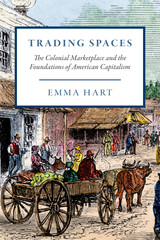 Trading Spaces: The Colonial Marketplace and the Foundations of American Capitalism
Emma Hart
University of Chicago Press, 2019 Looks at the shift from the marketplace as an actual place to a theoretical idea and how this shaped the early American economy.
When we talk about the economy, “the market” is often just an abstraction. While the exchange of goods was historically tied to a particular place, capitalism has gradually eroded this connection to create our current global trading systems. In Trading Spaces, Emma Hart argues that Britain’s colonization of North America was a key moment in the market’s shift from place to idea, with major consequences for the character of the American economy.
Hart’s book takes in the shops, auction sites, wharves, taverns, fairs, and homes of seventeenth- and eighteenth-century America—places where new mechanisms and conventions of trade arose as Europeans re-created or adapted continental methods to new surroundings. Since those earlier conventions tended to rely on regulation more than their colonial offspring did, what emerged in early America was a less-fettered brand of capitalism. By the nineteenth century, this had evolved into a market economy that would not look too foreign to contemporary Americans. To tell this complex transnational story of how our markets came to be, Hart looks back farther than most historians of US capitalism, rooting these markets in the norms of seventeenth- and eighteenth-century Britain. Perhaps most important, this is not a story of specific commodity markets over time but rather is a history of the trading spaces themselves: the physical sites in which the grubby work of commerce occurred and where the market itself was born.
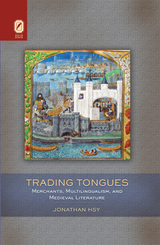 Trading Tongues: Merchants, Multilingualism, and Medieval Literature
Jonathan Hsy
Ohio State University Press, 2013 Trading Tongues offers fresh approaches to the multilingualism of major early English authors like Geoffrey Chaucer, John Gower, Margery Kempe, and William Caxton, and lesser-known figures like French lyricist Charles d’Orléans. Juxtaposing literary works with contemporaneous Latin and French civic records, mixed-language merchant miscellanies, and bilingual phrasebooks, Jonathan Hsy illustrates how languages commingled in late medieval and early modern cities. Chaucer, a customs official for the Port of London, infused English poetry with French and Latin merchant jargon, and London merchants incorporated Latin and vernacular verse forms into trilingual account books. Hsy examines how writers working in English, Latin, and French (and combinations thereof) theorized the rich contours of polyglot identity. In a range of genres—from multilingual lyrics, poems about urban life, and autobiographical narratives—writers found venues to consider their own linguistic capacities and to develop new modes of conceiving language contact and exchange. Interweaving close readings of medieval texts with insights from sociolinguistics and postcolonial theory, Trading Tongues not only illuminates how multilingual identities were expressed in the past; it generates new ways of thinking about cultural contact and language crossings in our own time.
 Trading Up: Consumer and Environmental Regulation in a Global Economy
David Vogel
Harvard University Press, 1995 Health, safety, and environmental regulations have been traditionally perceived as distinct entities from trade policy, yet today they have become intertwined on a global scale. In this pioneering work, David Vogel integrates environmental, consumer, and trade policy, and explicitly challenges the conventional wisdom that trade liberalization and agreements to promote free trade invariably undermine national health, safety, and environmental standards. Vogel demonstrates that liberal trade policies often produce precisely the opposite effect: that of strengthening regulatory standards.
The most comprehensive account of trade and regulation on a global scale, this book analyzes the regulatory dimensions of all major international and regional trade agreements and treaties, including GATT, NAFTA, the Free Trade Agreement between Canada and the United States, and the treaties that created the European Community and Union. He explores in depth some of the most important trade and regulatory conflicts, including the GATT tuna-dolphin dispute, the EC's beef hormone ban, the Danish bottle case, and the debate in the United States over the regulatory implications of both NAFTA and GATT.
This timely book unravels the increasingly important and contentious relationship between trade and environmental, health, and safety standards, paying particular attention to the politics that underlie trade and regulatory linkages. Trading Up is essential reading for the business community, policymakers, environmentalists, consumer interest groups, political scientists, lawyers, and economists.
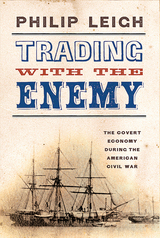 Trading with the Enemy: The Covert Economy During the American Civil War
Philip Leigh
Westholme Publishing, 2022 The Impact of Illicit Trade Between the North and South During the Civil War
While Confederate blockade runners famously carried the seaborne trade for the South during the American Civil War, the amount of Southern cotton exported to Europe was only half of that shipped illicitly to the North. Most went to New England textile mills where business “was better than ever,” according to textile mogul Amos Lawrence. Rhode Island senator William Sprague, a mill owner and son-in-law to Treasury Secretary Salmon P. Chase, was a member of a partnership supplying weapons to the Confederacy in exchange for cotton. The trade in contraband was not confined to New England. Union General William T. Sherman claimed Confederates were supplied with weapons from Cincinnati, while General Ulysses S. Grant captured Rebel cavalry armed with carbines purchased in Union-occupied Memphis. During the last months of the war, supplies entering the Union-controlled port of Norfolk, Virginia, were one of the principal factors enabling Robert E. Lee’s Confederate army to avoid starvation. Indeed, many of the supplies that passed through the Union blockade into the Confederacy originated in Northern states, instead of Europe as is commonly supposed. Merchants were not the only ones who profited; Union officers General Benjamin Butler and Admiral David Dixon Porter benefited from this black market. President Lincoln admitted that numerous military leaders and public officials were involved, but refused to stop the trade.
In Trading with the Enemy: The Covert Economy During the American Civil War, New York Times Disunion contributor Philip Leigh recounts the little-known story of clandestine commerce between the North and South. Cotton was so important to the Northern economy that Yankees began growing it on the captured Sea Islands of South Carolina. Soon the neutral port of Matamoras, Mexico, became a major trading center, where nearly all the munitions shipped to the port—much of it from Northern armories—went to the Confederacy. After the fall of New Orleans and Vicksburg, a frenzy of contraband-for-cotton swept across the vast trans-Mississippi Confederacy, with Northerners sometimes buying the cotton directly from the Confederate government. A fascinating study, Trading with the Enemy adds another layer to our understanding of the Civil War.
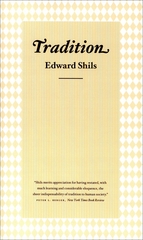 Tradition
Edward Shils
University of Chicago Press, 1981 Tradition, by esteemed sociologist Edward Shils, was the first book to fully explore the history, significance, and future of tradition as a whole. Intent on questioning the meaning of the antitraditionalist impulse in today's society, Shils argues here that the tendency to distrust and rebel against tradition is at the heart of tradition itself; only through suspicion and defiance does tradition actually move forward. Revealing the importance of tradition to social and political institutions, technology, science, literature, religion, and scholarship, Tradition remains the definitive work on this vital element of our society.
"Shils is a man of fabled learning, whose mind purrs powerfully like the moth at dusk. I hesitate to use the word conservative of him because it misses the central concern of his work, which is not conservatism, but the conservation of those human resources and achievements which are richest, and matter most."—David A. Martin, Times Literary Supplement
"Tradition is the first comprehensive treatment of the subject that encompasses the totality of tradition in all its multifaceted variables and functions. . . . It is a landmark analytical and theoretical sociological study that not only fills a need but also provides a basic model and impetus for further research."—H. Leon Abrams Jr., Sociology
Tradition and Authenticity in the Search for Ecumenic Wisdom
Thomas Langan
University of Missouri Press, 1992
Our emerging world system is bringing the great traditions and cultures it has spawned into ever more intimate and dangerous contact. Langan argues that we must struggle toward a unity of discourse respectful of genuine experiences of varying civilizations if we are to live peacefully on one planet.
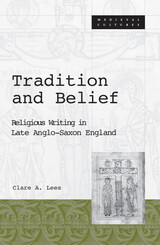 Tradition And Belief: Religious Writing in Late Anglo-Saxon England
Clara A. Lees
University of Minnesota Press, 1999 Looks at early religious texts and their influence on medieval literature and culture. Looks at early religious texts and their influence on medieval literature and culture. In this major study of Anglo-Saxon religious texts-sermons, homilies, and saints’ lives written in Old English-Clare A. Lees reveals how the invention of preaching transformed the early medieval church, and thus the culture of medieval England. By placing Anglo-Saxon prose within a social matrix, her work offers a new way of seeing medieval literature through the lens of culture.To show how the preaching mission of the later Anglo-Saxon church was constructed and received, Lees explores the emergence of preaching from the traditional structures of the early medieval church-its institutional knowledge, genres, and beliefs. Understood as a powerful rhetorical, social, and epistemological process, preaching is shown to have helped define the sociocultural concerns specific to late Anglo-Saxon England.The first detailed study of traditionality in medieval culture, Tradition and Belief is also a case study of one cultural phenomenon from the past. As such-and by concentrating on the theoretically problematic areas of history, religious belief, and aesthetics-the book contributes to debates about the evolving meaning of culture.ISBN 0-8166-3002-X Cloth £34.50 $49.95xxISBN 0-8166-3003-8 Paper £14.00 $19.95x232 Pages 5 7/8 x 9 NovemberMedieval Cultures Series, volume 19Translation inquiries: University of Minnesota Press
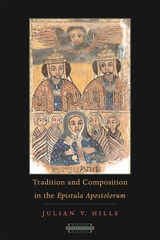 Tradition and Composition in the Epistula Apostolorum
Julian V. Hills
Harvard University Press, 2008 Rediscovered at the end of the nineteenth century in Coptic and Ethiopic versions, the Epistle of the Apostles (Epistula Apostolorum) is a "revelation dialogue," in which the risen Jesus converses with his disciples before his ascension and delivers instructions for strengthening the young church. In the first major study in English of this ancient document, Julian V. Hills probes its remarkable witness to the traditions that circulated in Jesus' name in the second century.
Hills tackles the document's literary framework, collecting and assessing signals to its composition. In detailed analyses of passages about Jesus' miracles, the first appearance of the risen Lord, the second advent, and the commissioning of the Apostles, Hills shows how older traditions were reshaped and interpreted according to the distinctive communal situation and theological vision of the author.
In Hills's careful and insightful work, scholars and students of early Christianity will find clues to the elusive reality of Christianity in the second century. This ancient Epistle can now become a prominent conversation partner among many newly accessible early post-resurrection traditions.
This expanded edition of the out-of-print original, published in 1990, includes a new preface and bibliography.
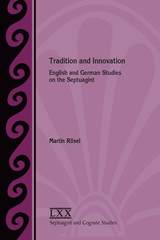 Tradition and Innovation: English and German Studies on the Septuagint
Martin Rösel
SBL Press, 2018 Explore the opportunities and challenges of Septuagint studies
Recent research into the Septuagint has revealed numerous examples of modifications of the meaning of the Hebrew text in the course of its translation into Greek. This collection of essays by one of the leading scholars on the Septuagint shows how complex the translation of individual books was, provides reasons for differences between the Hebrew and Greek Bibles, and paves the way for a theology of the Septuagint. Articles introduce the field of Septuagint studies, the problem of the Letter of Aristeas, and the Hellenistic environment and the hermeneutics of Hellenistic Judaism.
Features:
- A methodological discussion of whether and how a theology of the Septuagint can be written
- Essays introducing the field of Septuagint studies and its Hellenistic environment and the hermeneutics of Hellenistic Judaism
- Fifteen English and German essays covering twenty-five years of Septuagint research
Tradition and Innovation in Old English Metre
Rachel A. Burns
Arc Humanities Press, 2023
The importance of metrical analysis to the broad work of textual criticism and literary analysis cannot be overstated. In the thirty years since the publication of R. D. Fulk’s A History of Old English Meter, metrical theory has been brought to bear on questions of poetic style, dating and literary history, linguistics and language history, editing practice, manuscript analysis and scribal practice. The essays in this collection include contributions from both new scholars and established metrists. They focus on the application of metrical study to literary criticism and manuscript studies, engaging with current debate and offering new perspectives on the crucial role of metre to Old English scholarship.
Tradition and Modernity: Christian and Muslim Perspectives
David Marshall, Editor. Afterword by Rowan Williams
Georgetown University Press, 2015 Tradition and Modernity focuses on how Christians and Muslims connect their traditions to modernity, looking especially at understandings of history, changing patterns of authority, and approaches to freedom. The volume includes a selection of relevant texts from 19th- and 20th-century thinkers, from John Henry Newman to Tariq Ramadan, accompanied by illuminating commentaries.
Tradition and Modernity in Arabic Literature
Issa Boullata
University of Arkansas Press, 1997 Taken as a whole, these essays present a chorus on the rapid evolution of modern Arabic artistic achievement and how that art relates to the traditions and histories of both the Arab and Western worlds.
Tradition and the Rule of Faith in the Early Church
Ronnie J. Rombs
Catholic University of America Press, 2011 Tradition and the rule of faith are particularly apt themes for this collection of studies. The essays are written in honor of Joseph T. Lienhard, S.J., renowned American patristic scholar whose research and writings have focused on this particular theme.
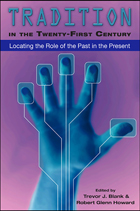 Tradition in the Twenty-First Century: Locating the Role of the Past in the Present
Trevor J. Blank and Robert Glenn Howard
Utah State University Press, 2013 In Tradition in the Twenty-First Century, eight diverse contributors explore the role of tradition in contemporary folkloristics. For more than a century, folklorists have been interested in locating sources of tradition and accounting for the conceptual boundaries of tradition, but in the modern era, expanded means of communication, research, and travel, along with globalized cultural and economic interdependence, have complicated these pursuits. Tradition is thoroughly embedded in both modern life and at the center of folklore studies, and a modern understanding of tradition cannot be fully realized without a thoughtful consideration of the past’s role in shaping the present.
Emphasizing how tradition adapts, survives, thrives, and either mutates or remains stable in today’s modern world, the contributors pay specific attention to how traditions now resist or expedite dissemination and adoption by individuals and communities. This complex and intimate portrayal of tradition in the twenty-first century offers a comprehensive overview of the folkloristic and popular conceptualizations of tradition from the past to present and presents a thoughtful assessment and projection of how “tradition” will fare in years to come. The book will be useful to advanced undergraduate or graduate courses in folklore and will contribute significantly to the scholarly literature on tradition within the folklore discipline.
Additional Contributors: Simon Bronner, Stephen Olbrys Gencarella, Merrill Kaplan, Lynne S. McNeill, Elliott Oring, Casey R. Schmitt, and Tok Thompson
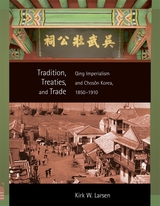 Tradition, Treaties, and Trade: Qing Imperialism and Chosŏn Korea, 1850–1910
Kirk W. Larsen
Harvard University Press, 2008 Relations between the Chosŏn and Qing states are often cited as the prime example of the operation of the “traditional” Chinese ”tribute system.” In contrast, this work contends that the motivations, tactics, and successes (and failures) of the late Qing Empire in Chosŏn Korea mirrored those of other nineteenth-century imperialists. Between 1850 and 1910, the Qing attempted to defend its informal empire in Korea by intervening directly, not only to preserve its geopolitical position but also to promote its commercial interests. And it utilized the technology of empire—treaties, international law, the telegraph, steamships, and gunboats.
Although the transformation of Qing–Chosŏn diplomacy was based on modern imperialism, this work argues that it is more accurate to describe the dramatic shift in relations in terms of flexible adaptation by one of the world’s major empires in response to new challenges. Moreover, the new modes of Qing imperialism were a hybrid of East Asian and Western mechanisms and institutions. Through these means, the Qing Empire played a fundamental role in Korea’s integration into regional and global political and economic systems.
Traditional and Modern Natural Resource Management in Latin America
Francisco J. Pichon
University of Pittsburgh Press, 1999
This book identifies a major problem facing developing nations and the countries and sources that fund them: the lack of attention and/or effective strategies available to prevent farmers in underdeveloped and poorly endowed regions from sinking still deeper into poverty while avoiding further degradation of marginal environments. The contributors propose an alliance of scientific knowledge with native skill as the best way to proceed, arguing that folk systems can often provide effective management solutions that are not only locally effective, but which may have the potential for spatial diffusion. While this has been said before, the volume makes one of the best articulated statements of how to implement such an approach.
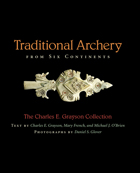 Traditional Archery from Six Continents: The Charles E. Grayson Collection
Text by Charles E. Grayson, Mary French, Michael J. O'Brien, & Photos by Daniel
University of Missouri Press, 2007
As a major hunting tool and weapon, the bow changed human history around the world, and its diverse forms reflect the cultures that adopted it. Those variations can be seen in the Charles E. Grayson Archery Collection housed at the University of Missouri–Columbia Museum of Anthropology, one of the largest and most comprehensive assemblages of archery-related materials in the world. This handsome book offers a unique look at archery as it has been practiced through the ages.
Drawing on a collection of more than five thousand bows, arrows, and associated paraphernalia, Traditional Archery from Six Continents presents color photographs and descriptions of some three hundred items—including quivers, thumb rings, and more—that represent traditional archery practices and customs from around the world. From the Chinese “monkey bow” to the English longbow, the artifacts are organized by region, taking in equipment from Asia, the Middle East, Africa, the Americas, and Europe used over the past five hundred years.
The book’s introduction provides an overview of traditional archery and its nomenclature, and chapter essays situate the items in their historical, cultural, and technological contexts. Plate descriptions note materials, construction methods, dimensions, and temporal and cultural affiliations. The sharp, detailed photographs will enable users to identify the geographic or cultural origins of other pieces by visual comparison. Additional illustrations show how archery equipment has been used in various settings such as hunting, warfare, and sport.
These superb representations from a masterful collection constitute a complete introduction to worldwide archery and mark the first wide-ranging survey of European and non-European archery equipment. Traditional Archery from Six Continents will be the standard reference work in the study of archery, indispensable for students of material culture or general readers interested in the history of this timeless art.
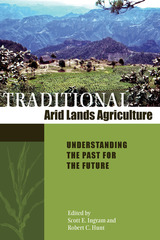 Traditional Arid Lands Agriculture: Understanding the Past for the Future
Edited by Scott E. Ingram and Robert C. Hunt
University of Arizona Press, 2015 Traditional Arid Lands Agriculture is the first of its kind. Each chapter considers four questions: what we don’t know about specific aspects of traditional agriculture, why we need to know more, how we can know more, and what research questions can be pursued to know more. What is known is presented to provide context for what is unknown.
Traditional agriculture, nonindustrial plant cultivation for human use, is practiced worldwide by millions of smallholder farmers in arid lands. Advancing an understanding of traditional agriculture can improve its practice and contribute to understanding the past. Traditional agriculture has been practiced in the U.S. Southwest and northwest Mexico for at least four thousand years and intensely studied for at least one hundred years. What is not known or well-understood about traditional arid lands agriculture in this region has broad application for research, policy, and agricultural practices in arid lands worldwide.
The authors represent the disciplines of archaeology, anthropology, agronomy, art, botany, geomorphology, paleoclimatology, and pedology. This multidisciplinary book will engage students, practitioners, scholars, and any interested in understanding and advancing traditional agriculture.
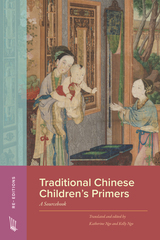 Traditional Chinese Children’s Primers: A Sourcebook
Edited by Katherine Ngo and Kelly Ngo
Lever Press, 2025 Traditional Chinese Children’s Primers: A Sourcebook is the first anthology of traditional Chinese children’s textbooks in a European language. This selection of eleven primers, spanning over two thousand years of Chinese education history, remains well-known in East Asia and the global diaspora of Confucian-heritage cultures. These texts represent an important genre of children’s literature and education materials that were employed to teach basic vocabulary, develop cultural literacy, and start students on their journey toward greater fortunes in the imperial examinations.
The sourcebook covers texts from the second-century BCE to the late twentieth-century, and a range of subject areas, including etiquette instruction, literacy training, character education, and Confucian and Daoist thought. The Classic of Family Reverence (Xiaojing), for example, opens a window onto early Confucian thought in ancient China, while the Extended Wise Sayings (Zengguang xian wen) represents the eclectic worldviews and beliefs of the seventeenth century, and Lord Wenchang’s Essay on Quiet Merits (Wenchang dijun yinzhi wen) introduces readers to the tradition of popular morality books.
This first-of-a-kind sourcebook in English addresses a long-standing gap in the translation of primers and provides impetus for research in the development of character and virtues, comparative literature, and cross-cultural education studies.
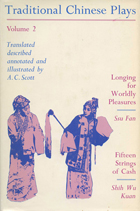 Traditional Chinese Plays, Volume II
A.C. Scott
University of Wisconsin Press, 1972 The world of traditional Chinese drama can be at once fascinating and bewildering to the uninitiated Western observer. Attuned to his own dramatic conventions, he is hard put to apprehend the delicate fusion of poetry, music, and subtle gesture which is the essence of Chinese theatre. Because of these difficulties, the task of translating traditional Chinese drama must go far beyond the conventional literary treatment and evoke the entire world of stagecraft and directing.
Longing for Worldly Pleasures (Ssu Fan) is a lyric monologue in which a young Buddhist laments the waning of her youth in the seclusion of the convent. The brief piece involves a complexity of mood which makes it an actor’s tour de force, undertaken only by the most highly skilled performers.
Fifteen Strings of Cash (Shih Wu Kuan), a much longer play, is a comic murder mystery satirizing bureaucratic ineptitude in the administration of justice. The comic lead role of Lou the Rat is a virtuoso part which illustrates the intricate mimetic art of the traditional comic actor and was the play’s main appeal to Chinese audiences.
Traditional Healers and Childhood in Zimbabwe
Pamela Reynolds
Ohio University Press, 1995 Based on the author’s fieldwork among the people of Zezuru, this study focuses on children as clients and as healers in training. In Reynolds’s ethnographic investigation of possession and healing, she pays particular attention to the way healers are identified and authenticated in communities, and how they are socialized in the use of medicinal plants, dreams, and ritual healing practices. Reynolds examines spiritual interpretation and remediation of children’s problems, including women’s roles in these activities, and the Zezuru concepts of trauma, evil, illness, and death. Because this study was undertaken just after the War of Liberation in Zimbabwe, it also documents the devastating effects of the war.
Traditional Medicine in Modern China: Science, Nationalism, and the Tensions of Cultural Change
Ralph C. Croizier
Harvard University Press This study focuses on the controversy over traditional Chinese medicine in order to illuminate many of the central concerns in modern Chinese intellectual history. After describing the development of this oldest surviving medical tradition and showing its position in Confucian society, the author demonstrates the significance of its clash with modern scientific medicine for the cultural and intellectual history of modern China. He shows how, from the fall of the Empire to the Peoples Republic, the medical issue reflects the tensions engendered by the often conflicting claims of cultural nationalism and reverence for modern science.
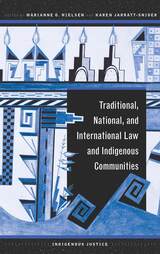 Traditional, National, and International Law and Indigenous Communities
Edited by Marianne O. Nielsen and Karen Jarratt-Snider
University of Arizona Press, 2020 This volume of the Indigenous Justice series explores the global effects of marginalizing Indigenous law. The essays in this book argue that European-based law has been used to force Indigenous peoples to assimilate, has politically disenfranchised Indigenous communities, and has destroyed traditional Indigenous social institutions. European-based law not only has been used as a tool to infringe upon Indigenous human rights, it also has been used throughout global history to justify environmental injustices, treaty breaking, and massacres. The research in this volume focuses on the resurgence of traditional law, tribal–state relations in the United States, laws that have impacted Native American women, laws that have failed to protect Indigenous sacred sites, the effect of international conventions on domestic laws, and the role of community justice organizations in operationalizing international law.
While all of these issues are rooted in colonization, Indigenous peoples are using their own solutions to demonstrate the resilience, persistence, and innovation of their communities. With chapters focusing on the use and misuse of law as it pertains to Indigenous peoples in North America, Latin America, Canada, Australia, and New Zealand, this book offers a wide scope of global injustice. Despite proof of oppressive legal practices concerning Indigenous peoples worldwide, this book also provides hope for amelioration of colonial consequences.
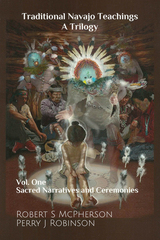 Traditional Navajo Teachings: Sacred Narratives and Ceremonies
Robert S. McPherson
University Press of Colorado, 2020 "The books should be required reading for anyone who comes to teach, practice medicine or work on the Navajo Nation in any capacity- as well as young Navajos who seek a deeper understanding of their culture."
—Cindy Yurth, The Navajo Times
"In Sacred Narratives and Ceremonies, the authors lay the foundation of traditional Navajo beliefs and practices. They provide an inside perspective rarely discussed by non-medicine people and share the beauty and power of a system that unites humans to the holy beings—through teachings, rituals, materials, and daily behavior. This book is pure gold. It is full of traditional wisdom available to those wanting to understand Navajo culture as seen through the eyes of its elders. I highly recommend this book as a treasure trove for the Diné people."
—Clayton Long, participant/creator of the Navajo Rosetta Stone; Bilingual Education Director (retired), San Juan School District, Utah; and curriculum developer for the Navajo Nation
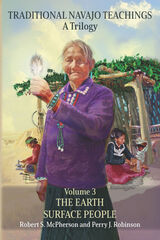 Traditional Navajo Teachings: The Earth Surface People
Robert S. McPherson
University Press of Colorado, 2020 "The Earth Surface People, the final work in this trilogy, provides teachings about Navajo life from cradleboard to grave. Central to all is achieving “Long Life, Happiness” as one moves through various stages of existence. The second half of this book examines thoughts concerning the organization of the human body, sickness, western medicine, and death, all of which are part of the Pollen Path. How one walks this trail to his or her final destination is measured by one’s ability to live through its teachings. The four sacred directions with their associated powers are essential to earth life as outlined through ceremonies and daily practices. Here, one moves on a journey from teachings of the past to issues of the present. This volume is extremely helpful for youth to understand life values and the importance of identity, as well as acting as a reminder for adults of the enabling power of traditional culture."
—Clayton Long, a participant/creator of the Navajo Rosetta Stone; Bilingual Education Director (retired), San Juan School District, Utah; and curriculum developer for the Navajo Nation.
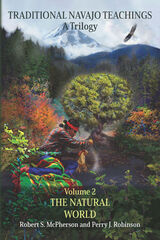 Traditional Navajo Teachings: The Natural World
Robert S. McPherson
University Press of Colorado, 2020 "Navajo teachings provide a classic study of a land-based religion that involves every aspect of the physical world in a spiritual universe. Nothing is too big or small—everything holds a power, provides a teaching, and responds through an inner form. Beyond the material life of daily existence, there lies a world of interconnected relations made apparent in Volume II, The Natural World. This book graphically describes elements of life rooted in the Navajo philosophy of hózhǫ́. A unified harmony results. I highly recommend this book as a study in understanding the power of relationships that populate the Diné worldview."
—Clayton Long, a participant/creator of the Navajo Rosetta Stone; Bilingual Education Director (retired), San Juan School District, Utah; and curriculum developer for the Navajo Nation. "For days after reading The Natural World, I found myself looking at my surroundings in a different way. The vibrant spirit of the earth and every plant or animal I encountered seemed to glow through a translucent shell. I have always been a nature-lover and gotten a sense of peace from being outdoors, but since reading these beautiful Navajo teachings I am filled with a profound sense of joy and gratitude every time I walk outside."
—Cindy Yurth, The Navajo Times
 The Traditional Theory of Literature
Ray Livingston
University of Minnesota Press, 1962
The Traditional Theory of Literature was first published in 1962. Minnesota Archive Editions uses digital technology to make long-unavailable books once again accessible, and are published unaltered from the original University of Minnesota Press editions.
Through a study of works of the contemporary Indian scholar Ananda K. Coomaraswamy, as well as of other exponents of the ancient doctrine of the Perennial Philosophy, Professor Livingston develops and explicates a traditional theory of literature.
Coomaraswamy, who died in 1947, published widely on a broad range of subjects in art, philosophy, literature, and other fields. Although he is relatively little known, those acquainted with is work acclaim him as one of the great thinkers of our time. His study and writing were devoted primarily to bridging the gap between Oriental and Western cultures.
From the treasury of traditional learning which Coomaraswamy amassed in his profusion of books and articles, Professor Livingston has drawn those elements which contribute to an essential theory of literature. Although he quotes from some of Coomaraswamy's Oriental sources, he delineates the theory in an idiom that is more familiar to the West, as stated or implied in the works of Dante, Milton, and Blake, among others.
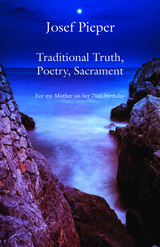 Traditional Truth, Poetry, Sacrament: For My Mother, on Her 70th Birthday
Josef Pieper
St. Augustine's Press, 2019 Pieper collects his contributions to radio programs and to a number of journals and periodicals. The book also includes a selection of notes and comments. The contributions fall into two main groups: the period which encompasses the immediate pre-war period as well as the war period itself, and the post-war period up to 1953.The reader becomes witness, first, to Pieper’s problems with the National Socialist regime and, second, to his problems with the ensuing challenges to religious life as it is exposed to increasing secularization. As with his later works, Pieper draws on traditional wisdom which, for him, dates back to Plato and Aristotle, and in these contributions we also see his early preoccupation with the wisdom of St. Thomas Aquinas. The normal boundaries between philosophy and theology are here not clearly drawn. Pieper is preoccupied with the mystery of our world and its importance as a source of symbols signifying deeper levels of reality. He sees the sacraments as achieving their fundamental effect from divine intervention, but he also highlights the need for careful observance of the rituals, so that their meaning is not obscured. Proper execution of the sacrament should enable the faithful to enjoy the existential fruits of their participation in the ritual. This work manifests the organic cohesion of Pieper’s thinking, and it reflects his profound awareness of the role to be played not so much by the professional (academic) philosopher as by the existential Philosophizer.
 Traditional Tunes and Lived Religion in the Protestant Church on the Central Moluccas, Indonesia
Jip Lensink
Amsterdam University Press, 2025 In the southeast of Indonesia, on the Moluccas, theologians are developing contextual theologies for the Moluccan Protestant church. The Moluccas were colonized by the Dutch for more than three centuries. As an effort of religious decolonization, Moluccan theologians aim to better connect Christianity with the cultural realities of congregants.
This book is about the contextualization of church music. Christian Izaac Tamaela proposed and instigated the transposition of Moluccan traditional music to the Moluccan Protestant church. In the book, the author asks how traditional music, as framed within contextual Moluccan theology, is interrelated with lived religion.
Vivid descriptions of liturgical practices, music traditions, and personal encounters map the entanglements between Moluccan culture, Moluccan Protestantism, and Moluccan music. The author traces the theological idea of traditional church music to lived religious practices and attitudes among ministers, musicians, and congregants. The resonances and dissonances of this process show the continuous transformation of Moluccan traditional music.
For a selection of the audio-visual material, visit the website www.jiplensink.nl/tt.
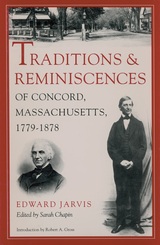 Traditions and Reminiscences of Concord, Massachusetts, 1779-1878
Edward Jarvis
University of Massachusetts Press, 1993 A statistician and pioneer in the treatment of the mentally ill, Edward Jarvis (1803-1884) decided late in life to record his recollections of Concord, Massachusetts, the town in which he was raised. Using Lemuel Shattuck's History of Concord as the springboard for his thoughts, Jarvis produced a remarkable document. Traditions and Reminiscences is encyclopedic in scope but intimate in style; it provides an astonishingly detailed account of life in early nineteenth-century Concord. Jarvis escorts us through the family home, making certain we understand the function and value of each item in the domestic scene. Then he is off to the neighbors' houses, to the schoolhouse, the church, the social clubs, the library, the post office, the town hall, and even the tavern, where he unabashedly counts patrons' drinks. Along the way we learn about neighborly cooperation - quiltings, husking bees, and barn raisings - about social manners and respectability, and about local vices. The result is a vast storehouse of information and a vivid portrait of life in an early nineteenth-century preindustrial community. The memoir also provides a first-hand witness to the crusade for moral reform that transformed mid-nineteenth-century New England.
 Traditions in World Cinema
Badley, Linda R
Rutgers University Press, 2006 Traditions in World Cinema brings together a colorful and wide ranging collection of world cinematic traditions—national, regional, and global—all of which are in need of introduction, investigation and, in some cases, critical reassessment. The movements described range from well-known traditions such as German expressionism, Italian neorealism, French, British, and Czech new wave, and new Hollywood cinema to those of emerging significance, such as Danish Dogma, postcommunist cinema, Brazilian post–Cinema Novo, new Argentine cinema, pre-independence African film traditions, Israeli persecution films, new Iranian cinema, Hindi film songs, Chinese wenyi pian melodrama, Japanese horror, and global found-footage cinema.
The essays, all written by recognized experts in the field, are jargon free and accessible to both general readers and students. In addition, each chapter is followed by a list of suggested films and readings, offering readers pathways to further viewing and study. Bringing fresh insights to those movements that have provided significant and noteworthy alternatives to Hollywood, this book is an essential introduction to the rich diversity of world cinema.
Traditions of Japanese Art: Selections from the Kimiko and John Powers Collection
John M. Rosenfield and Shujiro Shimada (eds.)
Harvard University Press, 1970 The 153 masterworks illustrated here represent major trends in Japanese art from its prehistory to its recent past. Exploring the religious, social, intellectual, and purely aesthetic values that helped to bring them about, John M. Rosenfield and Shūjirō Shimada provide a thorough historical and aesthetic account of each object.
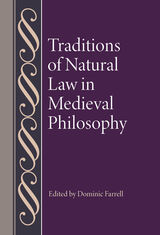 Traditions of Natural Law in Medieval Philosophy
Dominic Farrell
Catholic University of America Press, 2022 Reflection on natural law reaches a highpoint during the Middle Ages. Not only do Christian thinkers work out the first systematic accounts of natural law and articulate the framework for subsequent reflection, the Jewish and Islamic traditions also develop their own canonical statements on the moral authority of reason vis-à-vis divine law. In the view of some, they thereby articulate their own theories of natural law.
These various traditions of medieval reflection on natural law, and their interrelation, merit further study, particularly since they touch upon many current philosophical concerns. They grapple with the problem of ethical and religious pluralism. They consider whether universally valid standards of action and social life are accessible to those who rely on reason rather than divine law. In so doing, they develop sophisticated accounts of many central issues in metaethics, action theory, jurisprudence, and the philosophy of religion. However, do they reach a consensus about natural law, or do they end up defending incommensurable ethical frameworks? Do they confirm the value of arguments based on natural law or do they cast doubt on it?
This collection brings together contributions from various expert scholars to explore these issues and the pluralism that exists within medieval reflection on natural law. It is the first one to study the relation between the natural law theories of these various traditions of medieval philosophy: Jewish, Islamic, Byzantine, and Latin.
Each of the first four essays surveys the ‘natural law theory’ of one of the religious traditions of medieval philosophy—Jewish, Islamic, Byzantine, and Latin—and its relation to the others. The next four essays explore some of the alternative accounts of natural law that arise within the Latin tradition. They range over St. Bonaventure, Peter of Tarentaise, Matthew of Aquasparta, John Duns Scotus, and Marsilius of Padua.
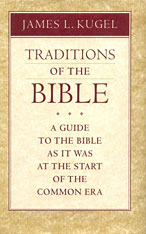 Traditions of the Bible: A Guide to the Bible As It Was at the Start of the Common Era
James L. Kugel
Harvard University Press, 1998 James Kugel's The Bible As It Was (1997) has been welcomed with universal praise. Here now is the full scholarly edition of this wonderfully rich and illuminating work, expanding the author's findings into an incomparable reference work.
Focusing on two dozen core stories in the Pentateuch--from the Creation and Tree of Knowledge through the Exodus from Egypt and journey to the Promised Land--James Kugel shows us how the earliest interpreters of the scriptures radically transformed the Bible and made it into the book that has come down to us today. Kugel explains how and why the writers of this formative age of interpretation--roughly 200 B.C.E. to 150 C.E.--assumed such a significant role. Mining their writings--including the Dead Sea Scrolls, works of Philo and Josephus and letters of the Apostle Paul, and writings of the Apostolic Fathers and the rabbinic Sages--he quotes for us the seminal passages that uncover this crucial interpretive process.
For this full-scale reference work Kugel has added a substantial treasury of sources and passages for each of the 24 Bible stories. It will serve as a unique guide and sourcebook for biblical interpretation.
Traditions, Transitions, and Technologies: Themes in Southwestern Archaeology
Sarah H. Schlanger
University Press of Colorado, 2016 Traditions, Transitions, and Technologies offers diverse perspectives on the state of Southwestern archaeology at the end of the twentieth century, linking the legacies of the past to present trends by placing current research into historical context. Organized around classic themes central to the history of the discipline, this volume explores important new research avenues for understanding the connections between historic Pueblo communities and their distant ancestors, the origins of farming traditions, and the development of the Southwest's distinctive tools and technologies. Providing a unique overview of past and present work in this important region, Traditions, Transitions, and Technologies will be of interest to all doing archaeological research in the Southwestern United States.
 Traffic and the Police: Variations in Law-Enforcement Policy
John A. Gardiner
Harvard University Press Although laws governing moving-traffic violations are fairly uniform throughout the United States, the effective levels of enforcement of these laws vary dramatically from city to city. Basing this study on statistics from nearly seven hundred police departments, census data, personal interviews, on-the-spot observation, and detailed case studies of four Massachusetts cities--Lynn, Waltham, Malden, and Cambridge--Mr. Gardiner identifies and discusses the factors that determine police decisionmaking in relation to traffic violations.
After a brief description of the role of various state and local agencies in settling traffic-enforcement policy, the author analyzes in depth the traffic activities of the four Massachusetts cities. He examines in particular the extent of public pressure in seeking modification of enforcement standards, intradepartmental practices, or "norms," and the role of traffic enforcement in the total spectrum of police activities.
Following the case studies, the author discusses the variations among the traffic policies of municipal police departments, and questions the "public pressure" interpretation of police policies. Mr. Gardiner finds that, although citizens and city officials frequently seek to influence individual decisions, they seldom know how strict or lenient their department's general policies are, and seldom care. In addition, the author finds no significant connection between the severity of ticketing policies and such factors as income, race, or education, but does find some correlation with the geographical stability of a city's population.
Finally, the author concludes that the chief source of departmental traffic policy is an internally established set of norms concerning the importance of traffic work and the frequency with which officers should write tickets. Evidence from cities that change their traffic policies indicates that individual preferences on the part of chiefs or ranking officers are the primary source of these norms.
This book is an important contribution to the growing area in social sciences that deals with law enforcement and, more broadly, local political systems.
Traffic Flow Prediction: Methods and applications
Qing-Jie Kong
The Institution of Engineering and Technology, 2017 Traffic flow prediction is key aspect of intelligent transport systems such as traffic management systems, adaptive traffic control systems and traffic information services systems. Experiences have been made with traffic flow prediction modules. But a book is lacking to discuss latest results of traffic flow prediction technology. This book brings together the latest research on methods of traffic flow prediction and their applications, and provides a comprehensive reference book for transportation researchers and engineers.
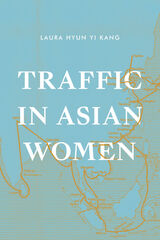 Traffic in Asian Women
Laura Hyan Yi Kang
Duke University Press, 2020 In Traffic in Asian Women Laura Hyun Yi Kang demonstrates that the figure of "Asian women" functions as an analytic with which to understand the emergence, decline, and permutation of U.S. power/knowledge at the nexus of capitalism, state power, global governance, and knowledge production throughout the twentieth century. Kang analyzes the establishment, suppression, forgetting, and illegibility of the Japanese military "comfort system" (1932–1945) within that broader geohistorical arc. Although many have upheld the "comfort women" case as exemplary of both the past violation and the contemporary empowerment of Asian women, Kang argues that it has profoundly destabilized the imaginary unity and conceptual demarcation of the category. Kang traces how "Asian women" have been alternately distinguished and effaced as subjects of the traffic in women, sexual slavery, and violence against women. She also explores how specific modes of redress and justice were determined by several overlapping geopolitical and economic changes ranging from U.S.-guided movements of capital across Asia and the end of the Cold War to the emergence of new media technologies that facilitated the global circulation of "comfort women" stories.
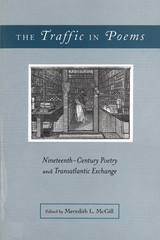 The Traffic In Poems: Nineteenth-Century Poetry and Transatlantic Exchange
McGill, Meredith L
Rutgers University Press, 2008 The transatlantic crossing of people and goods shaped nineteenth-century poetry in surprising ways that cannot be fully understood through the study of separate national literary traditions. American and British poetic cultures were bound by fascination, envy, influence, rivalry, recognition, and piracy, as well as by mutual fantasies about and competition over the Caribbean.
Drawing on examples such as Felicia Hemans's elaboration of the foundational American myth of Plymouth Rock, Emma Lazarus's ambivalent welcome of Europe's cast-off populations, black abolitionist Mary Webb's European performances of Hiawatha, and American reprints of Robert Browning and George Meredith, the eleven essays in this book focus on poetic depictions of exile, slavery, immigration, and citizenship and explore the often asymmetrical traffic between British and American poetic cultures.
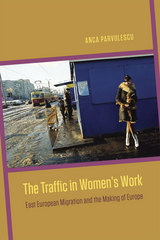 The Traffic in Women's Work: East European Migration and the Making of Europe
Anca Parvulescu
University of Chicago Press, 2014 “Welcome to the European family!” When East European countries joined the European Union under this banner after 1989, they agreed to the free movement of goods, services, capital, and persons. In this book, Anca Parvulescu analyzes an important niche in this imagined European kinship: the traffic in women, or the circulation of East European women in West Europe in marriage and as domestic servants, nannies, personal attendants, and entertainers. Analyzing film, national policies, and an impressive range of work by theorists from Giorgio Agamben to Judith Butler, she develops a critical lens through which to think about the transnational continuum of “women’s work.” Parvulescu revisits Claude Lévi-Strauss’s concept of kinship and its rearticulation by second-wave feminists, particularly Gayle Rubin, to show that kinship has traditionally been anchored in the traffic in women. Reading recent cinematic texts that help frame this, she reveals that in contemporary Europe, East European migrant women are exchanged to engage in labor customarily performed by wives within the institution of marriage. Tracing a pattern of what she calls Americanization, Parvulescu argues that these women thereby become responsible for the labor of reproduction. A fascinating cultural study as much about the consequences of the enlargement of the European Union as women’s mobility, The Traffic in Women’s Work questions the foundations of the notion of Europe today.
Traffic Information and Control
Ruimin Li
The Institution of Engineering and Technology, 2021 Written by an international team of researchers, this book focuses on traffic information processing and signal control using emerging types of traffic data. It conveys advanced methods to estimate and predict traffic flows at different levels, including macroscopic, mesoscopic and microscopic. The aim of these predictions is to optimize traffic signal control for intersections and to mitigate ever-growing traffic congestion.
Traffic Safety Data: Sources, analysis and applications
Aliaksei Laureshyn
The Institution of Engineering and Technology, 2025 Traffic fatalities decrease in most high-income countries, though it is still a long journey to reach the Vision Zero target. The trend is quite the opposite in low- and middle-income countries, where road casualty numbers stagnate at best. In both contexts, however, access to meaningful and reliable data is crucial for developing efficient traffic safety policies and, ultimately, saving lives on streets and roads.
Traffic Safety Reform in the United States and Great Britain
Jerome S. Legge
University of Pittsburgh Press, 1991
Recently, there has been a renewed concern with highway safety, reflected in wide media coverage and new laws aimed at reducing highway deaths and injuries. Legge examines three initiatives that have been studied only in isolation: stricter drinking-age laws, mandated use of seat belts, and deterrents to drunk driving. His research covers three large industrial states-New York, California, and Michigan, as well as Great Britain, each of which uses a different mix of these initiatives. Using a combination of theory and research methodology, Legge tests a number of models on how traffic fatalities might be reduced and offers valuable suggestions for policy makers, researchers, and activists.
Traffic with Macbeth
Larissa Szporluk
Tupelo Press, 2011 A buffeting sequence of dramatic monologues that provoke and disturb, Larissa Szporluk’s Traffic with Macbeth evokes a dark world linked to the black magic of Shakespeare’s tortured Scottish assassin, usurper of kings. Baroque in their sweep of high style and low slang, melody and dissonance, these poems use shifting animate and inanimate speakers and surrealist leaps to convey human brutality, the vulnerability of women and children, madness, and the struggle to escape the limitations of this world.
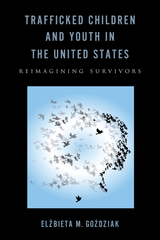 Trafficked Children and Youth in the United States: Reimagining Survivors
Elzbieta M. Gozdziak
Rutgers University Press, 2016 Trafficked children are portrayed by the media—and even by child welfare specialists—as hapless victims who are forced to migrate from a poor country to the United States, where they serve as sex slaves. But as Elzbieta M. Gozdziak reveals in Trafficked Children in the United States, the picture is far more complex. Basing her observations on research with 140 children, most of them girls, from countries all over the globe, Gozdziak debunks many myths and uncovers the realities of the captivity, rescue, and rehabilitation of trafficked children. She shows, for instance, that none of the girls and boys portrayed in this book were kidnapped or physically forced to accompany their traffickers. In many instances, parents, or smugglers paid by family members, brought the girls to the U.S. Without exception, the girls and boys in this study believed they were coming to the States to find employment and in some cases educational opportunities. Following them from the time they were trafficked to their years as young adults, Gozdziak gives the children a voice so they can offer their own perspective on rebuilding their lives—getting jobs, learning English, developing friendships, and finding love. Gozdziak looks too at how the children’s perspectives compare to the ideas of child welfare programs, noting that the children focus on survival techniques while the institutions focus, not helpfully, on vulnerability and pathology. Gozdziak concludes that the services provided by institutions are in effect a one-size-fits-all, trauma-based model, one that ignores the diversity of experience among trafficked children.
Breaking new ground, Trafficked Children in the United States offers a fresh take on what matters most to these young people as they rebuild their lives in America.
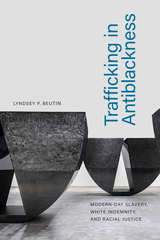 Trafficking in Antiblackness: Modern-Day Slavery, White Indemnity, and Racial Justice
Lyndsey P. Beutin
Duke University Press, 2023 In Trafficking in Antiblackness Lyndsey P. Beutin analyzes how campaigns to end human trafficking—often described as “modern-day slavery”—invoke the memory of transatlantic slavery to support positions ultimately grounded in antiblackness. Drawing on contemporary antitrafficking visual culture and media discourse, she shows how a constellation of media, philanthropic, NGO, and government actors invested in ending human trafficking repurpose the history of transatlantic slavery and abolition in ways that undermine contemporary struggles for racial justice and slavery reparations. The recurring narratives, images, and figures such as “slavery in Africa,” “Arab slave traders,” and “Black incapacity for self-governance” discursively turn Black people across the diaspora into the enslavers of the past and present in place of white Americans and Europeans. Doing so, Beutin contends, creates a rhetorical defense against being held liable for slavery’s dispossessions and violence. Despite these implications, Beutin demonstrates that antitrafficking discourse remains popular and politically useful for former slaving nations and their racial beneficiaries because it refashions historic justifications for white supremacy into today’s abolition of slavery.
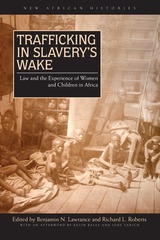 Trafficking in Slavery’s Wake: Law and the Experience of Women and Children in Africa
Benjamin N. Lawrance
Ohio University Press, 2012 Women and children have been bartered, pawned, bought, and sold within and beyond Africa for longer than records have existed. This important collection examines the ways trafficking in women and children has changed from the aftermath of the “end of slavery” in Africa from the late nineteenth century to the present. The formal abolition of the slave trade and slavery did not end the demand for servile women and children. Contemporary forms of human trafficking are deeply interwoven with their historical precursors, and scholars and activists need to be informed about the long history of trafficking in order to better assess and confront its contemporary forms. This book brings together the perspectives of leading scholars, activists, and other experts, creating a conversation that is essential for understanding the complexity of human trafficking in Africa. Human trafficking is rapidly emerging as a core human rights issue for the twenty-first century. Trafficking in Slavery’s Wake is excellent reading for the researching, combating, and prosecuting of trafficking in women and children. Contributors: Margaret Akullo, Jean Allain, Kevin Bales, Liza Stuart Buchbinder, Bernard K. Freamon, Susan Kreston, Benjamin N. Lawrance, Elisabeth McMahon, Carina Ray, Richard L. Roberts, Marie Rodet, Jody Sarich, and Jelmer Vos.
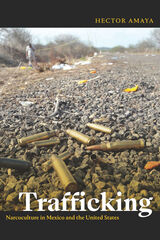 Trafficking: Narcoculture in Mexico and the United States
Hector Amaya
Duke University Press, 2020 In Trafficking Hector Amaya examines how the dramatic escalation of drug violence in Mexico in 2008 prompted new forms of participation in public culture in Mexico and the United States. He contends that, by becoming a site of national and transnational debate about the role of the state, this violence altered the modes publicness could take, transforming assumptions about freedom of expression and the rules of public participation. Amaya examines the practices of narcocorrido musicians who take advantage of digital production and distribution technologies to escape Mexican censors and to share music across the US-Mexico border, as well as anonymous bloggers whose coverage of trafficking and violence from a place of relative safety made them public heroes. These new forms of being in the public sphere, Amaya demonstrates, evolved to exceed the bounds of the state and traditional media sources, signaling the inadequacy of democratic theories of freedom and publicness to understand how violence shapes public discourse.
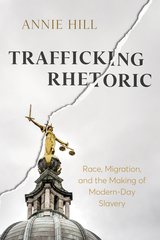 Trafficking Rhetoric: Race, Migration, and the Making of Modern-Day Slavery
Annie Hill
Ohio State University Press, 2024 Honorable Mention, 2025 NCA Public Address Division’s Marie Hochmuth Nichols Award
Human trafficking has generated intense global concern, with stories of sex slavery and images of women forced into prostitution so persuasive that states have raced to respond ahead of empirical data and clear definitions of the crime. In Trafficking Rhetoric, Annie Hill analyzes the entanglement of state veneration and state violence by tracking how the United Kingdom points to the alleged crimes of others in order to celebrate itself and conceal its own aggression. Hill compares the UK’s acclaimed rescue approach to human trafficking with its hostile approach to migration, arguing that they are two sides of the same coin—one that relies on rhetorical constructions of “trafficked women” and “illegal migrants” to materialize the UK as an Anglo-white space.
Drawing from official estimates, policy papers, NGO reports, news stories, and awareness campaigns and situating them in the broader EU context, Hill accounts for why the UK’s antitrafficking agenda emerged with such rhetorical force in the early twenty-first century. Trafficking Rhetoric reframes controversies over labor, citizenship, and migration while challenging the continued traction of race-baiting and gender bias in determining who has the right to live, work, and belong in the nation.
 Trafficking Women’s Human Rights
Julietta Hua
University of Minnesota Press, 2011 The history of human beings bought and sold, forced into lives of abject servitude or sexual slavery, is a story as old as civilization and yet still of global concern today. How this story is told, Julietta Hua argues, says much about our cultural beliefs. Through a critical inquiry into representations of human trafficking, she reveals the political, social, and cultural strains underlying our current preoccupation with this issue and the difficulty of framing human rights in universal terms. In Trafficking Women’s Human Rights, Hua maps the ways in which government, media, and scholarship have described sex trafficking for U.S. consumption. As her investigation takes us from laws like the Victims of Trafficking and Violence Protection Act to political speeches and literary and media images, it uncovers dark assumptions about race, difference, and the United States’ place in the world expressed—and often promoted—by such images. The framing itself, exploiting dichotomies of victim/agent, rescued/rescuer, trafficked/smuggled, illustrates the limits of universalism in addressing human rights. Uniquely broad in scope, this work considers the laws of human trafficking in conjunction with popular culture. In doing so, it constructively draws attention to the ways in which notions of racialized sexualities form our ideas about national belonging, global citizenship, and, ultimately, human rights.
 Tragedies, Volume I: Hercules. Trojan Women. Phoenician Women. Medea. Phaedra
Revised edition
Harvard University Press, 2018 Spectacular verse drama.
Seneca is a figure of first importance in both Roman politics and literature: a leading adviser to Nero who attempted to restrain the emperor’s megalomania; a prolific moral philosopher; and the author of verse tragedies that strongly influenced Shakespeare and other Renaissance dramatists.
Seneca’s plays depict intense passions and interactions in rhetoric that is equally strong. Their perspective is much bleaker than that adopted in his prose writings. His plots are based on mythical episodes, in keeping with classical tradition. But the political realities of imperial Rome are also reflected in an obsessive concern with power and dominion over others. The Octavia is our sole surviving example of a Roman historical play; set at Nero’s court, it was probably written by an admirer of Seneca as statesman and dramatist.
John G. Fitch has thoroughly revised his two-volume edition of Seneca’s Tragedies to take account of the textual and interpretive scholarship that has appeared since its initial publication. His translation conveys the force of Seneca’s dramatic language and the lyric quality of his choral odes.
Tragedies, Volume I: Hercules. Trojan Women. Phoenician Women. Medea. Phaedra
Seneca
Harvard University Press, 2002 Seneca is a figure of first importance in both Roman politics and literature: a leading adviser to Nero who attempted to restrain the emperor's megalomania; a prolific moral philosopher; and the author of verse tragedies that strongly influenced Shakespeare and other Renaissance dramatists. Here is the first of a new two-volume edition of Seneca's tragedies, with a fully annotated translation facing the Latin text.
Seneca's plays depict intense passions and interactions in an appropriately strong rhetoric. Their perspective is much bleaker than that of his prose writings. In this new translation John Fitch conveys the force of Seneca's dramatic language and the lyric quality of his choral odes.
 Tragedies, Volume II: Oedipus. Agamemnon. Thyestes. Hercules on Oeta. Octavia
Revised edition
Harvard University Press, 2018 Spectacular verse drama.
Seneca is a figure of first importance in both Roman politics and literature: a leading adviser to Nero who attempted to restrain the emperor’s megalomania; a prolific moral philosopher; and the author of verse tragedies that strongly influenced Shakespeare and other Renaissance dramatists.
Seneca’s plays depict intense passions and interactions in rhetoric that is equally strong. Their perspective is much bleaker than that adopted in his prose writings. His plots are based on mythical episodes, in keeping with classical tradition. But the political realities of imperial Rome are also reflected in an obsessive concern with power and dominion over others. The Octavia is our sole surviving example of a Roman historical play; set at Nero’s court, it was probably written by an admirer of Seneca as statesman and dramatist.
John G. Fitch has thoroughly revised his two-volume edition of Seneca’s Tragedies to take account of the textual and interpretive scholarship that has appeared since its initial publication. His translation conveys the force of Seneca’s dramatic language and the lyric quality of his choral odes.
 Tragedies, Volume II: Oedipus. Agamemnon. Thyestes. Hercules on Oeta. Octavia
Seneca
Harvard University Press, 2004 Seneca is a figure of first importance in both Roman politics and literature: a leading adviser to Nero who attempted to restrain the emperor's megalomania; a prolific moral philosopher; and the author of verse tragedies that strongly influenced Shakespeare and other Renaissance dramatists. This volume completes the Loeb Classical Library's new two-volume edition of Seneca's tragedies. John Fitch's annotated translation, which faces Latin text, conveys the force of Seneca's dramatic language and the lyric quality of his choral odes.
Seneca's plots are based on mythical episodes, in keeping with classical tradition. But the political realities of imperial Rome are also reflected here, in an obsessive concern with power and dominion over others. The "Octavia" is our sole surviving example of a Roman historical play; set at Nero's court, it was probably written by an admirer of Seneca as statesman and dramatist.
 Tragedy and Civilization: An Interpretation of Sophocles
Charles Segal
Harvard University Press, 1981 This major new interpretation makes use of a structuralist analysis of Greek culture to probe the meaning of Sophoclean tragedy. After developing a theoretical framework which encompasses much of early Greek literature and tragedy, Mr. Segal provides a close reading of the seven extant plays, with special attention to style, form, and character. The book yields new understanding of Sophocles' poetic and dramatic art and also achieves a coherent statement of Sophocles' view of the human condition and implicit definition of civilization. Mr. Segal shows in the plays the relation of man to his potential savagery, the suspension of the hero between the extremes of animal violence and quasi-divine greatness, the relation of tragic heroism to social norms, ritual, and communication.
This thorough rereading of Sophocles will well serve students of Greek thought and poetry as well as those interested in seeing literature against a background of myth and ritual.
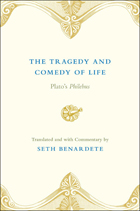 The Tragedy and Comedy of Life: Plato's Philebus
Plato
University of Chicago Press, 1993 In The Tragedy and Comedy of Life, Seth Benardete focuses on the idea of the good in what is widely regarded as one of Plato's most challenging and complex dialogues, the Philebus. Traditionally the Philebus is interpreted as affirming the doctrine that the good resides in thought and mind rather than in pleasure or the body. Benardete challenges this view, arguing that Socrates vindicates the life of the mind over the life of pleasure not by separating the two and advocating a strict asceticism, but by mixing pleasure and pain with mind in such a way that the philosophic life emerges as the only possible human life. Benardete combines a probing and challenging commentary that subtly mirrors and illuminates the complexities of this dialogue with the finest English translation of the Philebus yet available. The result is a work that will be of great value to classicists, philosophers, and political theorists alike.
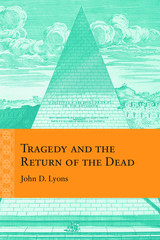 Tragedy and the Return of the Dead
John D. Lyons
Northwestern University Press, 2018 Early modernity rediscovered tragedy in the dramas and the theoretical writings of the ancient Greeks and Romans. Attempting to make new tragic fictions, writers like Shakespeare, Webster, Hardy, Corneille, and Racine created a dramatic form that would probably have been unrecognizable to the ancient Athenians. Tragedy and the Return of the Dead recovers a model of the tragic that fits ancient tragedies, early modern tragedies, as well as contemporary narratives and films no longer called “tragic” but which perpetuate the same elements. Authoritative, wide-ranging, and thought provoking, Tragedy and the Return of the Dead uncovers a set of interlocking plots of family violence that stretch from Greek antiquity up to the popular culture of today. Casting aside the elite, idealist view that tragedy manifests the conflict between two equal goods or the human struggle against the divine, John D. Lyons looks closely at tragedy’s staging of gory and painful deaths, ignominious burials, and the haunting return of ghosts. Through this adjusted lens Le Cid, Hamlet, Frankenstein, The Spanish Tragedy, Romeo and Juliet, Phèdre, Macbeth, and other early modern works appear in a striking new light. These works are at the center of a panorama that stretches from Aeschylus’s Agamemnon to Hitchcock’s Psycho and are placed against the background of the Gothic novel, Freud’s “uncanny,” and Burke’s “sublime.” Lyons demonstrates how tragedy under other names, such as “Gothic fiction” and “thrillers,” is far from dead and continues as a vital part of popular culture.
Tragedy and Triumph on the Great Lakes
Richard Gebhart
Michigan State University Press, 2024 Richard Gebhart traces little-known voyages of Great Lakes ships that sailed the Atlantic beginning in the 1850s. They bore cargoes to and from the lakes and as far as Constantinople. Gebhart recovers the voices of long-ago ship captains, along with their cargo manifests and itineraries. Drawing on deep research in old newspapers and maritime archives, he traces the construction of new ships and shipyards, and the comings and goings and travails of the lakes’ workhorses. Included is a mournful visit to a boneyard where many ships’ lives ended. Among many other lost tales, Gebhart brings to light the rise of oil tankers, marking the great twentieth-century energy transition in shipping. A must-read for Great Lakes shipping fans.
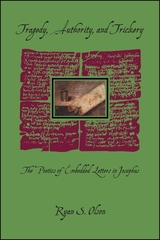 Tragedy, Authority, and Trickery: The Poetics of Embedded Letters in Josephus
Ryan S. Olson
Harvard University Press, 2010 To prove his sons’ treachery, Herod embellished a letter. To certify his history of Vespasian’s Judaean campaign, Josephus marshaled epistolary testimony. To alleviate a domestic problem, the Israelite king David sent a missive with a man it marks for death. Arguing for the importance of the first-century historian Josephus to the study of classical and Hellenistic literature, Tragedy, Authority, and Trickery investigates letters in Josephus’s texts.
Ryan S. Olson breaks new ground by analyzing classical, Hellenistic, and Jewish texts’ use of letters, comparing those texts to Josephus’s narratives, a virtual archive containing hundreds of letters. An external voice similar to speeches, embedded letters raise questions of authority, drive and color dramatic scenes, and function at textual and meta-textual levels to deceive their readers. Josephus, contextualized in a complex intellectual and cultural milieu, sustains and develops epistolarity in important ways that will be of interest to classicists, historians, theologians, and comparatists.
 Tragedy: Contradiction and Repression
Richard Kuhns
University of Chicago Press, 1991 Drawing on philosophical and psychoanalytic methods of interpretation, Richard Kuhns explores modern transformations of an ancient poetic genre, tragedy. Recognition of the philosophical problems addressed in tragedy, and of their presence up through eighteenth- and nineteenth-century philosophical texts, novels, and poetry, establishes a continuity between classical and modern enactments. Psychoanalytic theory in both its original formulations and post-Freud developments provides a means to enlarge upon and inform philosophical analyses that have dominated modern discussions.
From Aeschylus' classic drama The Persians to the hidden tragic themes in The Merchant of Venice, from the aesthetic writings of Kant to Kleist's narrative Michael Kohlhaas, Kuhns traces the writing and rewriting of the themes of ancient tragedy through modern texts. A culture's concept of fate, Kuhns argues, evolves along with its concepts and forms of tragedy. Examining the deep philosophical concerns of tragedy, he shows how the genre has changed from loss and mourning to contradiction and repression. He sees the fact that tragedy went underground during the optimism of the Enlightenment as a repression that continues into the American consciousness. Turning to Melville's The Confidence Man as an example of Old World despair giving way to New World nihilism, Kuhns indicates how psychoanalytic understanding of tragedy provides a method of interpretation that illuminates the continuous tradition from the ancient to the modern world. The study concludes with reflections on the poetry of Walt Whitman and Emily Dickinson. Each poet's celebration of the body, and the contribution of the senses to reason, perception, and poetic intuition, is seen as an embodiment of the modern tragic sensibility.
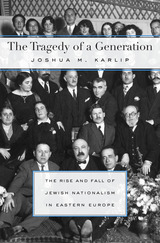 The Tragedy of a Generation: The Rise and Fall of Jewish Nationalism in Eastern Europe
Joshua M. Karlip
Harvard University Press, 2013 The Tragedy of a Generation is the story of the rise and fall of an ideal: an autonomous Jewish nation in Europe. It traces the origins of two influential but overlooked strains of Jewish thought—Yiddishism and Diaspora Nationalism—and documents the waning hopes and painful reassessments of their leading representatives against the rising tide of Nazism and, later, the Holocaust.
Joshua M. Karlip presents three figures—Elias Tcherikower, Yisroel Efroikin, and Zelig Kalmanovitch—seen through the lens of Imperial Russia on the brink of revolution. Leaders in the struggle for recognition of the Jewish people as a national entity, these men would prove instrumental in formulating the politics of Diaspora Nationalism, a middle path that rejected both the Zionist emphasis on Palestine and the Marxist faith in class struggle. Closely allied with this ideology was Yiddishism, a movement whose adherents envisioned the Yiddish language and culture, not religious tradition, as the unifying force of Jewish identity.
We follow Tcherikower, Efroikin, and Kalmanovitch as they navigate the tumultuous early decades of the twentieth century in pursuit of a Jewish national renaissance in Eastern Europe. Correcting the misconception of Yiddishism as a radically secular movement, Karlip uncovers surprising confluences between Judaism and the avowedly nonreligious forms of Jewish nationalism. An essential contribution to Jewish historiography, The Tragedy of a Generation is a probing and poignant chronicle of lives shaped by ideological conviction and tested to the limits by historical crisis.
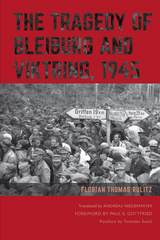 The Tragedy of Bleiburg and Viktring, 1945
Florian Thomas Rulitz
Northern Illinois University Press, 2015 The atrocities and mass murders committed by Josip Broz Tito’s Partisan units of the Yugoslav Army immediately after the Second World War had no place in the conscience of Socialist Yugoslavia. More than once, the annual Croatian commemoration of the Bleiburg victims was subject to attacks carried out by the socialist Yugoslav state. Abroad in the West, on Austrian soil, the Yugoslav secret service (UDBA) did not shy away from murdering the protagonist of the Croatian memory culture, Nicola Martinovic, as late as 1975. The official history was aligned with a firm interpretational paradigm that called for a glorification of the anti-fascist “people’s liberation resistance.” With the breakup of Yugoslavia and its socialist regime in 1991, the identity-establishing accounts of contemporary witnesses, which had mainly been cherished in exile circles abroad, increasingly reached public awareness in Croatia and Slovenia.
In the 1990s Croatia witnessed the emergence of a memory that had been suppressed by the socialist-Yugoslav regime—namely the Bleiburg tragedy. The situation in Slovenia was similar in terms of identity and remembrance culture. Among the Slovenes, the communist crimes committed during the turmoil are known as the drama of Viktring or the Viktring tragedy, named after the largest refugee camp of the Slovenes. Reports on the communist postwar crimes and on the countless discoveries of mass gravesites have also begun circulating in the media of the German-speaking world in the last few years.
Florian Rulitz’s meticulously researched book, now available for the first time in English, provides a corrective to the historical memory that had been previously accepted as truth. Rulitz focuses on two essential questions. First, did the so-called “final encirclement battles” indeed occur in Carinthia in the Ferlach/Hollenburg/Viktring and Dravograd/Poljana/Bleiburg areas, resulting in military victories for the Yugoslav Army? Second, were the battles after the capitulation fought by the refugees with the aim of reaching the British-controlled areas in Carinthia? To answer these questions, Rulitz presents a detailed reconstruction of those days in May 1945. He furthermore considers the question of the murders on Austrian territory, which were hushed up in Partisan literature and presented as casualties of the final military operations. This groundbreaking study will interest scholars and students of modern European history.
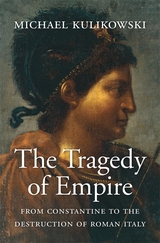 The Tragedy of Empire: From Constantine to the Destruction of Roman Italy
Michael Kulikowski
Harvard University Press, 2019 A sweeping political history of the turbulent two centuries that led to the demise of the Roman Empire.
The Tragedy of Empire begins in the late fourth century with the reign of Julian, the last non-Christian Roman emperor, and takes readers to the final years of the Western Roman Empire at the end of the sixth century. One hundred years before Julian’s rule, Emperor Diocletian had resolved that an empire stretching from the Atlantic to the Euphrates, and from the Rhine and Tyne to the Sahara, could not effectively be governed by one man. He had devised a system of governance, called the tetrarchy by modern scholars, to respond to the vastness of the empire, its new rivals, and the changing face of its citizenry. Powerful enemies like the barbarian coalitions of the Franks and the Alamanni threatened the imperial frontiers. The new Sasanian dynasty had come into power in Persia. This was the political climate of the Roman world that Julian inherited.
Kulikowski traces two hundred years of Roman history during which the Western Empire ceased to exist while the Eastern Empire remained politically strong and culturally vibrant. The changing structure of imperial rule, the rise of new elites, foreign invasions, the erosion of Roman and Greek religions, and the establishment of Christianity as the state religion mark these last two centuries of the Empire.
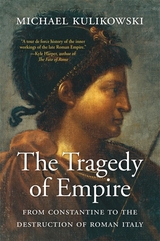 The Tragedy of Empire: From Constantine to the Destruction of Roman Italy
Michael Kulikowski
Harvard University Press “As Kulikowski presents it, the end of the Roman Empire in the West was mean and dirty—and thoroughly Roman…In a brilliant tour d’horizon of the West from Ireland to the Black Sea, he measures the effect of the fall of Rome on the world beyond Rome.”
—Peter Brown, New York Review of Books
“A tour de force history of the inner workings of the late Roman Empire.”
—Kyle Harper, author of The Fate of Rome
“Kulikowski writes boldly and fluently about imperial politics, incorporating the latest scholarship yet avoiding getting bogged down in academic controversies. Highly recommended.”
—Hugh Elton, author of The Roman Empire in Late Antiquity
“Weaving together…complex family affairs, rebels, battles, coups, and intrigue into engaging prose, Kulikowski’s book is an enjoyable read for anyone who is interested in late Roman history.”
—Minerva Magazine
One hundred years before the reign of Julian, the last non-Christian emperor of Rome, Diocletian had come to the conclusion that an empire stretching from the Rhine to the Euphrates could not effectively be governed by one man. He had devised a new system of governance to respond to the vastness of the Roman Empire, its new rivals, and the changing face of its citizenry.
Michael Kulikowski traces two hundred years of Roman history—from the late fourth century to the end of the sixth—during which the Western Empire ceased to exist while the Eastern Empire remained politically strong and culturally vibrant. He captures the changing structure of imperial rule, the rise of new elites, foreign invasions, the erosion of Roman and Greek religions, and the establishment of Christianity as the state religion.
The Tragedy of King Christophe
Aimé Césaire
Northwestern University Press, 2015 The Tragedy of King Christophe (1963, revised 1970) is recognized as the Martiniquan writer and activist Aime Cesaire’s greatest play. Set in the period of upheaval in Haiti after the assassination of Jean-Jacques Dessalines in 1806, it follows the historical figure of Henri Christophe, a slave who rose to become a general in Toussaint Louverture’s army. Christophe declared himself king in 1811 and ruled the northern part of Haiti until 1820. Cesaire employs Shakespearean plotting and revels in the inexhaustible possibilities of language to convey the tragedy of Christophe’s transformation from a charismatic leader sensitive to the oppression of his people to an oppressor himself. Paul Breslin and Rachel Ney’s nimble, accurate translation includes an introduction and explanatory notes to guide students, scholars, and general readers alike.
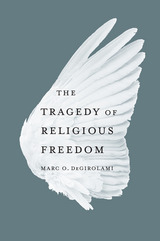 The Tragedy of Religious Freedom
Marc O. DeGirolami
Harvard University Press, 2013 When it comes to questions of religion, legal scholars face a predicament. They often expect to resolve dilemmas according to general principles of equality, neutrality, or the separation of church and state. But such abstractions fail to do justice to the untidy welter of values at stake. Offering new views of how to understand and protect religious freedom in a democracy, The Tragedy of Religious Freedom challenges the idea that matters of law and religion should be referred to far-flung theories about the First Amendment. Examining a broad array of contemporary and more established Supreme Court rulings, Marc DeGirolami explains why conflicts implicating religious liberty are so emotionally fraught and deeply contested.
Twenty-first-century realities of pluralism have outrun how scholars think about religious freedom, DeGirolami asserts. Scholars have not been candid enough about the tragic nature of the conflicts over religious liberty—the clash of opposing interests and aspirations they entail, and the limits of human reason to resolve intractable differences. The Tragedy of Religious Freedom seeks to turn our attention from abstracted, absolute values to concrete, historical realities. Social history, characterized by the struggles of lawyers engaged in the details of irreducible conflicts, represents the most promising avenue to negotiate legal conflicts over religion. In this volume, DeGirolami offers an approach to understanding religious liberty that is neither rigidly systematic nor ad hoc, but a middle path grounded in a pluralistic and historically informed perspective.
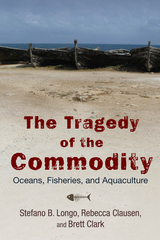 The Tragedy of the Commodity: Oceans, Fisheries, and Aquaculture
Longo, Stefano B
Rutgers University Press, 2015 Winner of the 2017 Paul Sweezy Marxist Sociology Book Award from the American Sociological Association
Although humans have long depended on oceans and aquatic ecosystems for sustenance and trade, only recently has human influence on these resources dramatically increased, transforming and undermining oceanic environments throughout the world. Marine ecosystems are in a crisis that is global in scope, rapid in pace, and colossal in scale. In The Tragedy of the Commodity, sociologists Stefano B. Longo, Rebecca Clausen, and Brett Clark explore the role human influence plays in this crisis, highlighting the social and economic forces that are at the heart of this looming ecological problem. In a critique of the classic theory “the tragedy of the commons” by ecologist Garrett Hardin, the authors move beyond simplistic explanations—such as unrestrained self-interest or population growth—to argue that it is the commodification of aquatic resources that leads to the depletion of fisheries and the development of environmentally suspect means of aquaculture. To illustrate this argument, the book features two fascinating case studies—the thousand-year history of the bluefin tuna fishery in the Mediterranean and the massive Pacific salmon fishery. Longo, Clausen, and Clark describe how new fishing technologies, transformations in ships and storage capacities, and the expansion of seafood markets combined to alter radically and permanently these crucial ecosystems. In doing so, the authors underscore how the particular organization of social production contributes to ecological degradation and an increase in the pressures placed upon the ocean. The authors highlight the historical, political, economic, and cultural forces that shape how we interact with the larger biophysical world. A path-breaking analysis of overfishing, The Tragedy of the Commodity yields insight into issues such as deforestation, biodiversity loss, pollution, and climate change.
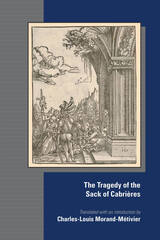 The Tragedy of the Sack of Cabrières
Translated by Charles-Louis Morand-Métivier
Arizona Center for Medieval and Renaissance Studies, 2022 A critical edition and the first English translation of the French play.
April 1542 saw a massacre of epic proportions in the Luberon, in southeastern France, of its Waldensian population, who had been peacefully living there after they settled in a few centuries before. This massacre foreshadowed the wars of religion, which tore apart the kingdom for almost forty years. The Tragédie du Sac de Cabrières is the only play devoted to these events. This is a critical edition and English translation of the French play. Three critical editions of the play have been published in 1927, 1928, and 1998, and this new edition complements the previous works. This is the first English translation of the play and makes it available to an international audience of scholars and students of the early modern period.
This edition “translates” the moment of the play's creation, the representation of the event, and its importance in the narrative of religious persecutions in sixteenth-century France. It explains how history is dramatized through the creation of the scenic story and scenic play of Cabrières. and how the specific retelling of the events of Cabrières makes this a tool of historical narration, thus allowing the audience to participate in the unfolding of history before their eyes. Therefore, they become part of history, because it is played before their eyes so that they can not only witness it but also propagate the glory of the martyrs for future generations. This is not only a translation and a work of literary scholarship, it is an analysis of the literary, political, and religious production of this period, and a multidisciplinary analysis of Waldensianism in southeastern France.
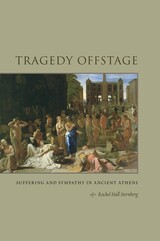 Tragedy Offstage: Suffering and Sympathy in Ancient Athens
By Rachel Hall Sternberg
University of Texas Press, 2006 Humane ideals were central to the image Athenians had of themselves and their city during the classical period. Tragic plays, which formed a part of civic education, often promoted pity and compassion. But it is less clear to what extent Athenians embraced such ideals in daily life. How were they expected to respond, emotionally and pragmatically, to the suffering of other people? Under what circumstances? At what risk to themselves? In this book, Rachel Hall Sternberg draws on evidence from Greek oratory and historiography of the fifth and fourth centuries BCE to study the moral universe of the ancient Athenians: how citizens may have treated one another in times of adversity, when and how they were expected to help. She develops case studies in five spheres of everyday life: home nursing, the ransom of captives, intervention in street crimes, the long-distance transport of sick and wounded soldiers, and slave torture. Her close reading of selected narratives suggests that Athenians embraced high standards for helping behavior—at least toward relatives, friends, and some fellow citizens. Meanwhile, a subtle discourse of moral obligation strengthened the bonds that held Athenian society together, encouraging individuals to bring their personal behavior into line with the ideals of the city-state.
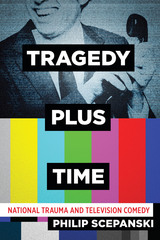 Tragedy Plus Time: National Trauma and Television Comedy
By Philip Scepanski
University of Texas Press, 2021 Following the most solemn moments in recent American history, comedians have tested the limits of how soon is “too soon” to joke about tragedy. Comics confront the horrifying events and shocking moments that capture national attention and probe the acceptable, or “sayable,” boundaries of expression that shape our cultural memory. In Tragedy Plus Time, Philip Scepanski examines the role of humor, particularly televised comedy, in constructing and policing group identity and memory in the wake of large-scale events. Tragedy Plus Time is the first comprehensive work to investigate tragedy-driven comedy in the aftermaths of such traumas as the JFK assassination and 9/11, as well as during the administration of Donald Trump. Focusing on the mass publicization of television comedy, Scepanski considers issues of censorship and memory construction in the ways comedians negotiate emotions, politics, war, race, and Islamophobia. Amid the media frenzy and conflicting expressions of grief following a public tragedy, comedians provoke or risk controversy to grapple publicly with national traumas that all Americans are trying to understand for themselves.
 Tragic Dilemmas in Christian Ethics
Kate Jackson-Meyer
Georgetown University Press, 2022 The first book to argue for the concept of tragic dilemmas in Christian ethics Moral dilemmas arise when individuals are unable to fulfill all of their ethical obligations. Tragic dilemmas are moral dilemmas that involve great tragedy. The existence of moral and tragic dilemmas is debated in philosophy and often dismissed in theology based on the notion that there are effective strategies that completely solve hard ethical situations. Yet cases from real-life events in war and bioethics offer compelling evidence for the existence of tragic dilemmas. In Tragic Dilemmas in Christian Ethics, Jackson-Meyer expertly explores the thought of Augustine and Aquinas to show the limits of their treatment of hard cases, as well as where their thought can be built on and expanded in relation to tragic dilemmas. She recognizes and develops a new theological understanding of tragic dilemmas rooted in moral philosophy, contemporary case studies, and psychological literature on moral injury. Jackson-Meyer argues that in tragic dilemmas moral agents choose between conflicting nonnegotiable moral obligations rooted in Christian commitments to protect human life and the vulnerable. Personal culpability is mitigated due to constrained situations and society is also culpable when tragic dilemmas are a result of structural sin. In response, Jackson-Meyer implores Christian communities to offer individual and communal healing after tragic dilemmas and to acknowledge their own participation in injustice. Tragic Dilemmas in Christian Ethics offers practical strategies that Christian communities can use to provide healing to those who have acted in tragic dilemmas and to transform the unjust structures that often cause these tragedies.
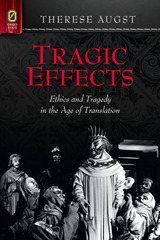 Tragic Effects: Ethics and Tragedy in the Age of Translation
Therese Augst
Ohio State University Press, 2012 Tragic Effects: Ethics and Tragedy in the Age of Translation confronts the peculiar fascination with Greek tragedy as it shapes the German intellectual tradition, with particular focus on the often controversial practice of translating the Greeks. Whereas the tradition of emulating classical ideals in German intellectual life has generally emerged from the impulse to identify with models, the challenge of translating the Greeks underscores the linguistic and historical discontinuities inherent in the recourse to ancient material and inscribes that experience of disruption as fundamental to modernity. Friedrich Hölderlin’s translations are a case in point. Regarded in his own time as the work of a madman, his renditions of Sophoclean tragedy intensify dramatic effect with the unsettling experience of familiar language slipping its moorings. His attention to marking the distances between ancient source text and modern translation has granted his Oedipus and Antigone a distinct longevity as objects of discussion, adaptation, and even retranslation. Cited by Walter Benjamin, Martin Heidegger, Bertolt Brecht, and others, Hölderlin’s Sophocles project follows a path both marked by various contexts and tinged by persistent quandaries of untranslatability. Tragedy has long functioned as a cornerstone for questions about ethical life. By placing emphasis on processes of translation and adaptation, however, Tragic Effects approaches the question of ethics from a perspective informed by recent discourse in translation studies. Reconstructing an ancient text in this context requires negotiating the difficult tension between comprehending the distant past and preserving its radical singularity.
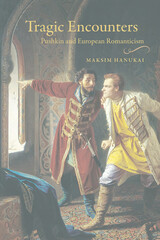 Tragic Encounters: Pushkin and European Romanticism
Maksim Hanukai
University of Wisconsin Press, 2023 Literary scholars largely agree that the Romantic period altered the definition of tragedy, but they have confined their analyses to Western European authors. Maksim Hanukai introduces a new, illuminating figure to this narrative, arguing that Russia’s national poet, Alexander Pushkin, can be understood as a tragic Romantic poet, although in a different mold than his Western counterparts.
Many of Pushkin’s works move seamlessly between the closed world of traditional tragedy and the open world of Romantic tragic drama, and yet they follow neither the cathartic program prescribed by Aristotle nor the redemptive mythologies of the Romantics. Instead, the idiosyncratic and artistically mercurial Pushkin seized upon the newly unstable tragic mode to develop multiple, overlapping tragic visions. Providing new, innovative readings of such masterpieces as The Gypsies, Boris Godunov, The Little Tragedies, and The Bronze Horseman, Hanukai sheds light on an unexplored aspect of Pushkin’s work, while also challenging reigning theories about the fate of tragedy in the Romantic period.
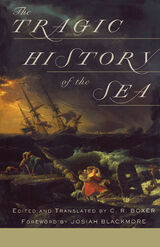 Tragic History Of The Sea
C.R. Boxer
University of Minnesota Press, 2001 Compelling stories of shipwreck, adventure, and death on the high seas, now back in print. The sixteenth and seventeenth centuries were a time of great colonial expansion, marked by a mercantile frenzy of ships carrying merchants, aristocrats, missionaries, sailors, Inquisitors, botanists, and statesmen pursuing the spoils of empire. Among the narratives that chronicled these voyages, those of the Portuguese are unequaled. C. R. Boxer’s fascinating translations of famous Portuguese shipwreck stories detail the disasters and terrors plaguing the perilous sea trading route between Portugal and India. In the tradition of Homer, Virgil, Shakespeare, Defoe, and Poe, these dramatic stories of shipwreck—and those who lived to tell about it—represent existence and survival pushed to the limits. They describe disastrous turns of fate and miraculous rescues, heroism and cowardice, and offer the exhilaration and sheer emotive appeal of a tale of adventure well told. Often circulated in pamphlet form, these stories recounting the dangers and terrors of storm-tossed ocean voyages and the fate of castaways in distant lands were a popular genre, rife with compelling and often gory details. This first ever paperback edition includes a new translation of the tragic tale of Captain Manuel de Sousa Sepúlveda, shipwrecked with his family on the sands of Africa in 1552, the previous English versions of which have long been unavailable. Vividly descriptive and engrossing, these tales of selfishness, cruelty, despair, pirates, mayhem, and harrowing storms will captivate readers.
The Tragic Menagerie
Lydia Zinovieva-Annibal
Northwestern University Press, 1999 Though published a decade before the Bolshevik Revolution, The Tragic Menagerie possesses a sensibility that is modern in its descriptions of a childhood of passionate affections and unsettling revelations. This fictionalized autobiography follows the tomboyish Vera, who counts among her friends bears, wolves, and a wild crane, as well as local peasant girls. Sent to a German boarding school and exiled from her kingdom, Vera turns into a demonic, disobedient student, rejecting a life she finds constraining and artificial. Only when she returns to her natural world can her deeper compassionate and imaginative self emerge.
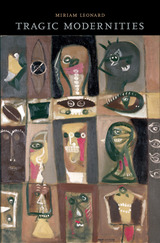 Tragic Modernities
Miriam Leonard
Harvard University Press, 2015 The ancient Greek tragedies of Aeschylus, Sophocles, and Euripides have long been considered foundational works of Western literature, revered for their aesthetic perfection and timeless truths. Under the microscope of recent scholarship, however, the presumed universality of Greek tragedy has started to fade, as the particularities of Athenian culture have come into sharper focus. The world revealed is so far removed from modern sensibilities that, in the eyes of many, tragedy’s viability as a modern art form has been fatally undermined. Tragic Modernities steers a new course between the uncritical appreciation and the resolute historicism of the past two centuries, to explore the continuing relevance of tragedy in contemporary life.
Through the writings of such influential figures as Hegel, Marx, Nietzsche, and Freud, tragedy became a crucial reference point for philosophical and intellectual arguments. These thinkers turned to Greek tragedy in particular to support their claims about history, revolution, gender, and sexuality. From Freud’s Oedipus complex to Nietzsche’s Dionysiac, from Hegel’s dialectics to Marx’s alienation, tragedy provided the key terms and mental architecture of the nineteenth and twentieth centuries. By highlighting the philosophical significance of tragedy, Miriam Leonard makes a compelling case for the ways tragedy has shaped the experience of modernity and elucidates why modern conceptualizations of tragedy necessarily color our understanding of antiquity. Exceptional in its scope and argument, Tragic Modernities contests the idea of the death of tragedy and argues powerfully for the continued vitality of Greek tragic theater in the central debates of contemporary culture.
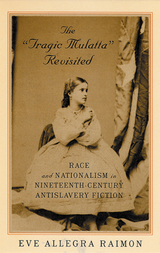 The 'Tragic Mulatta' Revisited: Race and Nationalism in Nineteenth-Century Antislavery Fiction
Eve Allegra Raimon
Rutgers University Press, 2004 Since its inception, the United States has been intensely preoccupied with interracialism. The concept is embedded everywhere in our social and political fabric, including our sense of national identity. And yet, in both its quantitative and symbolic forms, interracialism remains an extremely elusive phenomenon, causing policy makers and census boards to wrangle over how to delineate it and, on an emblematic level, stirring intense emotions from fear to fascination.
In The “Tragic Mulatta” Revisited, Eve Allegra Raimon focuses on the mixed-race female slave in literature, arguing that this figure became a symbolic vehicle for explorations of race and nation—both of which were in crisis in the mid-nineteenth century. At this time, judicial, statutory, social, and scientific debates about the meaning of racial difference (and intermixture) coincided with disputes over frontier expansion, which were never merely about land acquisition but also literally about the “complexion” of that frontier. Embodying both northern and southern ideologies, the “amalgamated” mulatta, the author argues, can be viewed as quintessentially American, a precursor to contemporary motifs of “hybrid” and “mestizo” identities.
Where others have focused on the gendered and racially abject position of the “tragic mulatta,” Raimonreconsiders texts by such central antislavery writers as Lydia Maria Child, William Wells Brown, Harriet Beecher Stowe, and Harriet Wilson to suggest that the figure is more usefully examined as a way of understanding the volatile and shifting interface of race and national identity in the antebellum period.
 Tragic Muse: Rachel of the Comédie-Française
Rachel M. Brownstein
Duke University Press, 1995 The great nineteenth-century tragedienne known simply as Rachel was the first dramatic actress to achieve international fame. Composing her own persona with the same brilliance and passion she demonstrated on stage, she virtually invented the role of "star." Rumors of her extravagant life offstage delighted the audiences who flocked to theaters in Boston and Paris, London and Moscow, to see her perform in the tragedies of Racine and Corneille. In Tragic Muse, Rachel M. Brownstein reveals the life of la grande Rachel and explores—at the boundary of biography, fiction, and cultural history—the connections between this self-dramatizing woman and her image.
Born to itinerant Jewish peddlers in 1821, Rachel arrived on the Paris stage at the age of fifteen. She became both a symbol of her culture’s highest art and a clue to its values and obsessions. Fascinated with all things Napoleonic, she was the mother of Napoleon’s grandson and the lover of many men connected to the emperor. Her story—the rise from humble beginnings to queen of the French state theater—echoes and parodies Napoleon’s own. She decisively controlled her career, her time, and finances despite the actions and claims of managers, suitors, and lovers. A woman of exceptional charisma, Rachel embodied contradiction and paradox. She captured the attention of her time and was memorialized in the works of Matthew Arnold, Charlotte Brontë, George Eliot, and Henry James.
Richly illustrated with portraits, photographs, and caricatures, Tragic Muse combines brilliant literary analysis and exceptional historical research. With great skill and acuity, Rachel M. Brownstein presents Rachel—her brief intense life and the image that was both self-fashioned and, outliving her, fashioned by others. First published by Knopf (1993), this book will attract a broad audience interested in matters as wide ranging as the construction of character, the cult of celebrity, women’s lives, and Jewish history. It will also be of enduring interest to readers concerned with nineteenth-century French culture, history, literature, theater, and Romanticism. Tragic Muse won the 1993 George Freedley Award presented by the Theater Library Association.
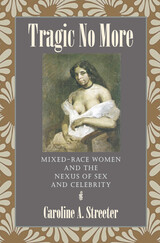 Tragic No More: Mixed-Race Women and the Nexus of Sex and Celebrity
Caroline A. Streeter
University of Massachusetts Press, 2012 This book examines popular representations of biracial women of black and white descent in the United States, focusing on novels, television, music, and film. Although the emphasis is on the 1990s, the historical arc of the study begins in the 1930s. Caroline A. Streeter explores the encounter between what she sees as two dominant narratives that frame the perception of mixed race in America. The first is based on the long-standing historical experience of white supremacy and black subjugation. The second is more recent and involves the post–Civil Rights expansion of interracial marriage and mixed-race identities. Streeter analyzes the collision of these two narratives, the cultural anxieties they have triggered, and the role of black/white women in the simultaneous creation and undoing of racial categories—a charged, ambiguous cycle in American culture.
Streeter's subjects include concert pianist Philippa Schuyler, Dorothy West's novel The Wedding (in print and on screen), Danzy Senna's novels Caucasia and Symptomatic, and celebrity performing artists Mariah Carey, Alicia Keys, and Halle Berry. She opens with a chapter that examines the layered media response to Essie Mae Washington-Williams, Senator Strom Thurmond's biracial daughter. Throughout the book, Streeter engages the work of feminist critics and others who have written on interracial sexuality and marriage, biracial identity, the multiracial movement, and mixed race in cultural studies.
Tragic Rites: Narrative and Ritual in Sophoclean Drama
Adriana E. Brook
University of Wisconsin Press, 2018 Presenting an innovative new reading of Sophocles' plays, Tragic Rites analyzes the poetic and narrative function of ritual in the seven extant plays of Sophocles. Adriana Brook closely examines four of them—Ajax, Electra, Philoctetes, and Oedipus at Colonus—in the context of her wide-ranging consideration of the entire Sophoclean corpus. Exploring the playwright's dramatic technique, she shows how he used elements of ritual to guide the perceptions and expectations of his fifth-century audience about plot and character.
Employing both modern ritual theory and Aristotle's Poetics, Brook exposes the deep structural analogies between ritual and narrative, the parallels between mistakes in ritual and deviations from the expected in the plot, and the relationship between ritual content and dramatic closure.
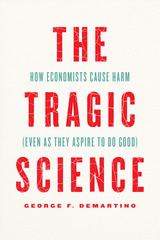 The Tragic Science: How Economists Cause Harm (Even as They Aspire to Do Good)
George F. DeMartino
University of Chicago Press, 2022 A forceful critique of the social science that has ruled—and damaged—the modern world.
The practice of economics, as economists will tell you, is a powerful force for good. Economists are the guardians of the world’s economies and financial systems. The applications of economic theory can alleviate poverty, reduce disease, and promote sustainability.
While this narrative has been successfully propagated by economists, it belies a more challenging truth: economic interventions, including those economists deem successful, also cause harm. Sometimes the harm is manageable and short-lived. But just as often the harm is deep, enduring, and even irreparable. And too often the harm falls on those least able to survive it.
In The Tragic Science, George F. DeMartino says what economists have too long repressed: that economists do great harm even as they aspire to do good. Economist-induced harm, DeMartino shows, results in part from economists’ “irreparable ignorance”—from the fact that they know far less than they tend to believe they know—and from disciplinary training that treats the human tolls of economic policies and interventions as simply the costs of promoting social betterment. DeMartino details the complicated nature of economic harm, explores economists’ frequent failure to recognize it, and makes a sobering case for professional humility and for genuine respect for those who stand to be harmed by economists’ practice.
At a moment in history when the economics profession holds enormous power, DeMartino’s work demonstrates the downside of its influence and the responsibility facing those who practice the tragic science.
The Tragic Sense of Life: Ernst Haeckel and the Struggle over Evolutionary Thought
Robert J. Richards
University of Chicago Press, 2008 Prior to the First World War, more people learned of evolutionary theory from the voluminous writings of Charles Darwin’s foremost champion in Germany, Ernst Haeckel (1834–1919), than from any other source, including the writings of Darwin himself. But, with detractors ranging from paleontologist Stephen Jay Gould to modern-day creationists and advocates of intelligent design, Haeckel is better known as a divisive figure than as a pioneering biologist. Robert J. Richards’s intellectual biography rehabilitates Haeckel, providing the most accurate measure of his science and art yet written, as well as a moving account of Haeckel’s eventful life.
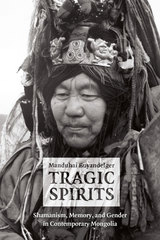 Tragic Spirits: Shamanism, Memory, and Gender in Contemporary Mongolia
Manduhai Buyandelger
University of Chicago Press, 2013 The collapse of socialism at the end of the twentieth century brought devastating changes to Mongolia. Economic shock therapy—an immediate liberalization of trade and privatization of publicly owned assets—quickly led to impoverishment, especially in rural parts of the country, where Tragic Spirits takes place. Following the travels of the nomadic Buryats, Manduhai Buyandelger tells a story not only of economic devastation but also a remarkable Buryat response to it—the revival of shamanic practices after decades of socialist suppression. Attributing their current misfortunes to returning ancestral spirits who are vengeful over being abandoned under socialism, the Buryats are now at once trying to appease their ancestors and recover the history of their people through shamanic practice. Thoroughly documenting this process, Buyandelger situates it as part of a global phenomenon, comparing the rise of shamanism in liberalized Mongolia to its similar rise in Africa and Indonesia. In doing so, she offers a sophisticated analysis of the way economics, politics, gender, and other factors influence the spirit world and the crucial workings of cultural memory.
Tragic Thoughts at the End of Philosophy: Language, Literature, and Ethical Theory
Gerald L. Bruns
Northwestern University Press, 1999 Recently, a number of Anglo-American philosophers of very different sorts--pragmatists, metaphysicians, philosophers of language, philosophers of law, moral philosophers—have taken a reflective rather than merely recreational interest in literature. Does this literary turn mean that philosophy is coming to an end or merely down to earth? In this collection of essays, one of the most insightful of contemporary literary theorists investigates the intersection of literature and philosophy, analyzing the emerging preferences for practice over theory, particulars over universals, events over structures, inhabitants over spectators, an ethics of responsibility over a morality of rules, and a desire for intimacy with the world instead of simply a disengaged knowledge of it.
Tragic Ways of Killing a Woman
Nicole Loraux
Harvard University Press, 1987 In ordinary life an Athenian woman was allowed no accomplishments beyond leading a quiet and exemplary existence as wife and mother. Her glory was to have no glory. In Greek tragedy, however, women die violently and, through violence, master their own fate. It is a genre that delights in blurring the formal frontier between masculine and feminine. Through the subtlety of her reading of these powerful and ambiguous texts, Nicole Loraux elicits an array of insights into Greek attitudes toward death, sexuality, and gender.
Tragic Wisdom and Beyond
Gabriel Marcel
Northwestern University Press, 1980 This volume presents two works by Gabriel Marcel. The first, Tragic Wisdom and Beyond, a collection of his later writings, shows the impact of his encounter with the later writings of Heidegger. The second, Conversations between Paul Ricoeur and Gabriel Marcel, is a series of six conversations between Marcel and his most famous student.
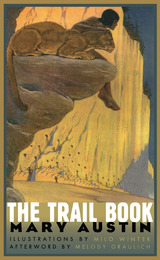 The Trail Book
Mary Austin
University of Nevada Press, 2004 The Trail Book is a classic of American nature writing. First published in 1918, it is a collection of children’s tales, framed by its setting in New York’s Museum of Natural History. For two children, Oliver and his sister Dorcas, the museum’s famed dioramas (which were new at that time) come to life and admit them into a series of exciting adventures that include talking animals and magical travels. Along the way, the children discover the ways of the ancient Native Americans and the landscapes of the pre-Columbian continent, as well as the impact on both Indians and wildlife from contact with European explorers and Euro-Americans. Told by a variety of narrators, including some of the animals, the stories offer a perceptive and sympathetic view of the natural history of North America and of Native American–white relations. This edition of The Trail Book includes an afterword by Austin scholar Melody Graulich that addresses Austin’s motives in writing the book and its significance as an early example of interdisciplinary multicultural literature. The illustrations by Milo Winter that enlivened the original edition are included, as are Austin’s appendix giving historical background and a glossary of Indian and Spanish names.
The Trail Drivers of Texas: Interesting Sketches of Early Cowboys...
Compiled and edited by J. Marvin Hunter
University of Texas Press, 1993 These are the chronicles of the trail drivers of Texas—those rugged men and, sometimes, women who drove cattle and horses up the trails from Texas to northern markets in the late 1800s. Gleaned from members of the Old Time Trail Drivers' Association, these hundreds of real-life stories—some humorous, some chilling, some rambling, all interesting—form an invaluable cornerstone to the literature, history, and folklore of Texas and the West. First published in the 1920s and reissued by the University of Texas Press in 1985, this classic work is now available in a handsome paperback edition that contains the full text, historical illustrations, and name index of the hardcover edition.
Trail Guide for a Crooked Heart: Stories and Reflections for Life's Journey
Jim May
Parkhurst Brothers, Inc., 2016 "A brilliant mixture of story, philosophy, humor and wisdom, this book reminds us that---if we are open to story, dreams, imagination, and myth---we can open doors within our soul."
—Jay O’Callahan, author, storyteller, and NPR commentator A lifetime collection of stories, wise words, assembled musings and quotations about overcoming hurdles, elusive enlightenment, personal evolution, persistence in the face of discouragement, this pastiche is designed to encourage the downhearted, lift up the strivers, and add wings to the heels of spiritual seekers.
The Trail North: A Solo Journey On The Pacific Coast
Hawk Greenway
Island Press, 1981 The Trail North is the story of a young man who comes into his own during a summer on the Pacific Coast Trail. With only his horse for company, Hawk Greenway tasted the freedom and wildness of the high mountains, weathered the loneliness of solitary campfires, and witnessed important changes within and around him. This straight-talking record of a teenager's growth and adventure is a valuable example for young people everywhere, and a rich experience for readers of all ages.
A Trail of Fire for Political Cinema: The Hour of the Furnaces Fifty Years Later
Edited by Javier Campo and Humberto Perez-Blanco
Intellect Books, 2018 Marking the 50th anniversary of the premiere of La Hora de Los Hornos (The Hour of the Furnaces) (Getino and Solanas, 1968), A Trail of Fire for Political Cinema is an edited collection that closely analyses the film, looking to the context and the socio-political landscape of 1960s Argentina, as well as the film’s legacy and contemporary relevance. Attention is paid to the corpus of political documentaries made between 1968 to 1976, including those that marked the last coup d’état in Argentina, to emphasize how formal and thematic trends relate to their Argentinian social context. In order to highlight The Hour of the Furnaces’s contemporary relevance as a form of politically engaged activism, the book will also look at Fernando Solanas’s documentary output in the twenty-first century.
 Trail of Footprints: A History of Indigenous Maps from Viceregal Mexico
By Alex Hidalgo
University of Texas Press, 2019 Trail of Footprints offers an intimate glimpse into the commission, circulation, and use of indigenous maps from colonial Mexico. A collection of sixty largely unpublished maps from the late sixteenth to the eighteenth centuries and made in the southern region of Oaxaca anchors an analysis of the way ethnically diverse societies produced knowledge in colonial settings. Mapmaking, proposes Hidalgo, formed part of an epistemological shift tied to the negotiation of land and natural resources between the region’s Spanish, Indian, and mixed-race communities. The craft of making maps drew from social memory, indigenous and European conceptions of space and ritual, and Spanish legal practices designed to adjust spatial boundaries in the New World. Indigenous mapmaking brought together a distinct coalition of social actors—Indian leaders, native towns, notaries, surveyors, judges, artisans, merchants, muleteers, collectors, and painters—who participated in the critical observation of the region’s geographic features. Demand for maps reconfigured technologies associated with the making of colorants, adhesives, and paper that drew from Indian botany and experimentation, trans-Atlantic commerce, and Iberian notarial culture. The maps in this study reflect a regional perspective associated with Oaxaca’s decentralized organization, its strategic position amidst a network of important trade routes that linked central Mexico to Central America, and the ruggedness and diversity of its physical landscape.
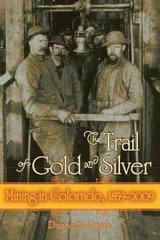 The Trail of Gold and Silver: Mining in Colorado, 1859-2009
Duane A. Smith
University Press of Colorado, 2009 In The Trail of Gold and Silver, historian Duane A. Smith details Colorado's mining saga - a story that stretches from the beginning of the gold and silver mining rush in the mid-nineteenth century into the twenty-first century. Gold and silver mining laid the foundation for Colorado's economy, and 1859 marked the beginning of a fever for these precious metals. Mining changed the state and its people forever, affecting settlement, territorial status, statehood, publicity, development, investment, economy, jobs both in and outside the industry, transportation, tourism, advances in mining and smelting technology, and urbanization. Moreover, the first generation of Colorado mining brought a fascinating collection of people and a new era to the region. Written in a lively manner by one of Colorado's preeminent historians, this book honors the 2009 sesquicentennial of Colorado's gold rush. Smith's narrative will appeal to anybody with an interest in the state's fascinating mining history over the past 150 years.
 Trail Of Martyrdom: Persecution and Resistance in Sixteenth-Century England
Sarah Covington
University of Notre Dame Press, 2004 The Trail of Martyrdom examines the stages by which religious dissidents were persecuted by Tudor monarchs across the sixteenth century, and the means by which these dissidents counteracted authorities. While Henry VIII, Edward, Mary, and Elizabeth differed in religious orientation, their desire to enforce a uniformity of belief compelled them, in various degrees, to seek out and expunge heterodoxy or perceived treason in their midst. Individuals of contrary belief were targeted, apprehended, imprisoned, interrogated, and sometimes executed. During each stage of persecution, many dissidents were able to elude capture, counter-interrogate their inquisitors, use time in prison to write letters and prepare for death, and exploit their own executions to forge a final drama of suffering and redemption before a large, public audience. Enforcement was always dependent upon cooperation from the public and local officials, which made successful persecution uncertain at best.
Sarah Covington explores the details of this system of enforcement, and the means by which it was subverted. Her explorations also address larger questions concerning obedience and disobedience, tolerance and intolerance, and the dynamics of martyrdom.
This fascinating study of the power of dissidence will be welcomed by anyone interested in early modern British history and religious controversy.
SARAH COVINGTON is assistant professor of history at Elizabethtown College.
Reviews
"Sarah Covington's The Trail of Martyrdom looks at persecution, prosecution, recantation, and martyrdom in sixteenth-century England, approaching the problem from every possible angle: how did the accused react to persecution? How did persecutors, of every rank and class, view dissenters? What were the conditions of imprisonment for the heterodox? How did the hunted, the persecuted, the imprisoned communicate? Why did some people recant and others did not--and how did the former view their own recantations? What were the reactions of the victims, the executioners, and the onlookers when the final tragic moment arrived? In exploring these questions, Covington brilliantly matches an insightful reading of texts for indications of states of mind with a deft management of documents to uncover names, circumstances, and settings--thus marrying intellectual, psychological and social historical perspectives. She has mastered an immense literature, handles printed and manuscript materials with boldness and respect, and asks important questions, and answers them with grace. Her prose is a tissue of elegance of a sort rarely encountered in this generation." --Margaret L. King, Brooklyn College and the Graduate Center, City University of New York
"With keen insight, The Trail of Martyrdom explores a fragmented era permeated by religious dissidence, dissonance, and persecution. This important study enhances our understanding of a world in which individual religious conviction collided with royal hegemony." --John King, Ohio State University
"Martyrs and persecutors alike suffered pain and found joy in their work. Sarah Covington has provided us with a beautifully written description and analysis of both sides in the tumultuous years of the Tudor Reformations." --Stuart E. Prall, Queens College and the Graduate Center, City University of New York
"This study offers a valuable overview of the interconnected stages of the persecution of religious dissidents in early modern England. Its lucid style and clear presentation make it accessible to the general reader in English history." --Christopher Highley, Ohio State University
"The Trail of Martyrdom: Persecution And Resistance In Sixteenth-Century England, provides Professor Covington's readers with a thorough and scholarly examination of all aspects of persecution, imprisonment, rebellion, dissent, and execution in sixteenth-century England. A work of meticulously scholarship, and presented with a passion for accuracy and logical interpretation, The Trail of Martyrdom is fascinating and informative scrutiny of a dark side of human behavior and royal politics under Henry VIII, Edward, Mary, and Elizabeth." --Midwest Book Review
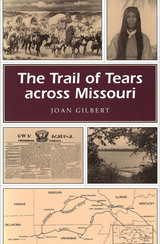 The Trail of Tears across Missouri
Joan Gilbert
University of Missouri Press, 1996 As settlers moved beyond the eastern seaboard during the early nineteenth century, the government forced thousands of American Indians from their ancestral lands. The Cherokees, the largest and most important tribe in the Southeast, fought exile with a combination of passive resistance and national publicity for their plight. Because they had successfully resisted the government's efforts to move them from their homeland, their removal was particularly brutal when it finally came. The Trail of Tears across Missouri is a moving account of the 1837-1838 removal of the Cherokees from the southeastern United States to Indian Territory (now Oklahoma). After providing an overview of the Cherokees' life in the Southeast and of the events leading up to their exile, Joan Gilbert traces the mass exodus state by state from Tennessee to Arkansas. Successive chapters highlight the experiences and the hardships endured by those forced to travel with inadequate supplies of food, clothing, and transportation. It is estimated that four thousand Cherokees, nearly a quarter of the tribe, died. In bringing the grim realities of the forced march to life, Gilbert draws from such primary sources as letters, newspaper stories, and the writings of missionaries, guides, and doctors who accompanied them. She focuses on the Cherokees' experiences as they passed through Missouri, using the journals of Dr. W. I. I. Morrow and guide B. B. Cannon. In addition to chronicling the removal of the Cherokees, Gilbert also brings the story up to date by describing how the nation lives today and how the Trail of Tears has been commemorated.
Trail Running Eastern Massachusetts
Ben Kimball
University of Massachusetts Press, 2022 Eastern Massachusetts offers incredible trail-running opportunities, ranging from popular long-distance routes like the Bay Circuit Trail to lesser-known loops that run through the mountains and forests of the Quabbin watershed and Merrimack Valley region, and trails that pass alongside the shores of Cape Cod. All over the Bay State, there are trails suitable for runners of all levels waiting to be discovered and explored. Avid trail runner Ben Kimball offers a selection of fifty-one of eastern Massachusetts’s most spectacular trail sites, including detailed trail descriptions, topographic maps, directions, parking information, safety tips, and much more. Both experienced and novice trail runners will find Trail Running Eastern Massachusetts to be an invaluable resource for exploring nature and getting a good workout, in the Boston area and beyond.
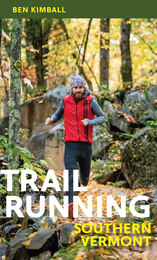 Trail Running Southern Vermont
Ben Kimball
University of Massachusetts Press, 2024 The wild and rural landscape of southern Vermont offers a true bounty of great trail-running opportunities, from out-and-back (or pointtopoint) runs on popular long-distance routes, such as segments of the Long Trail or Appalachian Trail, to quiet, little-known loops hidden away in the woods. This helpful guide is just the resource needed for trip planning or for a spontaneous run in a beautiful place. Local expert trail runner Ben Kimball offers a range of suggested route options, sometimes even several at the same site, for runners of all skill levels. He also provides important practical information, such as the full distance of the suggested route; a difficulty rating; the trail style and type; the total ascent; and directions, along with a detailed description of the trail itself. There are also scannable codes for downloading trail maps to your smartphone. The trails included vary in difficulty and terrain type, and range from low elevations in the Connecticut River Valley to as high as 4,000 feet at Killington Peak in the Green Mountains. This indispensable book is the perfect companion for adventurous runners and hikers interested in exploring southern Vermont.
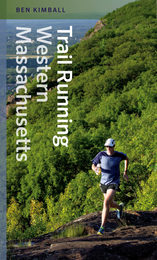 Trail Running Western Massachusetts
Ben Kimball
University Press of New England, 2015 Ben Kimball, a long-time trail runner, provides profiles of fifty-one great trail runs in western Massachusetts. Geographically, this book covers the area between the Quabbin Reservoir and upstate New York, including the Pioneer Valley and Berkshire areas as well as portions of the Taconic Highlands. Elevations range from the lowlands of the Connecticut River and Housatonic River valleys to the state’s highest point at the top of Mount Greylock. The trails profiled represent a range of locations within the region as well as a range of difficulty levels and terrain types. There are options for everyone, from the beginner to the experienced trail runner looking for new options. Each run receives a two-page treatment that includes an informative trail description and a trail map, along with a scannable QR code to download each map to your smartphone. This book will appeal to the entire running community of Massachusetts and the surrounding region, including the Pioneer Valley along the Connecticut River, communities along the Housatonic River corridor in the Berkshires, the many running clubs in the Boston area, and seasonal vacationers.
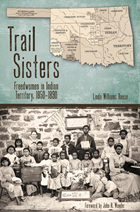 Trail Sisters: Freedwomen in Indian Territory, 1850–1890
Linda Williams Reese, with foreword by John R. Wunder
Texas Tech University Press, 2013
African American women enslaved by the Cherokee, Choctaw, Chickasaw, Seminole, and Creek Nations led lives ranging from utter subjection to recognized kinship. Regardless of status, during Removal, they followed the Trail of Tears in the footsteps of their slaveholders, suffering the same life-threatening hardships and poverty.
As if Removal to Indian Territory weren’t cataclysmic enough, the Civil War shattered the worlds of these slave women even more, scattering families, destroying property, and disrupting social and family relationships. Suddenly they were freed, but had nowhere to turn. Freedwomen found themselves negotiating new lives within a labyrinth of federal and tribaloversight, Indian resentment, and intruding entrepreneurs and settlers.
Remarkably, they reconstructed their families and marshaled the skills to fashion livelihoods in a burgeoning capitalist environment. They sought education and forged new relationships with immigrant black women and men, managing to establish a foundation for survival.
Linda Williams Reese is the first to trace the harsh and often bitter journey of these women from arrival in Indian Territory to free-citizen status in 1890. In doing so, she establishes them as no lesser pioneers of the American West than their Indian or other Plains sisters.
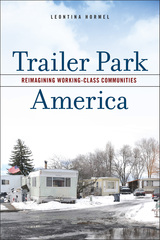 Trailer Park America: Reimagining Working-Class Communities
Leontina Hormel
Rutgers University Press, 2023 In rural northern Idaho in the winter of 2013-2014, Syringa Mobile Home Park’s water system was contaminated by sewage, resulting in residents’ water being shut off for 93 days. By summer 2018 Syringa had closed, forcing residents to relocate or face homelessness. Trailer Park America chronicles how residents dealt with regulatory agencies, frequent boil order notices, threats of closure, and class-based social stigma over this period. Despite all this, what was seen as a dysfunctional, ‘disorderly’ community by outsiders was instead a refuge where veterans, women heads of households, and people with disabilities or substance use disorders were supported and understood. The embattled Syringa community also organized to defend the rights and dignity of residents and served as a site for negotiating with local government, culminating in a class-action lawsuit that reached the federal level. The experiences Syringa residents faced in this conservative, predominately white region of the United States are emblematic of the growing national and global crisis in affordable housing and home ownership, with declining work conditions and incomes for the working-class.
Trailer Park Psalms: Poems
Ryler Dustin
University of Pittsburgh Press, 2023 Winner of the 2023 Agnes Lynch Starrett Poetry Prize
Trailer Park Psalms traces the speaker’s journey beyond his boyhood trailer park, through an American landscape marked by violence—from a gas line explosion in his hometown to his father’s war memories to the scars of colonialism inscribed in place, language, and ecology. Along the way, he searches for sources of awe that might inspire us, even in a compromised world: the everyday miracle of eyesight, the courage of the Voyager spacecrafts, and the “clumsy kindness” of family members trying to mend the damages of the past. In the end, what he finds isn’t faith but the hope that “if there’s a heaven, we will bend / to examine our old selves / and wonder how something so delicate / was ever allowed.”
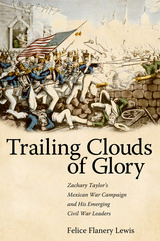 Trailing Clouds of Glory: Zachary Taylor's Mexican War Campaign and His Emerging Civil War Leaders
Felice Flanery Lewis
University of Alabama Press, 2010 This work is a narrative of Zachary Taylor’s Mexican War campaign, from the formation of his army in 1844 to his last battle at Buena Vista in 1847, with emphasis on the 163 men in his “Army of Occupation” who became Confederate or Union generals in the Civil War. It clarifies what being a Mexican War veteran meant in their cases, how they interacted with one another, how they performed their various duties, and how they reacted under fire. Referring to developments in Washington, D.C., and other theaters of the war, this book provides a comprehensive picture of the early years of the conflict based on army records and the letters and diaries of the participants. Trailing Clouds of Glory is the first examination of the roles played in the Mexican War by the large number of men who served with Taylor and who would be prominent in the next war, both as volunteer and regular army officers, and it provides fresh information, even on such subjects as Robert E. Lee and Ulysses S. Grant. Particularly interesting for the student of the Civil War are largely unknown aspects of the Mexican War service of Daniel Harvey Hill, Braxton Bragg, and Thomas W. Sherman.
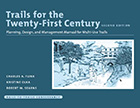 Trails for the Twenty-First Century: Planning, Design, and Management Manual for Multi-Use Trails
Charles A. Flink, Kristine Olka, Robert M. Searns, and Rails-to-Trails Conservancy; Foreword by David Burwell
Island Press, 2001 Communities across the country are working to convert unused railway and canal corridors into trails for pedestrians, cyclists, horseback riders, and others, serving the needs of both recreationists and commuters alike. These multi-use trails can play a key role in improving livability, as they offer an innovative means of addressing sprawl, revitalizing urban areas, and reusing degraded lands. Trails for the Twenty-First Century is a step-by-step guide to all aspects of the planning, design, and management of multi-use trails. Originally published in 1993, this completely revised and updated edition offers a wealth of new information including. - discussions of recent regulations and federal programs, including ADA and TEA-21
- recently revised design standards from AASHTO
- current research on topics ranging from trail surfacing to conflict resolution
- information about designing and building trails in brownfields and other
- environmentally troubled landscapes
Also included is a new introduction that describes the importance of rail-trails to the sustainable communities movement, and an expanded discussion of maintenance costs. Enhanced with a wealth of illustrations, Trails for the Twenty-First Century provides detailed guidance on topics such as: taking a physical inventory and assessment of a site; involving the public and meeting the needs of adjacent landowners; understanding and complying with existing legislation; designing, managing, and promoting a trail; and where to go for more information. It is the only comprehensive guidebook available for planners, landscape architects, local officials, and community activists interested in creating a multi-use trail.
|
|
